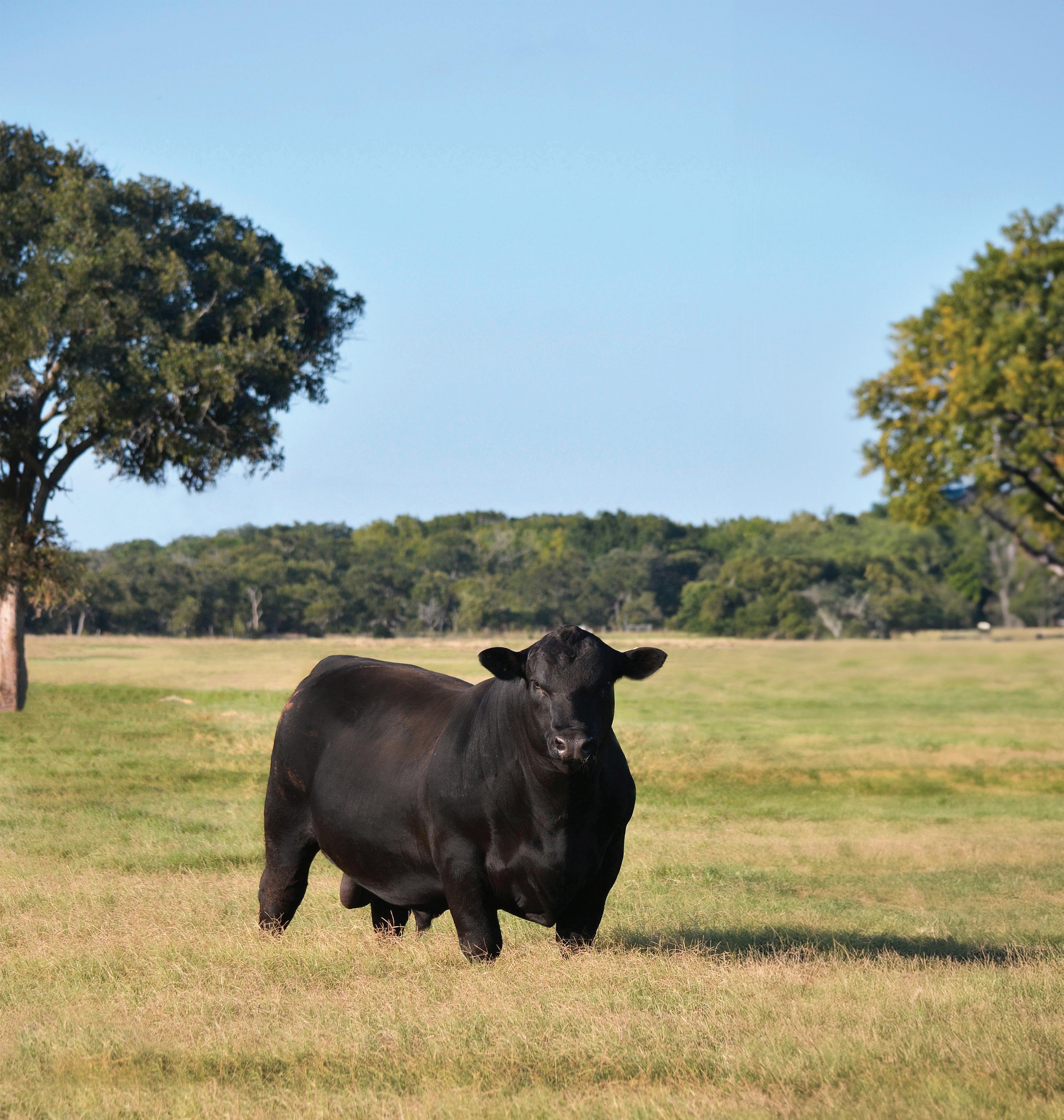




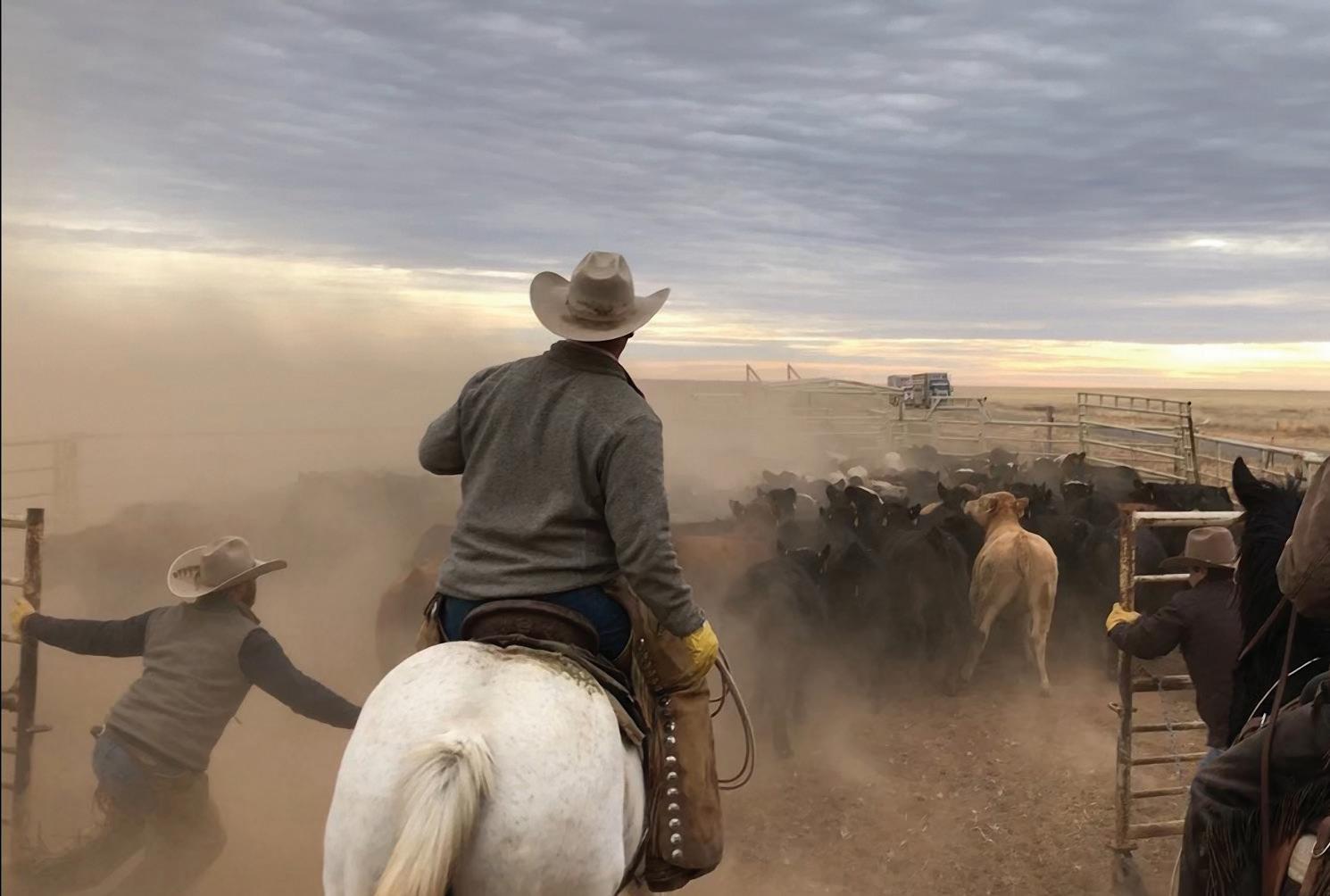

Birdwell Plainview, TX (806) 681-3667



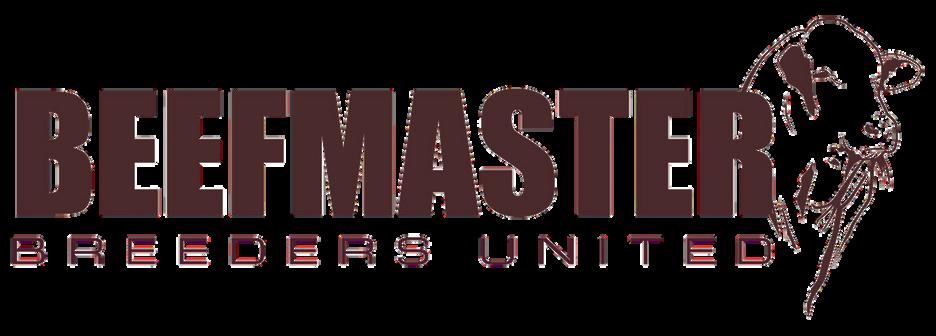
Modern-day conflicts in the age-old battle over water rights and resources.
By Jena McRell
A first-of-its-kind global drought study evaluates effects of intense dry periods.
By Diane Meyer
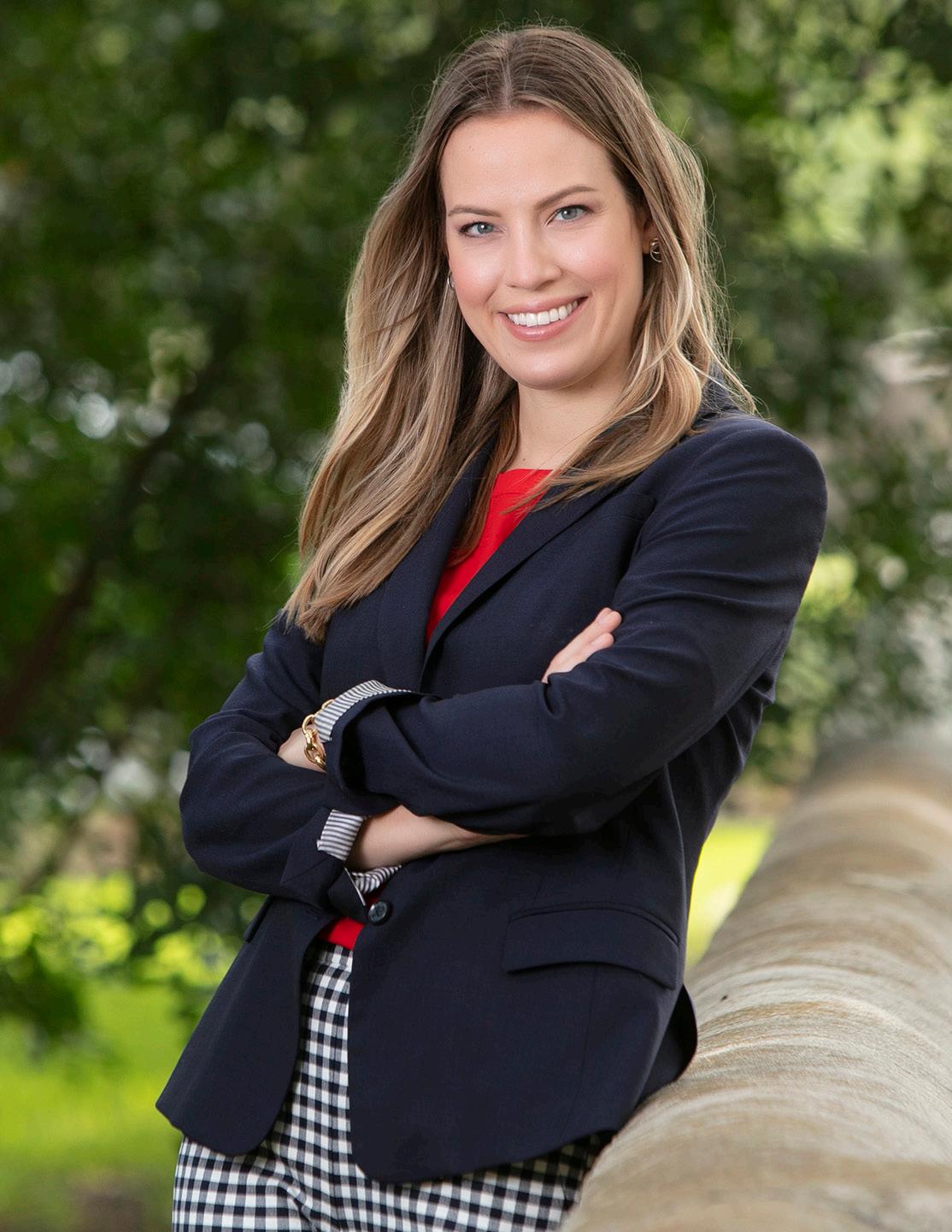
One of many conversations we have been having at Texas & Southwestern Cattle Raisers Association lately is about how to provide additional value to members.
While membership certainly sees benefits through advocacy, education, events and The Cattleman magazine, cattle raisers are ever-changing and so are their needs.
I’ve come to learn that this association’s value will always adapt, and that is what makes Texas & Southwestern Cattle Raisers Association the longstanding and impactful organization it is today.
This month’s content truly speaks to that.
When wildfire hit the Texas Panhandle and Western Oklahoma, the special ranger team sprung to action, with the TSCRA Disaster Relief Fund activating within days. Neighbors came together to donate supplies and resources. We take a first glimpse into this response on page 28.
Texas & Southwestern Cattle Raisers Association also understands there are great challenges ahead, and it’s taken steps to address them.
You can read about the newly launched TSCRA Leadership Development Foundation Working Grant
Program on page 26, providing financial support to individuals looking to begin or grow a business or operation within the beef value chain.
This month’s feature stories dive into one of the most complex issues facing ranchers and landowners — water. We explore a global research study that sheds light on the long-term implications of extreme drought.
We also ask the question, “What is groundwater?” A statewide leader in water issues discusses ownership rights, and what Texas & Southwestern Cattle Raisers Association is doing to protect landowners like you.
Texas & Southwestern Cattle Raisers Association truly is at the forefront of the industry, and I’m constantly in awe of its importance to the cattle community. I hope you feel the same. T C
 Jaclyn Roberts Parrish Executive Director of Communications & Marketing/ Editor-in-Chief, The Cattleman
Jaclyn Roberts Parrish Executive Director of Communications & Marketing/ Editor-in-Chief, The Cattleman

Published by Texas & Southwestern Cattle Raisers Association
P.O. Box 101988
Fort Worth, Texas 76185
Phone: 817-332-7064
Fax: 817-394-1864
Subscription Inquiries: (orders, address change, problems) tscra@tscra.org or 800-242-7820 tscra.org
Jaclyn Roberts Parrish Executive Director, Communications & Marketing/Editor-in-Chief jaclyn@tscra.org • 817-916-1794
Shelby Kirton Manager of Communications & Marketing
Jena McRell Managing Editor
Kayla Jennings Proofreader
Jana Earp Advertising & Partnership Manager jearp@tscra.org • 817-916-1744
Heather Heater Graphic Design & Print Production Manager
Production support by: GRANT COMPANY grantcompany.net
The Cattleman/ TSCRA tscra.org
Cattle Raisers Insurance cattleraisersinsurance.com
Law Enforcement tscra.org, click on Theft & Law
Cattle Raisers Convention cattleraisersconvention.com

A cow-calf pair stands before an inspired sunset near Wellman in West Texas.
Bluebonnets in full bloom.
by Kayla Jennings
Photo by Laurie Martin Photo


Water rights and access, or lack thereof, have frustrated landowners and ranchers in every generation. While times have changed and topics of the conversations may have shifted, the ever-present challenges surrounding water ownership have not.
Amarillo-based attorney Marty Jones knows this well. He has represented clients in legal battles related to groundwater and private property rights for the past two decades.
“Groundwater has led to controversy across the board, and it has been difficult to vindicate your rights when those rights are infringed upon,” said Marty, who presented March 22 during a School for Successful Ranching session at the 2024 Cattle Raisers Convention & Expo in Fort Worth.
Alongside his son, Brantley Jones, both with the Sprouse Shrader Smith PLLC law firm, he has successfully prosecuted water cases before the Texas Supreme Court and the Fifth Circuit Court of Appeals in New Orleans.
He may return to the state’s high court to argue on behalf of property rights in the case Cactus Water v. COG Operating LLC At the heart of the debate lies the question: Who owns water produced as a result of oil-and-gas exploration and production?
Marty and Texas & Southwestern Cattle Raisers Association said the answer is clear. Like all groundwater, produced water belongs to the owner of the surface. That is based on doctrine dating back 100-plus years.
Even so, at time of press, the Texas Supreme Court was weighing the decision of whether or not to take up the important landowner-rights case.
Photo by Wyman MeinzerTo fully understand the complexities involved with current-day water conflicts, including the produced water case, Marty said a historical lens is key. In his presentation to cattle raisers, he recounted the various statutes, regulations, court decisions and common law principles upheld throughout Texas history.

Like the saying goes, “Whiskey is for drinking, and water is for fighting,” conflicts surrounding this finite and essential resource chart back hundreds of years.
In the 19th century, settlers in the American West struggled to maintain and allocate reliable water resources needed for agriculture, industry and infrastructure development.
When Texas officially joined the United States in 1845, it adopted the common law of England, which included provisions related to water law. The doctrine, based on earlier Roman law, said surface owners retained everything between the surface and the center of the Earth and between the surface and Heaven.
“That really set the stage for everything else that followed in water law,” Marty said.
The Texas Supreme Court reinforced the common law in 1904 case, Houston and T.C. Ray. Co. v. East
The court ruled: “It [groundwater] is the same as the land and cannot be distinguished in law from the land. So the owner of the land is the absolute owner of the soil and of percolating water, which is a part of, and not different from, the soil.”
Percolating refers to the movement of water throughout the soil. The early 20th century case made it clear groundwater ownership lies with the owner of the land.
— Texas Supreme Court, 1904 the owner of the land is the absolute owner of the soil and of percolating water.”
Throughout the years, Marty said the Texas Supreme Court heard several challenges to the groundwater ownership principle, but the decisions eventually landed at the same result — the owner of the surface owns the water beneath it.
However, a legal battle in 2012 called the widely held principle into question once again.
In the case of Edwards Aquifer Authority v. Day and McDaniel, two South Central Texas farmers spoke out against a decision made by their local groundwater conservation district.
The regulatory agency declined the farmers’ permit request to source roughly 700 acre-feet of water — an amount they said, as property owners, had right to use. In the lawsuit, the landowners claimed private property had been taken for public purpose without compensation.
In support of the Edwards Aquifer Authority, the Texas Alliance of Groundwater Districts argued that groundwater is not owned by the surface owner until it gets to the surface. They held that is was the local conservation district’s authority to allocate the water in place.
The case eventually landed in the Texas Supreme Court to decipher whether or not landowners can sue a regulatory agency like the Edwards Aquifer Authority for taking their property without compensation.
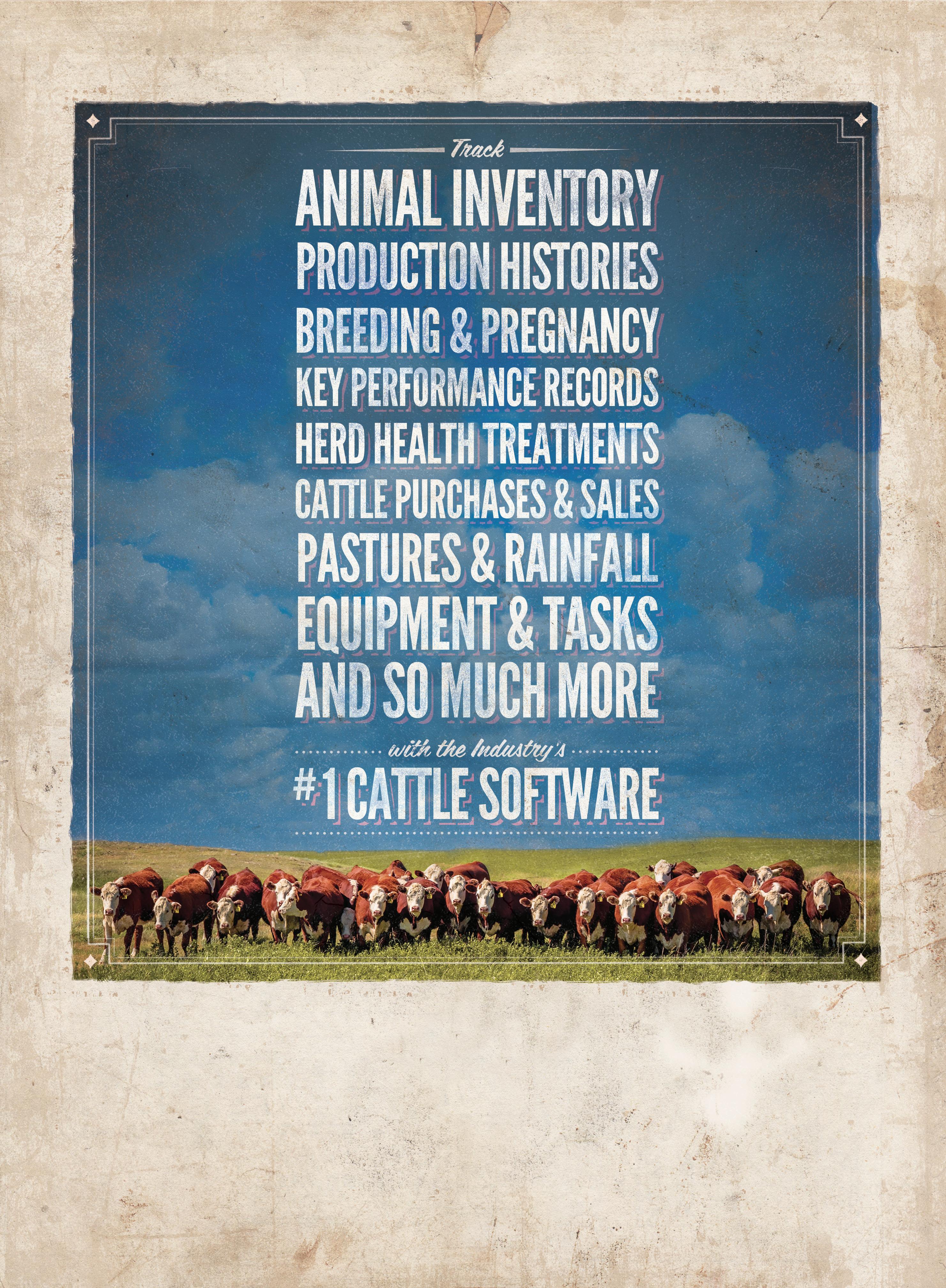
The only thing that takes more work than raising cattle is keeping track of all of the records that go with it. That’s why there’s CattleMax. Whether you’re tracking cattle or keeping records of everything from rainfall to receipts, CattleMax does it all. And does it easily.


Marty Jones, an attorney who has been involved in groundwater cases for more than two decades, presents March 22 during the School for Successful Ranching at the 2024 Cattle Raisers Convention & Expo in Fort Worth.

Marty said landowners and agriculture groups were quick to rally.
Texas & Southwestern Cattle Raisers Association authored an amicus brief that read: “This court and the Texas Legislature have always recognized the ownership of groundwater in place by the owner of the land. Edwards Aquifer Authority and the State of Texas’ submission to the Court requesting a different holding is not supported by law or precedent.
As such, this court should again confirm and make it clear, as it has in the past, that the landowner owns the water beneath their land.”
In the end, that is what the Texas Supreme Court did.
“The Supremes made it clear that they had longago declared that oil and gas in place belonged to the landowner,” Marty said. “Then they said they didn’t really see why there would be a difference with groundwater, and declared that the owner of the surface owned the groundwater in place.”
The basis of the Day case has guided countless more decisions in the decade since.
“After that decision we were able to start tipping away at groundwater district regulation on the premise that it was overly aggressive and resulted in the taking of property,” Marty said.
Soon after came the case Coyote Lake Ranch v. City of Lubbock, which dealt more with land damages as a result of existing water contracts.
Water under the Coyote Lake Ranch, owned by Texas & Southwestern Cattle Raisers Association Past President Hughes Abell, had been leased to the City of Lubbock in
1955. The issue came when the city started constructing a well field, causing long-term damage to the landscape and property.
Marty and Brantley, whose firm represented Abell, cited a ’70s oil-and-gas case that said the lessee must get along with the surface owner when making their arguments. The oil company has a right to explore for oil, but it must respect the rights of the landowner for existing uses, Marty summarized.
Ultimately, the Texas Supreme Court said there is no reason why oil-and-gas law could not be applied to groundwater.
“This was a really big win, because groundwater law until then had been really slow to evolve,” Marty said.
“The Coyote Lake Ranch v. City of Lubbock decision meant that we could move all the oil-and-gas law over to groundwater and apply it.”
Another monumental legal challenge came in 2019. The U.S. Court of Appeals for the Fifth Circuit in New Orleans heard the case Stratta v. Roe — and opened the door for petitioning groundwater challenges in federal court.
Marty’s client and the landowner, Tony Fazzino, located near Bryan, was speaking out against unfair water appropriations by the local groundwater conversation district. He owned about 26 acres and requested a permit for 3,000 gallons a minute to be used in agriculture production. It was denied, even though the city was granted the same amount on a nearby 2.7-acre plot.
The suit was filed under Section 1983 of the Civil Rights Act of 1874, which says someone’s civil rights cannot be violated under color of state law.
Addressing the case in this manner was necessary, Marty said, because state law made it a high financial risk for most landowners.
“Under Texas Water Code, if I sue a water district for violating my rights and I lose, I have to pay their attorney’s fees,” Marty said. “If I win, I cannot recover my attorney’s fees. It’s a one-sided attorney-fee statute; the only one I know of in the state of Texas.”
His son, Brantley, a 34-year-old attorney at the time, wrote the brief and argued the case before the U.S. Court of Appeals. The justices ruled in their client’s favor, creating a new pathway for landowners to vindicate their rights in federal court.
Marty said the decision was a game-changer, because Section 1983 allows the plaintiff, if awarded anything in the lawsuit, to recover his or her attorney fees. If the defendant wins, attorney fees are generally not recovered unless the case was proven frivolous.
The federal court gave insight into Texas’ water law, too.
“The New Orleans court said there’s nothing unclear about Texas law about the ownership of groundwater, citing back to the 2012 Day case,” Marty said.
Until recently, Marty said produced water, brackish saltwater that rises to the surface during oil and gas exploration, was mainly seen as a nuisance. But oil companies and others are finding ways to repurpose or recycle the saltwater for use in the fracking process. Now, produced water can be worth millions.
He said they have seen several major industry players that have closed multimillion-dollar deals for produced water rights — not freshwater, specifically produced water.
As their firm awaits news from the Texas Supreme Court on the Cactus Water v. COG Operating LLC case, which will ultimately determine the ownership of produced water, Marty said they believe the question of ownership is simple: it belongs to the owner of the surface estate.
“Under the Edwards Aquifer Authority v. Day and McDaniel case, we own the water,” he said. “Remember, the surface owner owns everything from the surface to the center of the Earth.”
Produced water rises to the surface during oil-and-gas exploration and production. It is groundwater found in deep formations, and while the exact chemical makeup varies by region and lifespan of the well, it is mostly brackish saltwater.
According to groundwater expert and attorney Marty Jones, for every barrel of oil generated from a well, approximately five barrels of water can rise up, too. As the well depletes, it may be as high as 10 barrels of water per one oil barrel.
In recent years, researchers have been studying ways to recycle and repurpose produced water. Among the initiatives is the Texas Produced Water Consortium housed at Texas Tech University. The consortium said its long-term goal is to explore options, alternatives and potential economic impacts for the billions of gallons of produced water in Texas each year.
His client owns Cactus Water, a company that purchased roughly 80,000-acres of water rights in the oiland-gas country of West Texas. Cactus Water argues that while COG Operating holds leases for oil, gas and other hydrocarbons on these properties, that lease does not include produced water. If the oil company wants access to the produced water, the surface owner should be paid.
“It is a big deal, and obviously one that the TSCRA membership has a huge interest in,” Marty said. “It is another source of revenue for landowners.”
Similar to the landmark cases up until now, Texas & Southwestern Cattle Raisers Association again filed an amicus brief with the Texas Supreme Court, urging its review of this case and consideration of private property rights.
From oil-and-gas country in West Texas to addressing the population surge along the I-35 corridor, the intensity around water use, permitting procedures and regulation will remain as part of the landowner’s plight.
“There is, and will always be, a finite demand,” Marty said. “Cattle raisers want to preserve their water so they can have livestock use that water. There’s just this growing pressure always to find water sources for Austin and Dallas.
“As we see it, if Brantley’s 2-year-old son decides to become a lawyer, he could be addressing groundwater issues the rest of his career, too.” T C
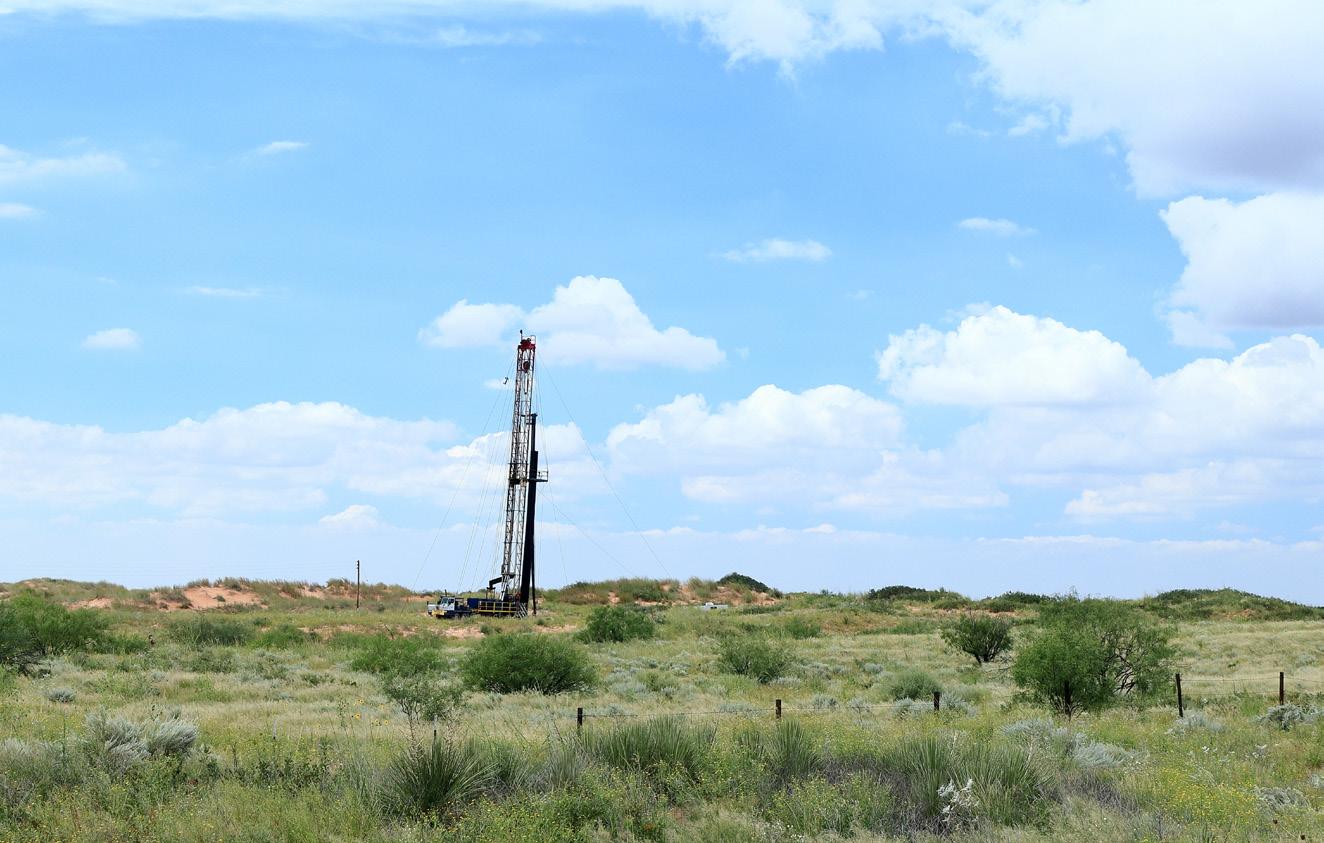
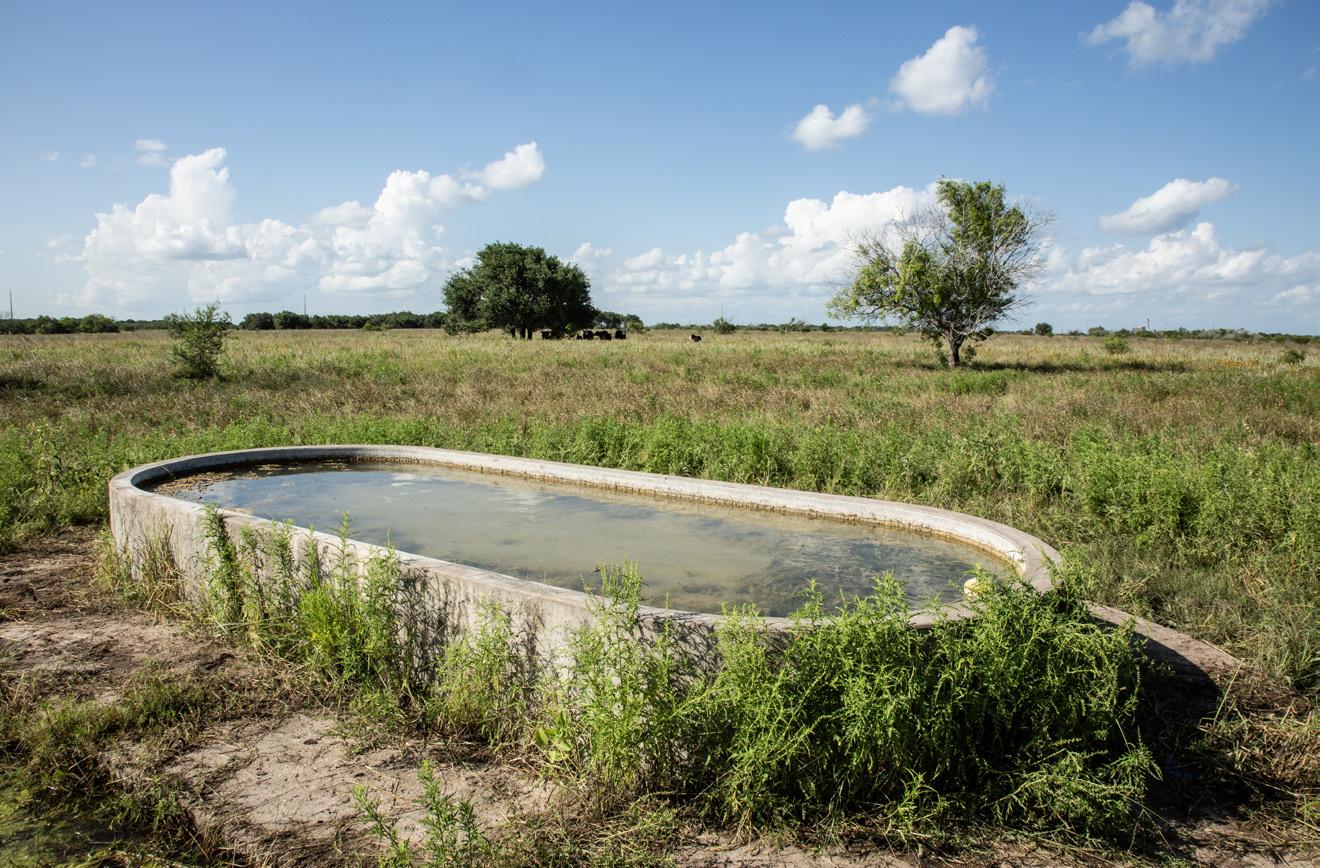
There is, and will always be, a finite demand.”The Texas Supreme Court could again review the basis of groundwater ownership in a case involving produced water, a by-product of oil-and-gas exploration and production. Bottom photo by Wyman Meinzer. — Marty Jones, Sprouse Shrader Smith PLLC


Tauramox™ Injectable Solution, the affordable alternative to Cydectin® (moxidectin) Injectable, runs gastrointestinal roundworms, lungworms, cattle grubs, mites and lice out of town. Expect the same weight gain advantage as with Cydectin® Injectable, but at a lower cost — it’s called swagger. Get the moxi with Moxie, from your animal health provider. For more information, visit Norbrook.com.

Cattle must not be slaughtered for human consumption within 21 days of treatment. This drug is not approved for use in female dairy cattle 20 months of age or older, including dry dairy cows. Use in these cattle may cause drug residues in milk and/or in calves born to these cows. A withdrawal period has not been established for preruminating calves. Do not use in calves to be processed for veal.
A first-of-its-kind global drought study evaluates effects of intense dry periods.
By Diane MeyerApril showers bring May flowers…and grasses, shrubs and forbs. The landscape transforms as greenery takes hold. Armed with rainfall, a select few species exert dominance, while others recede. When precipitation fades, competition escalates over limited resources.
For generations, stewards have relied on grazing animals to help maintain plant diversity and productivity. In times of moisture, which can be rare across the Southwest, it remains critical to monitor the rangeland health. What is growing now could offer an advantage when the next dry spell comes around.
With extremes in weather patterns expected to escalate, a multinational team of researchers embarked on a groundbreaking endeavor to unravel the impacts of limited rainfall and severe droughts.
An ecology team from Texas A&M University contributed to this global study. Their findings reveal a narrative of setbacks and resilience, offering valuable insights as a looming La Niña foreshadows a transition to dry weather patterns later this year.
 Photo by Wyman Meinzer
Photo by Wyman Meinzer

On the western edge of the Edwards Plateau, nearly 30 miles south of Sonora, Texas A&M professor William Rogers, Ph.D., has led multiple ecology studies at the Sonora Station, part of Texas A&M’s AgriLife San Angelo Research and Extension Center.
In 2017, this site became one of 100 participating locations spanning six continents, dubbed the International Drought Coordinated Network.
Initiated by Colorado State University professors Melinda Smith and Alan Knapp, the study aimed to standardize experimental protocol across diverse environments to make inferences on widespread effects of extreme drought conditions.
“Too often when we’re trying to assess the role of drought in these grass and shrubland ecosystems, we’re not comparing apples to apples with our
studies,” Rogers says. “Historically, it was very difficult to look for broad generalities.”
Participating research teams were solicited to implement the same experimental design — all 100 sites had identical plot dimensions, data collection procedures and shelters that excluded rainfall to the same degree.
Careful consideration was given to simulating drought conditions across all plots so that each ecosystem was similarly stressed. A percentilebased drought approach was adopted to gauge the maximum stress these ecosystems could endure. Researchers sought to simulate a 1-in-100-year drought event tailored to each site’s climatic history, and then assessed how vegetation responded.
The first wave of the study evaluated productivity — or biomass — of herbaceous species, and results published in the Proceedings of the National Academy
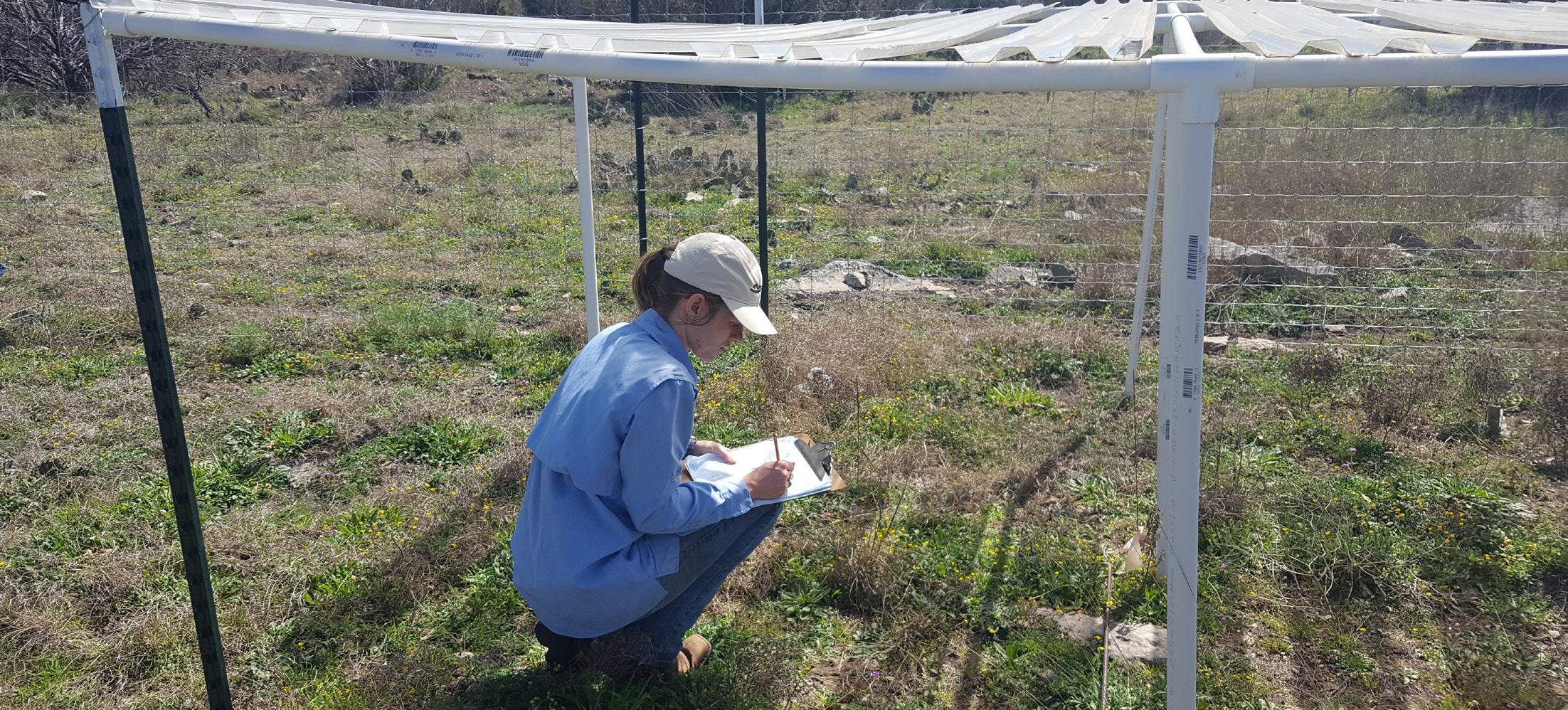
As the first graduate student facilitating the global drought research at Sonora Station, Heather Hannusch, pictured, was responsible for setting up each plot according to the study’s established protocols. Now with Texas Parks and Wildlife as a habitat conservation specialist, she uses similar research methods in her restoration projects. Courtesy photo.
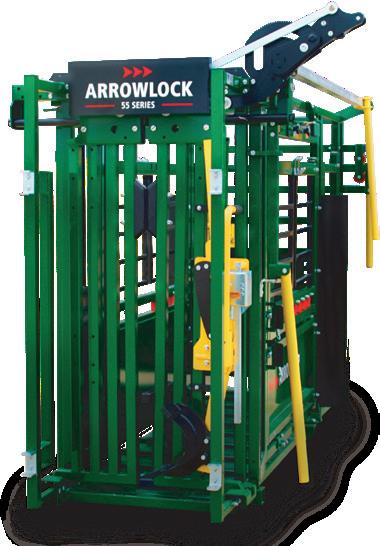
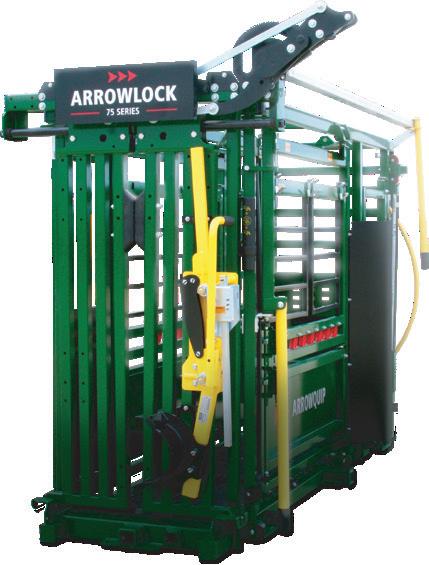



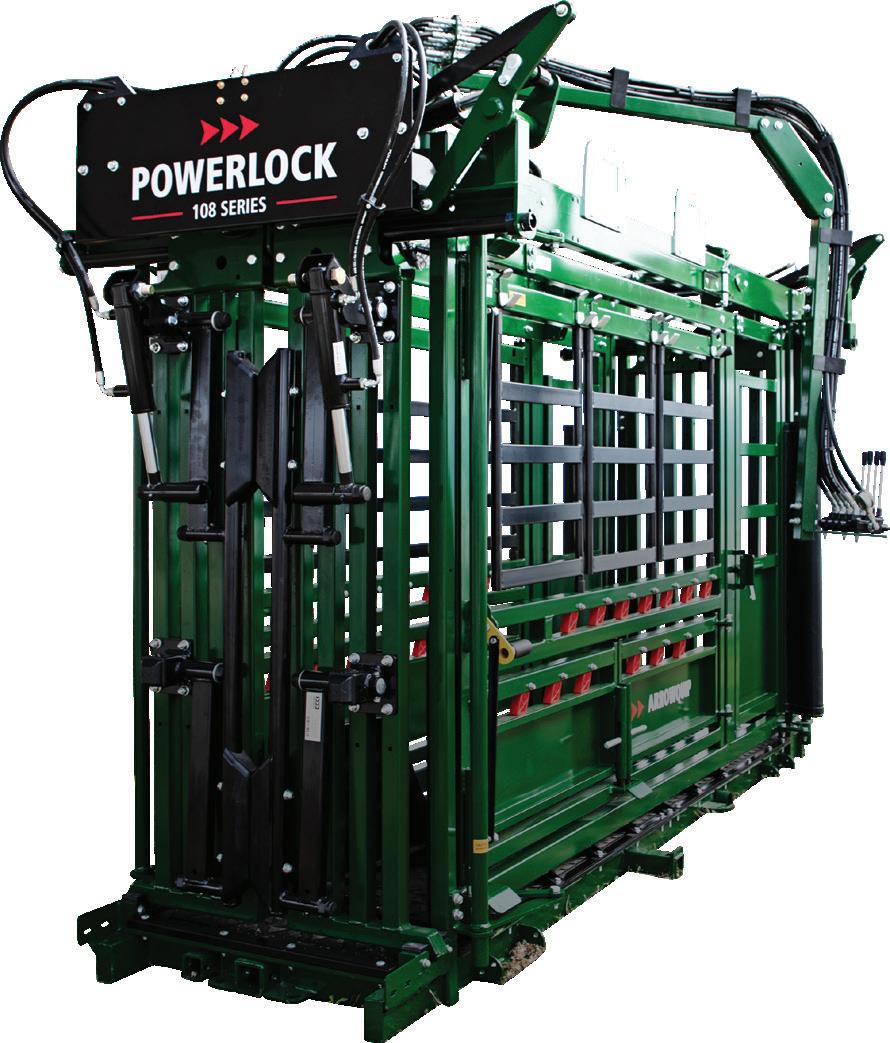

WHERE SEAMLESS SETUP AND UNPARALLELED SAFETY MEET.
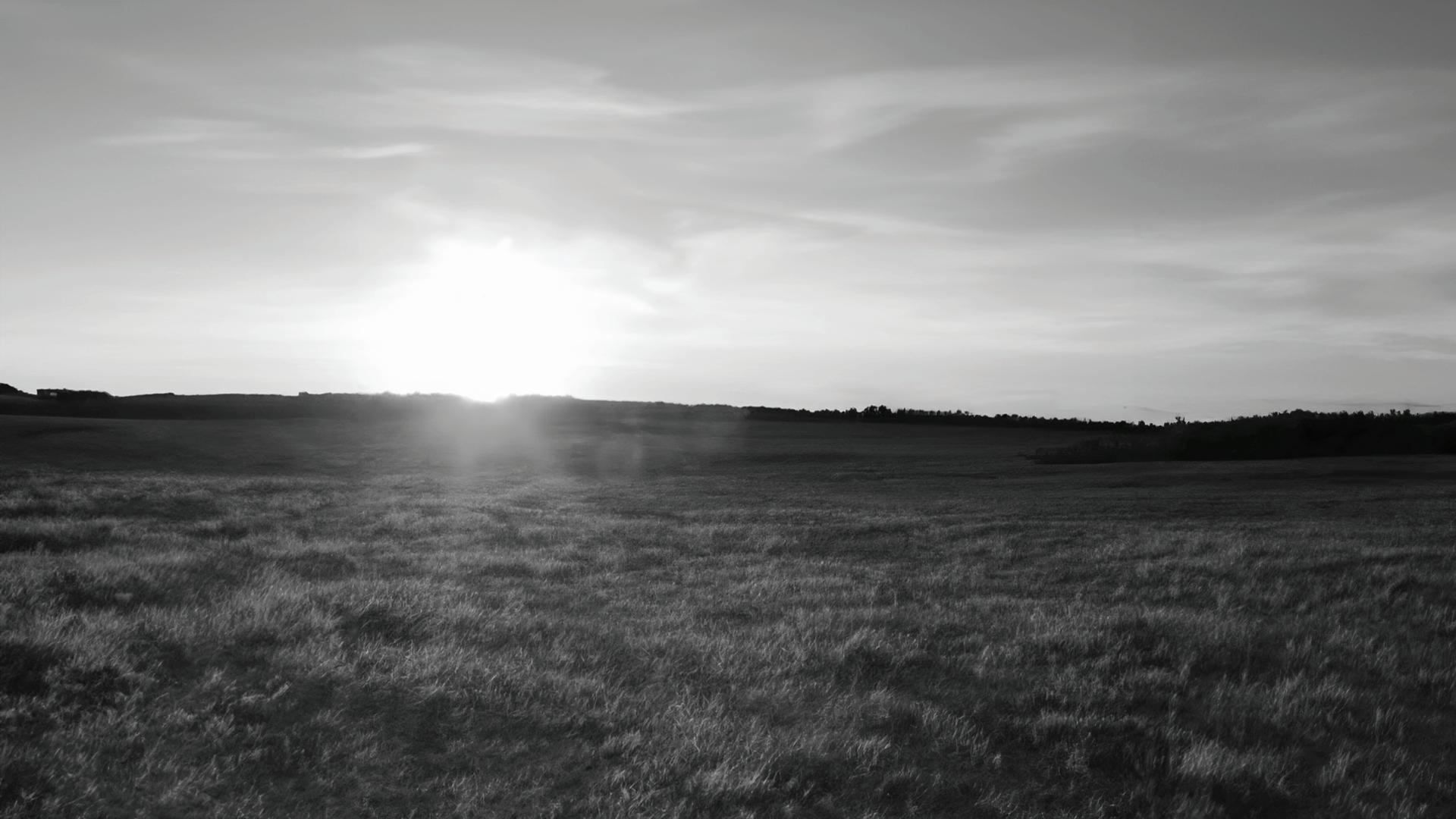





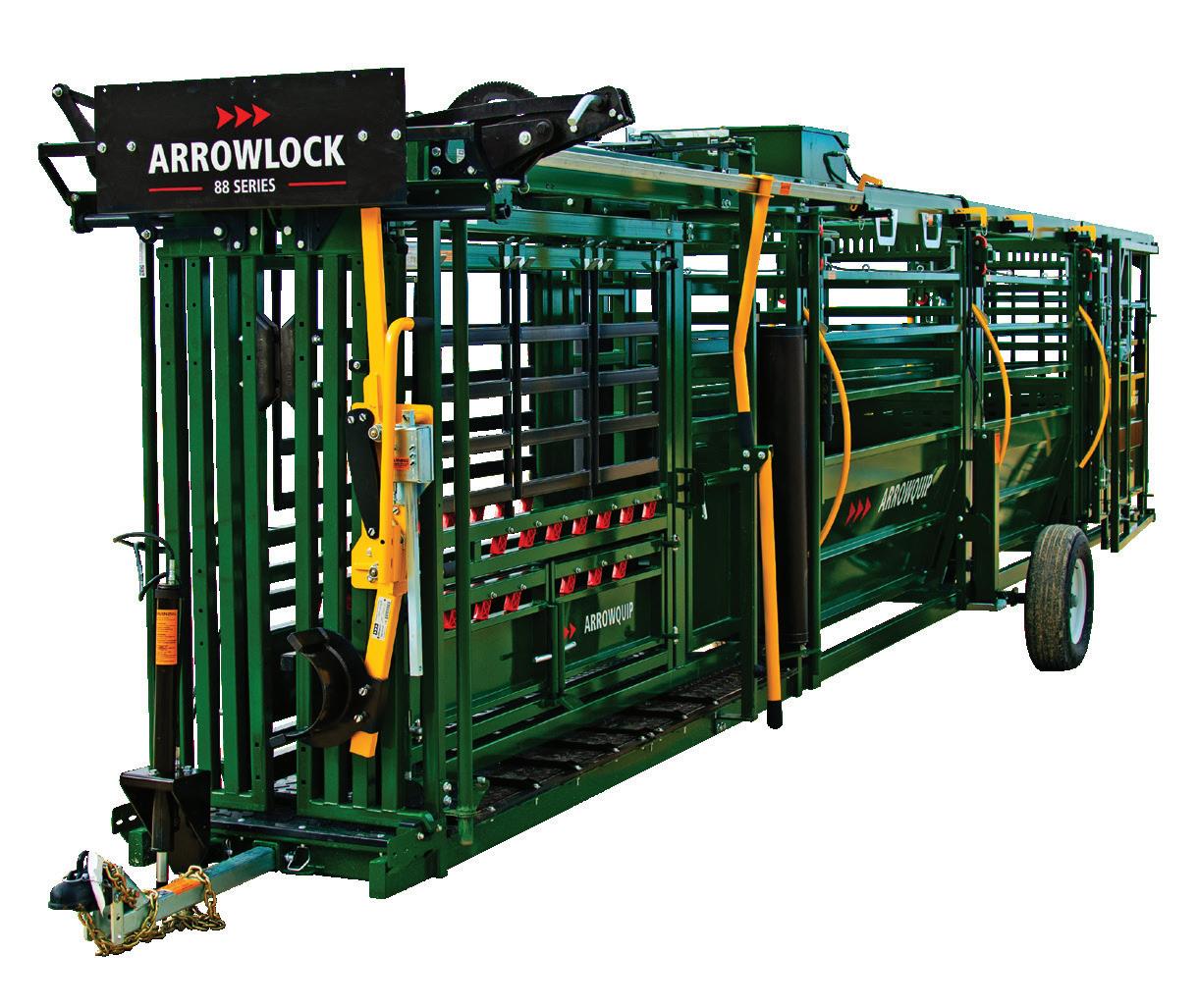







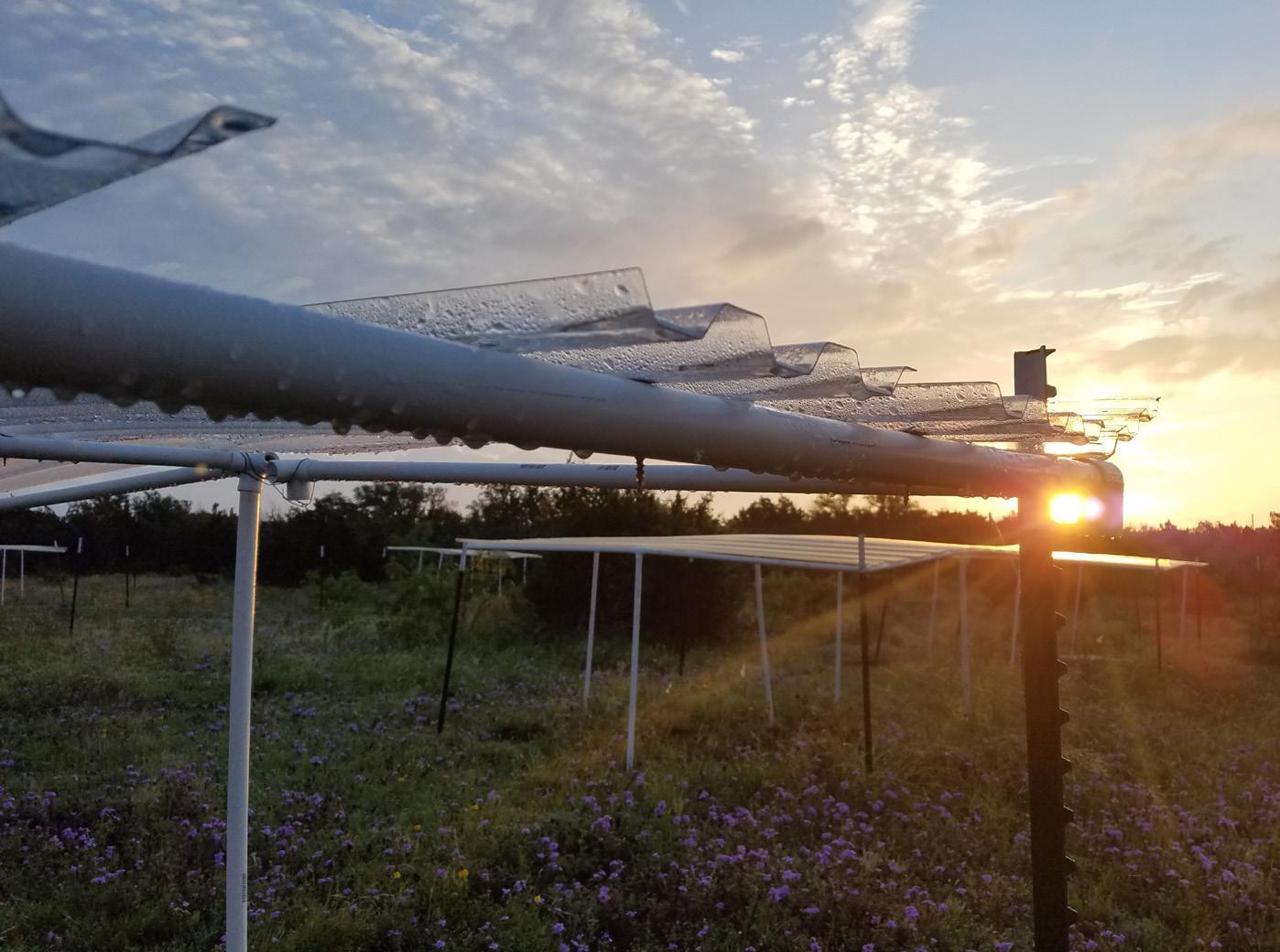

of Sciences show surprisingly consistent consequences across the board.
“After a full growing season of control plots that received ambient rainfall and experimental plots that had reduced rainfall, results show that we’ve been vastly underestimating the negative impact of these kinds of drought events on grassland productivity,” Rogers shares.
Globally, a substantial 60% average decline in biomass productivity was measured, but the Texas A&M team discovered more to the story.
With an arid climate, rangeland at the Sonora Station is characterized by dry, rocky soils and is home to cool and warm-season grasses, as well as annual and perennial forbs. When drought was applied, the heterogeneity of those plant communities significantly decreased, but demonstrated an encouraging amount of resilience .
Then-graduate student Heather Hannusch, now a natural resources coordinator with Texas Parks and Wildlife, was surprised to discover that certain species bounced back considerably better than others, a phenomenon called asynchronous response and compensation.
“We found that the amount of biomass from live grass had been decreased by drought, but live forb biomass was increased by drought,” she says. “As the cover and the resource competition by these grasses declined, the forbs were able to take advantage of that and respond more quickly to resource availability and actually increase their biomass.”
The different responses to changing precipitation patterns point to the importance of species diversity, Hannusch notes. Similar to a diverse investment portfolio in a financial retirement account, strong biodiversity enhances the likelihood that an ecosystem will thrive during changing environmental conditions — often called the portfolio effect.
“There’s a greater risk of losing a monoculture during a drought,” she says. “Not having some sort of diversity there is going to leave the soil open to erosion, and exotic and woody plant invasion, too.”
Safeguarding species diversity and rangeland productivity is complex.
“For decades, land managers have struggled with woody encroachment, historically thought to have been driven by fire suppression and overgrazing,” Rogers says. “That led to the loss of grasses and an increase in woody plants like juniper, mesquite and prickly pear cactus.” These challenges and transformations are threats to rangeland ecosystems globally, particularly in arid regions.
These invasive woody plants drive problems like allergic asthma and increase wildfire risk. Unexpected wildfire can be devastating, as seen recently in the Texas Panhandle fires. In this scenario, fire led to substantially more harm than good.
Even so, as an ecologist, Rogers researches fire ecology and how prescribed fire can be effectively used to reduce woody encroachment and increase grass productivity. “In addition to the positive effects on plant communities
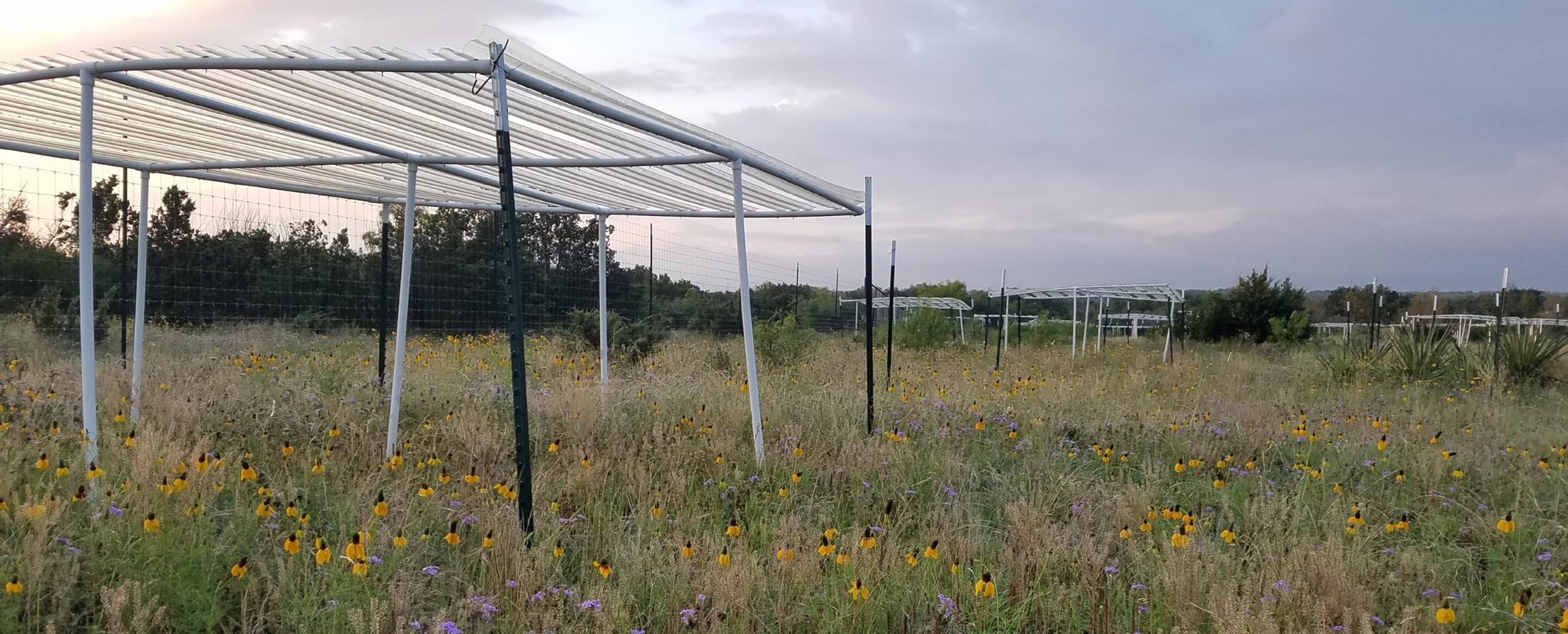
and ecosystem processes, the use of prescribed fire to mitigate against future wildfire events is a wellestablished management activity,” he says.
In addition to the plots that were part of the International Drought Coordinated Network, his team set up experimental plots to see how herbaceous communities responded to prescribed fire and nitrogen deposition in the face of drought. Hannusch, who led set-up efforts, says the application of prescribed fire benefited live forbs production long-term.
These findings are on par with another recently published study, where Rogers reports rangeland restoration was achieved after setting hot fires that reduced woody density without negatively impacting herbaceous grasses or soils. Many historical grasslands and savannas, he observes, are being transformed to woody dominated landscapes because of anthropogenic interventions of these critical processes.
“Prescribed — or controlled — fire can not only rejuvenate and enhance the productivity of the grasses that livestock and many wildlife prefer, it can reduce woody encroachment and fuel buildup that may eventually drive an unintended catastrophic wildfire,” he says.
Hannusch and her colleagues at Texas Parks and Wildlife proactively conduct prescribed burns to protect the state’s parks, natural areas and surrounding communities. She adds that for cattle raisers, patch burn grazing is an opportunity to rotate cattle due to their instinct to graze recently burned areas where plant tissue tends to be higher in nutrients.

Rogers cites peers who are researching the inherent link between fire and large animal grazing.
Grazers generally seek recently burned areas because vegetation grows back more nutritiously and with fewer digestive inhibitors or other chemical deterrents. When another area burns, animals move on, allowing the grazed area to recover.
“It creates a dynamic shifting equilibrium on the landscape through that cycle of fire and grazing,” Rogers says.
Lately, livestock are in competition with other species over natural resources.
Non-native axis deer, originally imported from India for private hunting operations, have become naturalized over time after escaping fenced hunting lands. These axis deer prefer to graze grass, whereas white-tailed deer are mostly browsers and eat woody plants and forbs.
Likewise,This is problematic, Rogers shares, because axis deer are competing directly with livestock for fine fuels and herbaceous forage.
“It’s altering the ability of landowners and managers to utilize fire to manage their landscapes, because of this nonnative ungulate that’s become increasingly abundant on the landscape,” he says. “And that’s going to feedback to some of these drought phenomena and woody encroachment concerns that degrade rangeland ecosystems and threaten the livelihoods of landowners.”
If these intense weather patterns manifest as predicted, researchers like Rogers and Hannusch are eager to contribute to efforts to protect ecosystems and the ranching way of life.
“Let’s find ways to be ready to act accordingly in a more proactive, as opposed to reactive, manner,” Rogers encourages. “Developing a culture of preparedness that will allow us to adapt to and mitigate against the challenges ahead is one of the greatest contributions those of us committed to the understanding and management of natural resources can provide.” T C
Diane Meyer is the associate director of content for Grant Company based in St. Joseph, Missouri.
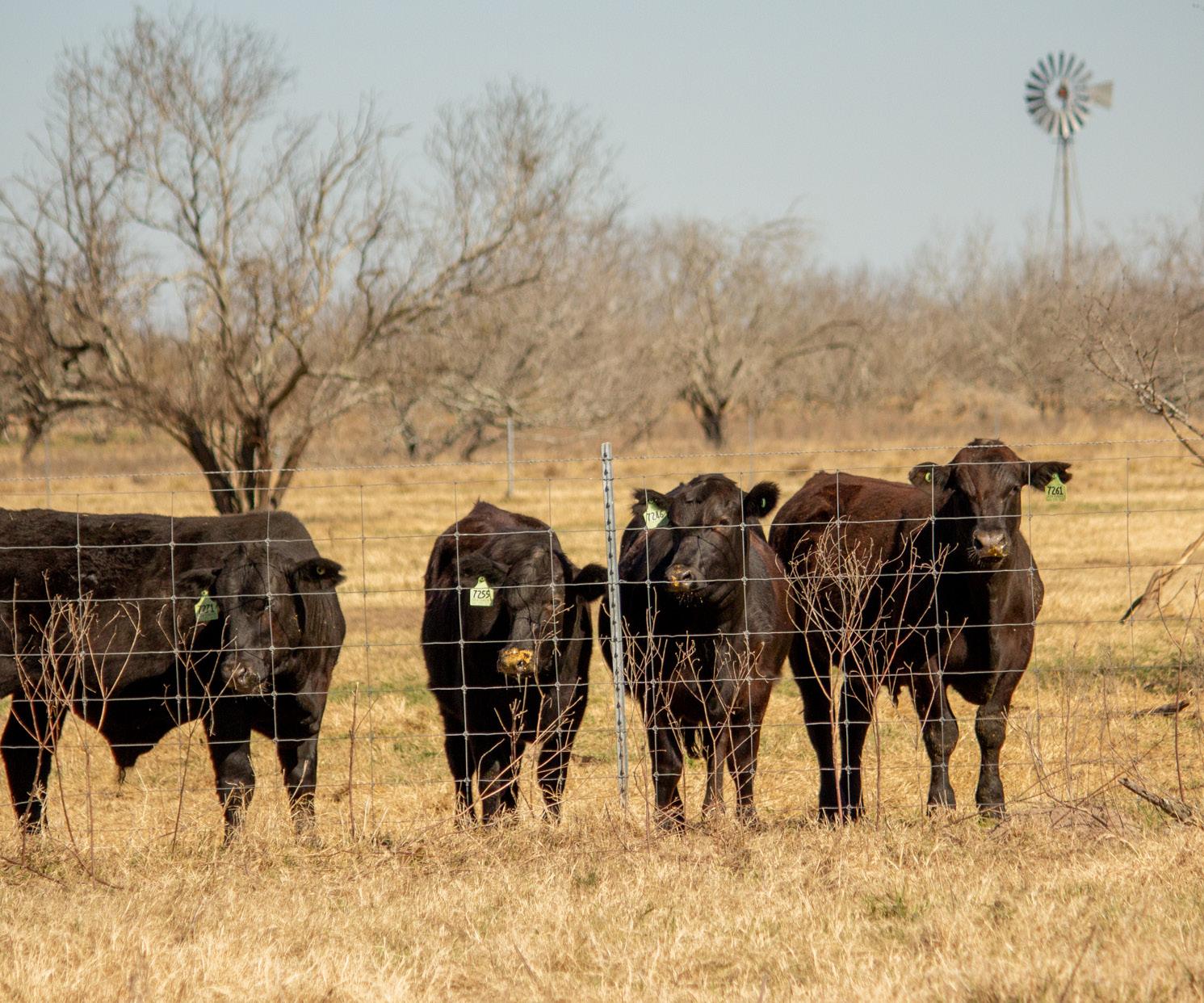

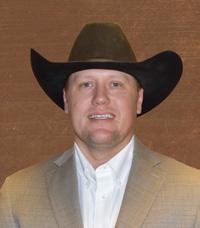
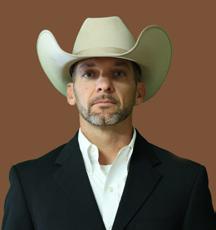
Cactus Feedyard
Matthew Turney, Manager
Cactus, TX office: (806) 966-5151 cell: (806) 282-7077
Centerfire Feedyard
Adam Gerrond, Manager Ulysses, KS office: (620) 356-2010 cell: (806) 390-9034
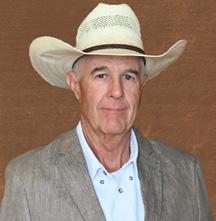
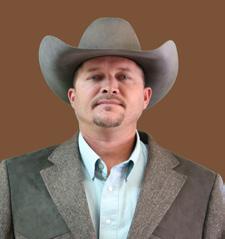

Frontier Feedyard
Jon Vanwey, Manager Spearman, TX office: (806) 882-4251 cell: (719) 251-2381
Stratford Feedyard
Pistol Audrain, Manager
Stratford, TX office: (806) 396-5501 cell: (806) 753-7133
Burlington Feedyard
Logan Hardin, Manager
Burlington, CO office: (719) 346-8532 cell: (620) 575-6702
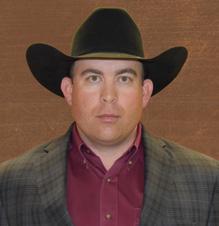
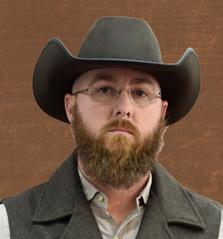

Southwest Feedyard
Kacey Graham, Manager
Hereford, TX office: (806) 364-0693 cell: (806) 316-8799
Hale Center Feedyard
Rusty Jackson, Manager
Hale Center, TX office: (806) 879-2104 cell: (806) 773-9457
Ulysses Feedyard
Adam Gerrond, Manager
Ulysses, KS office: (620) 356-1750 cell: (806) 390-9034
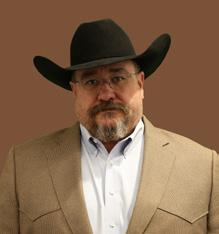
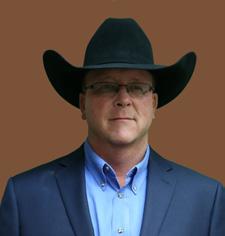
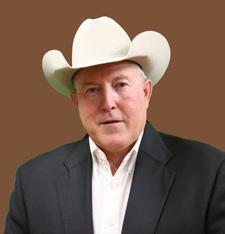

Wolf Creek Feedyard
Keith Brinson, Manager Perryton, TX office: (806) 435-5697 cell: (806) 282-7588
Wrangler Feedyard
Randy Shields, Manager
Tulia, TX
office: (806) 583-2131 cell: (806) 290-0559
Syracuse Feedyard
Phil Moreman, Manager
Syracuse, KS office: (620) 384-7431 cell: (806) 340-4790




Once there was a time when a student could graduate from college, take out a bank loan, buy a parcel of land and begin to ranch full-time. They could make a living for their family through the land and cattle, one day paying back their debts and owning a thriving ranching business.
Those days of the American ranching dream are over. An unpredictable political environment, inflationary prices and fragile markets have cracked the shell of surviving solely off agriculture.
This reality explains why the average age of U.S. ranchers and farmers inches upward each year, now hovering at 60 years old. Even those with parents or grandparents in agriculture are leaving the beef industry at an alarming rate to outside industries.
Texas & Southwestern Cattle Raisers Association has weathered 147 years of existence, and if the intent is to thrive for another century and a half, it’s time to pave a way for future generations.
Earlier this year, the association launched the TSCRA Leadership Development Foundation, a 501(c)(3) entity committed to future land and livestock stewards. The foundation focuses on youth, young producers and professionals — but more than anything, its goal is to support the beef industry’s future.
Toward that objective, the foundation recently announced its newest initiative, the TSCRA Leadership Development Foundation Working Grant Program.
The program seeks to provide capital to those seeking to start or expand a business in ranching or beef production. The cash funds are not distributed as a loan, nor do they provide any expectation of return except one: grow a long-term career in the beef industry.
The program was established to assist individuals — of any age, race, gender, location, disability, industry segment or background — who need cash funds to enter or remain involved in beef production.
The grant program will accept applications during two open periods each year, one in May and November.
Individuals who have had difficulty obtaining conventional financing can request funds to meet down-payment requirements, or to build onto an existing operation or business. The application maximum request is not capped.
Applicants will be required to submit information detailing their financial needs, how they plan to use the grant, their budgets, cash flow projections and more. They’ll also be screened with background and credit checks.
Texans and Oklahomans with businesses in the ranching sector, from veterinary clinics to packing plants and everything in between, are invited to apply.
If not already established, applicants will be advised to partner with a local agricultural banker or lending operation to grow the program’s business plan.
Applicants will also be provided with educational material in their specific industry segment, designed to guide them in financial and business decisions.
Candidates will be reviewed by the TSCRA Leadership Development Foundation board of directors and could be granted, partially funded or denied. If denied, applicants are encouraged to apply again. If awarded, they can reapply after a two-year period.
Cash capital will be distributed to applicants within 90 days of the review period. Grant recipients will be expected to show proof of funds being used as described in the application.
The TSCRA Leadership Development Foundation Working Grant Program’s goal is to see individuals enter into or remain in the industry when they otherwise would not have had the opportunity. The barriers to entry into the beef industry are great enough, financial burden should not be a limiting factor. T C
Rep. Cole Hefner was born and raised in East Texas, and currently resides in Mount Pleasant.
He has been representing the people of House District Five since 2017. District Five encompasses Camp, Rains, Titus, Upshur, Wood and parts of Smith counties.
Before being elected to the Texas House of Representatives, Hefner served as County Commissioner for Upshur County. He also ran his own construction business for 16 years and eventually took over his family’s commercial construction company. He is currently a small business owner in the insurance industry.

During the 88th Regular Session, Hefner helped champion efforts for Texas ranchers and landowners. Most notably, he co-authored Texas & Southwestern Cattle
Raisers Association priority legislation, House Bills 2308 and 1750. Both of those bills updated and strengthened the state’s Right to Farm laws, and will be critical to Texas agriculture in the years to come as the state continues to experience unprecedented growth and development.
Currently, Hefner is a member of the Public Education Committee, Ways and Means Committee, Select Committee on Educational Opportunity and Enrichment, and Calendars Committee.
His experience in public service and private industry has given him a deep understanding of the need to reduce government intrusion into the lives and businesses of Texans.
Hefner and his wife, Kerri, have seven children. T C
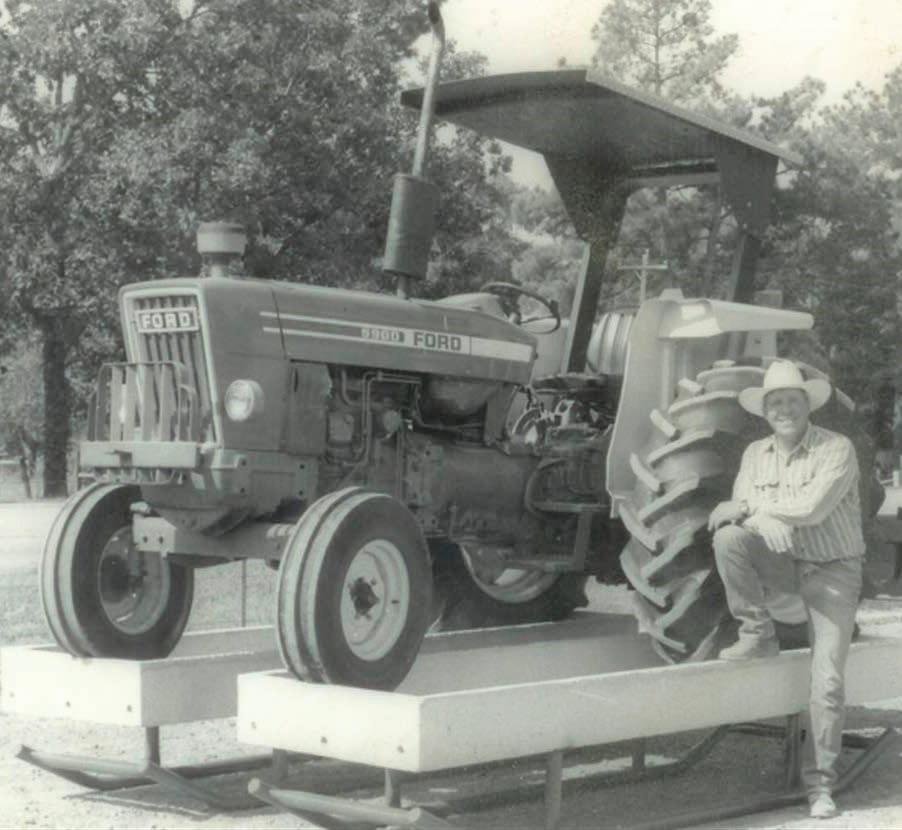

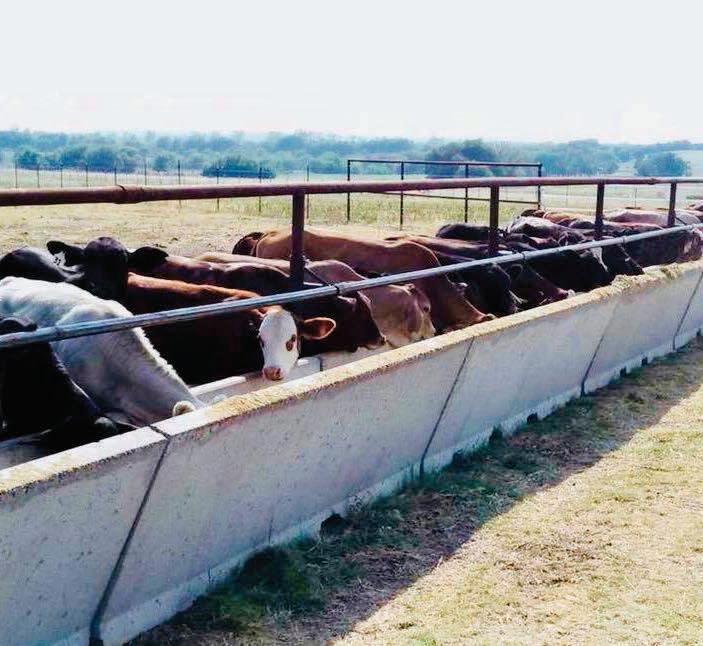

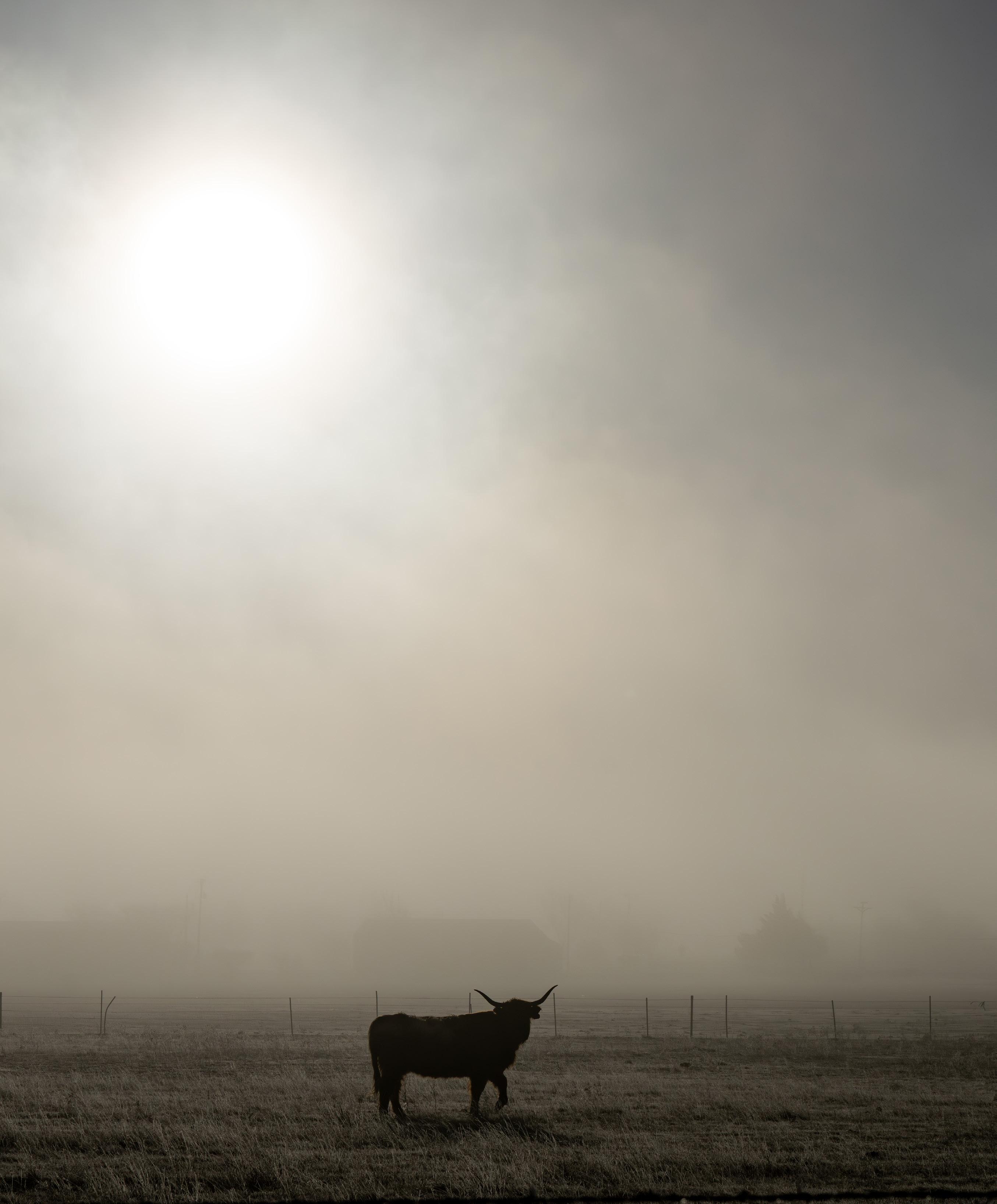
The largest wildfire in Texas history leaves a painful mark in the Panhandle.By Jena McRell
Scars left behind in the wake of the Smokehouse Creek fire and others throughout the Panhandle region in late February and early March will take years, if not generations, to fade.
In the hours before fires took hold, the landscape was green and forages plenty. Cattle grazed the quiet pastures, and barns were fully stocked with feed and supplies in anticipation of the coming calving season. Ranchers stood at the ready, awaiting the herd’s new additions and promise of the next generation.
Then the winds shifted.
The Smokehouse Creek fire ignited Feb. 26 just north of Stinnett, and for nearly three weeks, firefighters and landowners battled its relentless flames. Strong and shifting winds pushed the inferno forward, as the fire blackened more than 1.2 million acres across several counties.
The largest wildfire in Texas history impacted those in rural communities or living on ranches and farms the hardest. They lost everything — homes, countless miles of fence, equipment and their livelihoods. Preliminary reports suggest a harrowing number of 7,000 to 10,000 head of livestock perished, but losses are difficult to quantify with impacts to cattle extending long after the smoke clears.
Investigations are ongoing about the cause of the Smokehouse Creek Fire. Utility provider Xcel Energy issued a statement that said its equipment appeared to have sparked the fire. While the company accepted some responsibility, it denied claims of negligence in maintaining infrastructure.
Despite the overwhelming tragedy faced by those affected by the Texas Panhandle and Western Oklahoma wildfires, hope was found in the eyes of strangers, trailers loaded with hay from faraway neighbors, and gentle words of encouragement from family and friends.
Texas & Southwestern Cattle Raisers Association
Special Rangers were quick to act. Supporting first responders and law enforcement officials, local special rangers helped secure what was most important: people. From here, they assisted securing livestock and turned to distributing needed hay, fencing and other resources to those in need.
Even as green grasses begin to regrow in the charred pastures, support for those impacted by the wildfires will be critical for weeks and months to come. Rebuilding will take time, and a considerable amount of resources.
Toward that effort, Texas & Southwestern Cattle Raisers Association has been humbled by the generous support given through the TSCRA Disaster Relief Fund. At the time of press, more than $1.3 million has been raised, with additional funding on the horizon.
“On behalf of cattle raisers, and the families and ranchers impacted, we cannot thank donors enough,” says Carl Ray Polk Jr., association president. “It’s always been impressive to me to see our industry open their gates, take out their checkbooks and support families and friends impacted by disasters like this one.”
Another fundraising opportunity will take place May 6 at the Drover Hotel in Fort Worth. The Four Sixes Ranch, a longtime partner of Texas & Southwestern Cattle Raisers Association, announced it will host a Smokehouse Creek Fire Relief Benefit that will feature Ryan Bingham. The event has the potential to expand the dollars the TSCRA Disaster Relief Fund will donate to wildfire victims even further.
“Funds raised through the 6666 Smokehouse Creek Fire Relief Benefit will support the TSCRA Disaster Relief Fund and will be sent directly to ranchers to help them rebuild,” Polk says. “TSCRA is honored to be a part of this effort and grateful to the Four Sixes Ranch for its leadership and generous support of cattle raisers.” T C
Texas & Southwestern Cattle Raisers Association encourages cattle raisers impacted by wildfires in the Texas Panhandle and Western Oklahoma to apply for financial aid through the TSCRA Disaster Relief Fund.
The TSCRA Disaster Relief Fund, a 501(c)(3) nonprofit supporting ranchers and landowners impacted by disasters, will distribute financial assistance to reduce the financial burdens incurred by cattle raisers from recent wildfire damages that were not covered through insurance or other means of aid.
The open application window comes after hundreds of individuals and companies donated generous gifts in response to the second largest wildfire event in the United States. Donations continue to be accepted to benefit ranchers and landowners impacted by this disaster.
Ranchers and landowners from disaster declared counties impacted by recent wildfires are eligible to apply in the open application period. Applicants are not required to be a member of Texas & Southwestern Cattle Raisers Association to qualify for aid.
To apply for funding, individuals must submit an online application detailing loss or damages because of the fires. Applicants should attach documentation which can include insurance policies and claims, inventory records, photographs and other reports.
To learn more about the TSCRA Disaster Relief Fund, including information on how to donate or apply for funds, visit tscra.org/disaster-relief-fund.
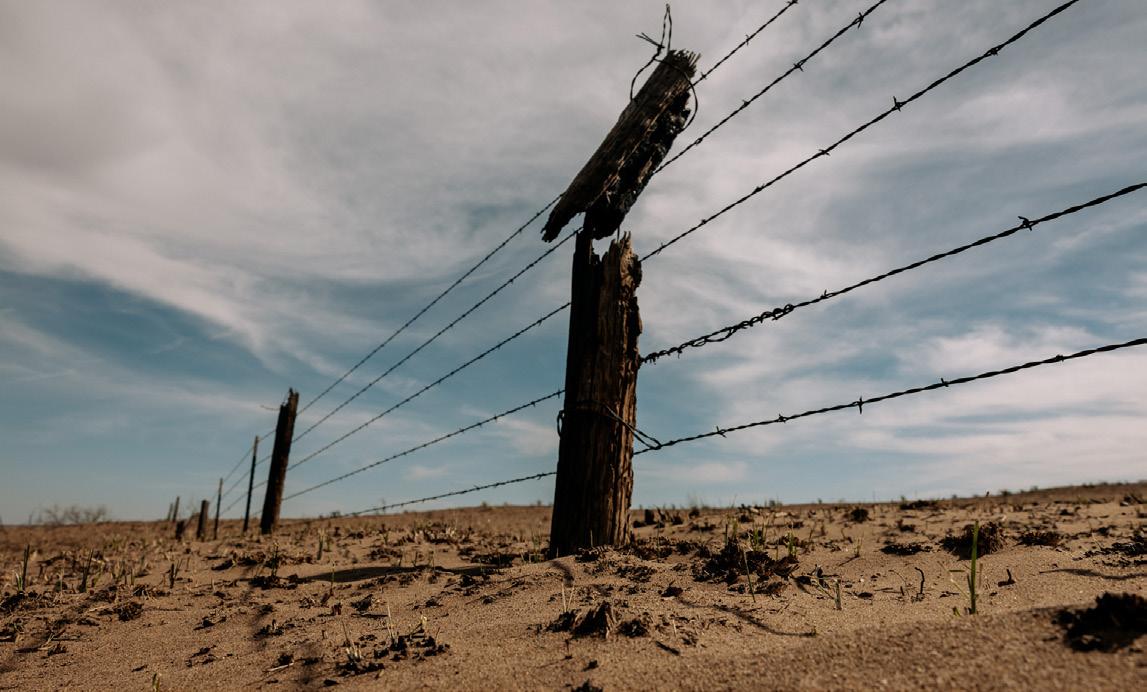

USDA announced technical and financial assistance programs available to help producers across Texas and Oklahoma recover from recent wildfires. Programs to benefit livestock producers are listed below.
Disaster assistance programs:
• Livestock Indemnity Program (LIP)
• Emergency Assistance for Livestock, Honeybees, and Farm-Raised Fish Program (ELAP)
• Farm Service Agency farm loans and emergency loans Conservation programs:
• Conservation Reserve Program
• Emergency Conservation Program (ECP)
• Emergency Forest Restoration Program (EFRP)
• Environmental Quality Incentives Program (EQIP) Community assistance programs:
• Emergency Watershed Protection (EWP) program
• Conservation Technical Assistance (CTA)

Producers impacted by wildfires should contact their local USDA Service Center to report losses and learn more about program options available to assist in their recovery from crop, land, infrastructure and livestock losses and damages.



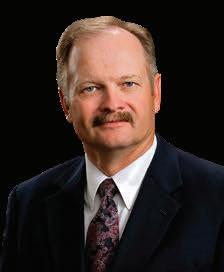








Texas & Southwestern Cattle Raisers Association, the oldest and largest livestock association in the Southwest, March 23 elected Carl Ray Polk Jr. as president during the 2024 Cattle Raisers Convention & Expo.
Polk, of Lufkin, is a respected figure within the industry, bringing extensive expertise and a proven advocacy track record to his two-year term as association president. As a third-generation rancher and land steward, Polk is well-positioned to steer the association toward continued growth and success.
“When you look back through TSCRA history, it is beyond humbling to be part of this long-standing organization,” Polk said. “I’m honored to serve alongside our leadership, board of directors, committee leaders and volunteers in support of our membership and mission.”
During the 2024 Cattle Raisers Convention & Expo, the Texas & Southwestern Cattle Raisers Association executive committee met to approve the newest leadership roles for the organization. Stephen Diebel, of Victoria, was named first vice president; and Dan Gattis, of Georgetown, was elected as second vice president, secretary and treasurer.
Four members were elected to the association’s board of directors: Anson Howard, San Antonio; Michael Sasser, Corpus Christi; Richard Marbach, Victoria; and Ross Thompson, Iowa Park.
Three members were elected to the executive committee: Austin Brown III, Beeville; Claudia Scott Wright, Richmond; and James L. Donnell Jr., Fowlerton.
As president, Polk succeeds Arthur Uhl, whose leadership and dedication have been instrumental in driving Texas & Southwestern Cattle Raisers Association’s mission. On behalf of the organization, Polk extended his appreciation to Uhl for his invaluable contributions and wished him continued success in his future endeavors.
“I want to thank Arthur for setting an outstanding example of what a Texas & Southwestern Cattle Raisers Association president should stand for,” Polk said. “I hope to uphold many of the examples he’s set.”
Also during the 2024 Cattle Raisers Convention & Expo, the Texas & Southwestern Cattle Raisers Association Leadership Development Foundation announced the launch of the new TSCRA Leadership Development Foundation Working Grant Program.
This groundbreaking program aims to support those starting or growing a business in ranching, beef production or related area supporting the beef value chain.
The program is administered through the TSCRA Leadership Development Foundation, a 501(c)(3) organization established by Texas & Southwestern Cattle Raisers Association in February. In addition to financial assistance, it provides individuals access to mentorship, educational resources and networking opportunities to enhance their skills and expertise.
“Whether it's helping a young producer purchase their first parcel of land, or enabling a veterinarian to open a large animal clinic in a rural community, or giving a generational producer the opportunity to grow their operation, these grants have the power to transform lives and revitalize our rural economies,” said Carl Ray Polk Jr., Texas & Southwestern Cattle Raisers Association president.
The TSCRA Leadership Development Foundation Working Grant Program will accept applications twice annually in May and November and is open to applicants in Texas and Oklahoma involved in various segments of the beef industry, including cow-calf operations, stockers, feeders, packing plants, veterinary clinics, and other segments of the beef value chain.
Applications for TSCRA Leadership Development Foundation Working Grant Program are open through May 31. Learn more online at tscra.org/what-we-do/leadership-development-foundation.
Texas & Southwestern Cattle Raisers Association will host its 2024 Summer Meeting June 21-23 at the Hyatt Regency Hill Country in San Antonio. Members can watch for registration details online at tscra.org and through the TSCRA Update daily email.
The meeting follows the newly adopted meeting schedule approved at the 2023 TSCRA Policy Conference.
The upcoming summer meeting follows 2024 policy committee meetings in May, providing association members an opportunity to review and approve policy recommended by each committee. Such policy will guide the association as it prepares priorities for the 2025 Texas Legislative Session. T C


Saturday,June1@10:00a.m.–SanSaba
Saturday,July27@10:00a.m.–SanSaba
Saturday,August24,@10:00a.m.–SanSaba ConsignmentsWelcome!
WEEKLY SALES HELD AT 11:00 a.m.
Monday – Mason Thursday – San Saba
Formoreinfoonabove salesoronlineviewing andbidding,pleasecall orvisitourwebsite.
Join or renew your membership today.
Member benefits include the support of TSCRA Special Rangers, government relations advocacy, educational programs, networking and social events, member-only discounts, The Cattleman magazine and phone app, and insurance services.

To learn more about membership, scan the code above or visit TSCRA.org.
Please thank the representatives from these companies for their support of TSCRA programs.
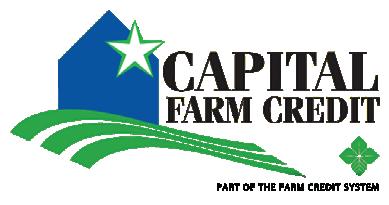




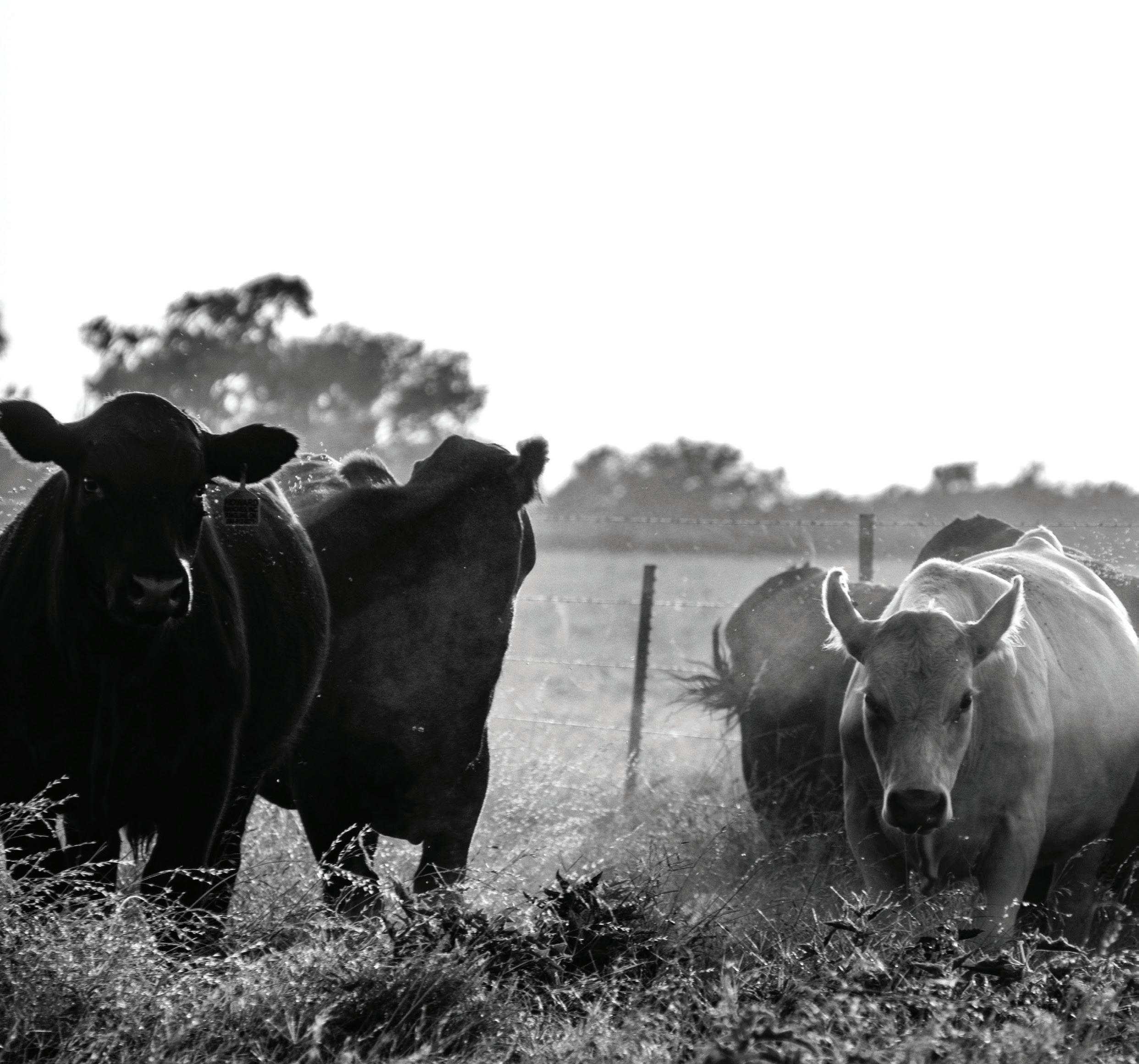
We appreciate all the sponsors and partners who support our organization year after year.
TSCRA members — ask about discounts from the following partners!
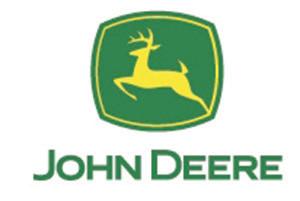




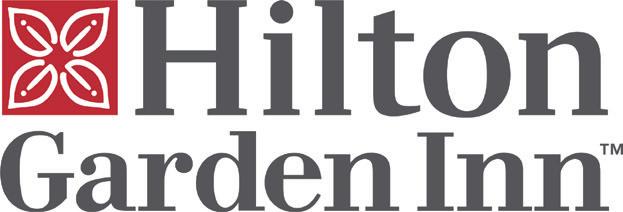

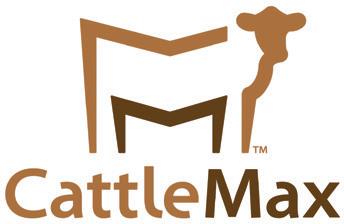

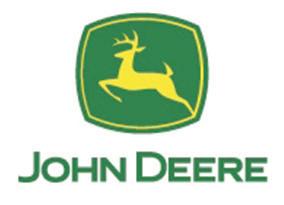



Jim S. Williams, of Boling, has been named the 2024 inductee of the prestigious Saddle and Sirloin Portrait Gallery. His portrait will be unveiled at an induction banquet Nov. 17 during the North American Livestock Exposition in Louisville, Kentucky.
Williams will be the 379th member added to this historic gallery of livestock standouts.

The award is the highest honor bestowed on an animal agriculture leader who has made major contributions to the livestock industry in the U.S. and abroad as judged by their peers.
There’s only one place Williams calls home, and that’s the V8 Ranch, one of the world’s premier registered Brahman operations. As a sixth-generation rancher, Williams upholds the legacy of his greatgreat-grandfather, J.D. Hudgins, who is the founder of the renowned J.D. Hudgins Inc. Brahman Ranch.
Williams was a gifted high-school athlete and after a career-ending injury in college, he transferred to Texas A&M University. His interest in cattle became his passion, as his knowledge and understanding of animal genetics and breeding flourished. He graduated in 1976 with a bachelor’s degree in animal science, and he returned to the ranch and began to make his mark in the industry.
Under his leadership, V8 Ranch has been a trailblazer for adopting advanced technologies such as the incorporation of performance measurements in the ’70s, embryo transfer and in-vitro fertilization, as well as the use of DNA-based genomics.
Visual appraisal is also paramount to Williams in making mating and herd selections, and the showring has been a major force in the growth and popularity of the V8 Ranch. Since 1976, V8 Ranch has exhibited 66 national or international grand champions, which tops Brahman history records.
V8’s reach extends far beyond the United States, as the ranch’s genetics can be found in more than 50 countries and on six continents. Along with his father, Sloan, Williams established V8 Ranch satellite herds in Brazil and Zimbabwe.
In addition to the Brahman herd, V8 Ranch is home to a 1,500 head Brahman-based commercial cattle operation along the Gulf Coast.
In the early 2000s, Williams founded and managed V8 Shorthorns, where the operation exhibited national and junior national champions, as well as three Shorthorn show heifers of the year.
Williams has continually given back to the industry and served in many leadership capacities. He is a twoterm past president of the American Brahman Breeders Association, a three-term past president of the American Shorthorn Association and has held executive board positions on the National Cattlemen’s Beef Association, U.S Meat Export Federation and was chairman of the Texas Beef Council.
An oil portrait of Williams has been commissioned by renowned artist Richard Halstead, and will be framed and hung when the award is presented in November. Texas A&M University, American Brahman Breeders Association and the American Shorthorn Association collaborated to nominate Williams for this prestigious honor.
Rick Machen, Ph.D., recently accepted the position of the Robert J. Kleberg Jr. and Helen C. Kleberg Endowed Director at the King Ranch Institute for Ranch Management.
Machen was hired in June 2016 as the Paul C. Genho Endowed Chair in Ranch Management. As a professor, he has worked closely with graduate students, teaches a variety of classes, and cooperates in the development and conduct of the institute’s outreach program.

Machen received a bachelor’s degree from Angelo State University, and a master’s degree and doctorate in animal nutrition from Texas A&M University. He began his career with a beef cattle research appointment at the University of Florida Institute of Food and Agricultural Science.
In 1989, Machen returned to Texas to pursue his passion for teaching and natural resource management as a Texas A&M AgriLife Extension specialist in West Texas, eventually settling in Uvalde. For almost three decades, he provided leadership in regional and statewide learning opportunities through Extension.
“I know that the King Ranch Institute for Ranch Management is in superior hands under the direction of Dr. Machen,” said Shad Nelson, dean of the Texas A&M University-Kingsville College of Agriculture. “He knows this space extremely well and is a proven leader in his field. He will continue to bless the lives of graduate
students trained in this program and be at the forefront of making critical decisions to drive the strategic initiatives to build and strengthen the program.”
Thanks to support from generous donors across the state, the Texas Agricultural Land Trust Foundation successfully reached its initial $10 million fundraising goal for the Forever Texas Fund endowment campaign.
The foundation said it is a momentous milestone for the future of Texas working lands, ranches and farms — a testament to their unwavering commitment to keep Texas big, wide and open.
Acknowledgment was given to campaign chairs Steve C. Lewis and Joseph Fitzsimons, who played a pivotal role in raising awareness of the Forever Texas Fund endowment, ensuring the Texas Agricultural Land Trust’s mission to preserve the ranching heritage is fulfilled.
“We are deeply grateful to all who donated to the Forever Texas Fund endowment, which will secure TALT’s future in perpetuity,” said Fitzsimons, who chairs the Texas Agricultural Land Trust Foundation Board. “We are especially thankful for our campaign team whose dedication to TALT’s mission knows no bounds.”
In the heart of Texas, where the land holds stories of generations past, the Texas Agricultural Land Trust has been a trusted guardian, working to ensure wideopen spaces remain an integral part of the state’s rich heritage. Through conservation easements, the land trust empowers landowners to protect their working lands and preserve the essence of Texas for future generations.
Since 2007, in partnership with landowners across the state, the Texas Agricultural Land Trust has forever protected more than 280,000 acres.
While January beef exports were slightly below last year’s volume, export value trended significantly higher. That’s according to data released by USDA and compiled by U.S. Meat Export Federation.
January beef exports totaled 99,764 metric tons, down 1% from a year ago. But export value climbed 9% to $763.8 million, as value trended higher year-over-year to South Korea, Japan, Mexico, Canada, Central America, the Caribbean and Hong Kong.
Beef variety meat exports increased 12% from a yearago levels to 23,138 metric tons, while value climbed 16% to $89 million, led by growth in Japan, Egypt, Mexico, Korea, Peru and China/Hong Kong.
“While USMEF expects 2024 to be another challenging year in terms of beef supply availability, the upward trend in export value is a positive sign,” said Dan Halstrom, U.S. Meat Export Federation president and CEO.
“The inventory has been cleared and customers in Asia are reloading on U.S. beef. There is also more optimism in Asia’s foodservice sector, especially in Korea,” Halstrom said. “Combined with the recent strength we’ve seen in the Western Hemisphere, this bodes well for beef demand in the coming year.
“January was also an excellent month for beef variety meat exports, which are especially important for maximizing the value of every animal.”
A new resource developed by the National Cattlemen’s Beef Association and CattleFax helps cattle producers maximize profitability from their culling decisions. “Right Way. Right Time. – A Guide to Cull Cattle Management” is now available at ncba.org/producers.
With effective planning, cull cattle can be a significant source of revenue and should not be overlooked. In essence, cull cattle are market cattle.
This new document addresses key problem areas, provides strategies for making timely culling decisions to prioritize animal welfare, and is designed to help producers capture more value through effective management regarding cull cattle.

Strategies for managing cull cattle are highlighted in this new resource.
For cattle producers across the country, whether beef or dairy, cull cattle are part of doing business. Animals age, they no longer breed back, and their health deteriorates. Incorporating culling decisions into an operation’s best management practices benefits both animal welfare and the producer’s bottom line.
According to the 2022 National Beef Quality Audit, the market cow and bull sector provides an alternative product and a secondary value to animals once their original purpose can no longer be fulfilled.
When it comes to product fabrication, market cows and bulls are typically associated with ground beef production. However, over time, the industry has realized that some market cows and bulls have the potential to yield valuable primals to be fabricated and sold as retail cuts and to the restaurant trade. T C
The next Ranching 101 webinar will be held May 21.
Join Texas & Southwestern Cattle Raisers Association for this month’s Ranching 101 webinar at 1 p.m. Tuesday, May 21.
Strong fencing is vital for landowners and ranchers. It safeguards property boundaries, protects valuable livestock and facilitates effective land management practices, ensuring sustainable agriculture and maximizing productivity.
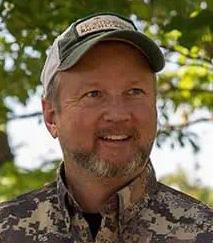
During the hour-long Zoom webinar, participants will learn strategies for establishing fencing enterprises and improving land management from experienced entrepreneur John Payne. Interested members can register by scanning the QR code below.
Payne, a fifth-generation Texan, founded his first fencing company in the early 1990s, emerging from the commercial ostrich ranching business. Despite the initial challenges, Payne’s journey reflects his determination and entrepreneurial spirit.
With his wife, Lana, by his side and drawing upon his faith, Payne established Payne Fence Products, a company known for its unparalleled quality and industry leadership.
His understanding of the role fencing plays for landowners and cattle operations also led him to create Tejas Ranch & Game Fence, where he blends his passion for innovative solutions and land improvement. Today, guided by Payne’s vision, Tejas Ranch & Game Fence is a testament to his commitment to excellence, serving landowners across Texas, Oklahoma, Louisiana and beyond. T C







RUSSELL IRVIN DECORDOVA, 66, of Groesbeck, died March 16.
Born May 4, 1957, deCordova was destined to be in the cattle industry, and followed in his father’s and grandfather’s footsteps.
He and his sons, Cody and Ty, owned and operated Buffalo Livestock Marketing Inc. in Buffalo. He spent many hours writing up cattle that lined the road and welcoming sellers with a handshake and a thank you.
Then he would change his boots, head to Fort Worth to help customers market their cattle through Superior Livestock, and mentor all the young men who joined on as representatives.
Over the years, he won many championships showing cutting horses, but his greatest joy was breeding and raising his own show horses.
He is survived by his wife, Debbie; three children, Amie (Chad) Bushaw, Cody (Emily) deCordova and Ty (Jennifer) deCordova; eight grandchildren; sisters, LuRene (Stanley) NeNoir, Lisa deCordova and Peggy (Len) Crow; and numerous nieces and nephews.
, 83, of Uvalde, died March 1.
He was born April 7, 1940, in Boonville, Missouri, to Elizabeth (Roberts) and Francis Stanfield. He married Linda Mosely Jan. 8, 1960, in Boonville, Missouri. He attended Boonville High School, and he graduated from the University of Missouri in 1961.
Stanfield began his career ranching with his fatherin-law, H.A. Mosely. He subsequently held roles at Texas & Southwestern Cattle Raisers Association from 1969 to 1974, Texas Hereford Association and Chaparrosa Ranch.
He later became chief operation officer of Belton Kleberg Enterprises. He spent the latter portion of his career working in real estate with his wife in Uvalde.
Throughout his life, Stanfield served as chairman and member of multiple state and national cattlemen’s and cattle breed associations, as well as the Texas A&M Research Center advisory board.
Stanfield is survived by his wife, Linda; son, Matthew Edward (Elina) Stanfield; son in-law, Clay Cooper; and five grandchildren, Henry Matthew Stanfield, Dasha Jane Stanfield, Madeline Stinson, Hannah Stinson and Oliver Cooper; and multiple nieces and nephews. T C

For more than half a century, TCU’s renowned Ranch Management program has given students an edge in agricultural resource success. This unique nine-month intensive program equips graduates with real-world strategies as producers and land stewards in changing times.
Space is limited. Competitive financial aid and scholarship opportunities available. Visit ranch.tcu.edu or call 817-257-7145.
Two calves missing in Briscoe County.
Texas & Southwestern Cattle Raisers Association
Special Ranger Jay Foster reports two Beefmaster calves missing off County Road 17. The two-month-old calves are red with no brands or markings. They were last seen Feb. 14. Anyone with information on this case is urged to contact Foster at 940-475-0295.
Tractor stolen in Hill County.
Texas & Southwestern Cattle Raisers Association
Special Ranger Robert Pemberton reports a 2008 John Deere 5403 tractor stolen from a property off Highway Contract Road 3368. The tractor has four-wheel drive with a 522 front-end loader attached. The VIN number is PY5403U002780. The entry gate lock was cut to steal the tractor. The tractor was last seen Feb. 19. Anyone with information on this case is urged to contact Pemberton at 903-450-3900.
Kubota Tractor, Polaris Ranger and bumper-pull trailer stolen in Cherokee County.
Texas & Southwestern Cattle Raisers Association
Special Ranger Darrel Bobbitt reports a Kubota tractor and front loader, a Polaris Ranger, a Kearney bumperpull trailer and other items stolen from a property off FM 3651 in Bullard. Stolen items are:
• 2007 Kubota M8540 heavy duty tractor, NIC V465780087
• 2007 Kubota LA1353 quick attach front loader, NIC V675841206
• 2019 Kearney 16-foot bumper pull trailer, VIN 5LCLB1628K1048894, Texas license plate tag No. GBCW84
• 2017 R17 two-seater Polaris Ranger, VIN 4XARVA874H8558339
Other assorted smaller items were taken, as well. The gate lock was cut to steal the items. Anyone with information on this case is urged to contact Bobbitt at 936-222-2144.
Farm fuel bumper-pull trailer stolen in McLennan County.
Texas & Southwestern Cattle Raisers Association
Special Ranger Marvin Wills reports a farm fuel bumperpull trailer stolen off Blue Bluff Road. The rusty army green trailer has a 250-gallon tank with electric pump, black toolbox across the back of the trailer, black taillights and new tires. The suspect(s) cut the gate lock, secured entrance to the property and stole the trailer. Anyone with information on this case is urged to contact Wills at 254-223-2330.
Cattle missing in Austin County.
Texas & Southwestern Cattle Raisers Association
Special Ranger Brent Mast reports nine cows, four calves and one bull missing off Homestead Lane. The black cows have yellow ear tags and no brands. The black calves have no brands or markings. The black bull has a red ear tag and “ZM” branded on his right side. They were last seen Feb. 12.
Cattle missing in Burleson County.
Mast also reports three bred cows and two crossbred calves missing off County Road 473 in Somerville. The cattle were last seen Feb. 29. Anyone with information on these case is urged to contact Mast at 936-714-6619.
Cattle missing in Gonzales County.
Texas & Southwestern Cattle Raisers Association
Special Ranger Robert Fields reports six head of cattle missing off State Hwy 183 in Gonzales. The three-yearold Braford heifers are branded with a “Rocking T” on their left hip. Five of the heifers went missing in August 2023. An additional heifer went missing in February 2024. Anyone with information on this case is urged to contact Fields at 361-207-5207.
Saddles stolen at the Zapata County Fair.
Texas & Southwestern Cattle Raisers Association
Special Ranger Joe Aguilar Jr. reports two Coats saddles stolen from a trailer during the Zapata County Fair. The brown saddles have 14.5-inch seats. They were stolen March 7 between 1-4 p.m. Anyone with information on this case is urged to contact Aguilar at 956-513-0297. T C
TSCRA offers a cash reward for information leading to the arrest and/or grand jury indictment of individuals for theft of livestock or related property. Anonymity is guaranteed. To provide information, call the Operation Cow Thief tip line at 817-916-1775.
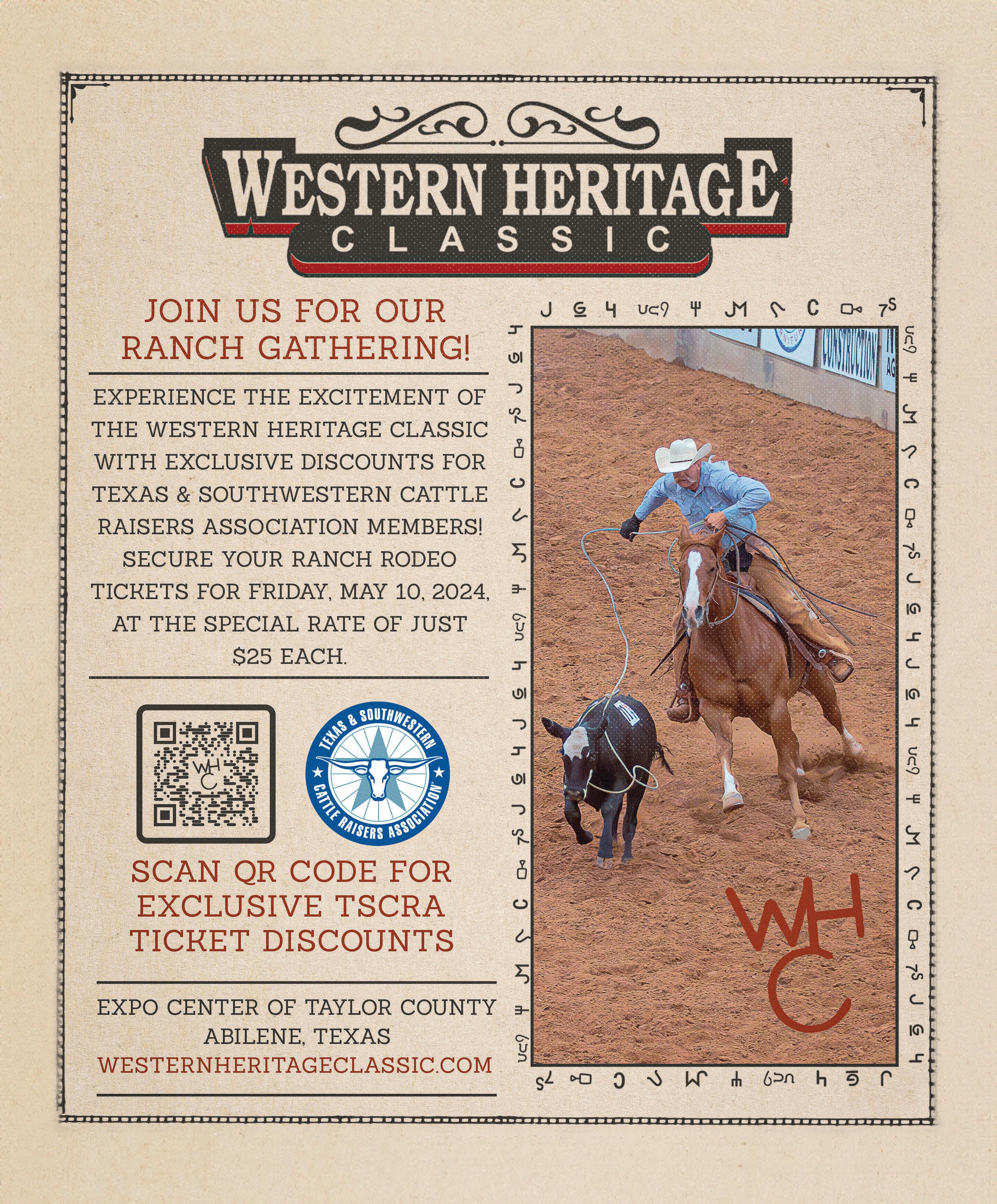
Understanding the favorable benefits to ranchers and the shifting public perception of cattle.By Kristen Brown
Talk about the weather and rangeland conditions is common in small-town coffee shops across the Southwest. These days, the topic is making its way to big-city boardrooms, too.
Carbon credit systems, marketplaces that allow companies to offset their greenhouse gas emissions, have caught the attention of Fortune 500 companies. With new onlookers, opportunity abounds.
On a recent episode of the TSCRA Talk podcast, James Clement III, a multi-generational rancher, provided insight into the emerging topic, drawing from his experience with carbon sampling on a variety of land types during his tenure at the King Ranch and his current position with EarthOptics.
Clement said the key to all carbon conversations comes back to data, something he works with firsthand through EarthOptics.
“EarthOptics data is showing that livestock encourage soil’s ability to capture carbon,” Clement said. “Ranchers are stewards of the land. We’re defenders of these ecosystems. By measuring our impact on soil, we are now proving the benefits of managing range with livestock and preserving our ranching culture and industry.”
A primary element of carbon data, soil samples allow for carbon levels to be measured over time. According to Clement, the data is key to proving the role of livestock and wildlife in soil health — now and in the future.
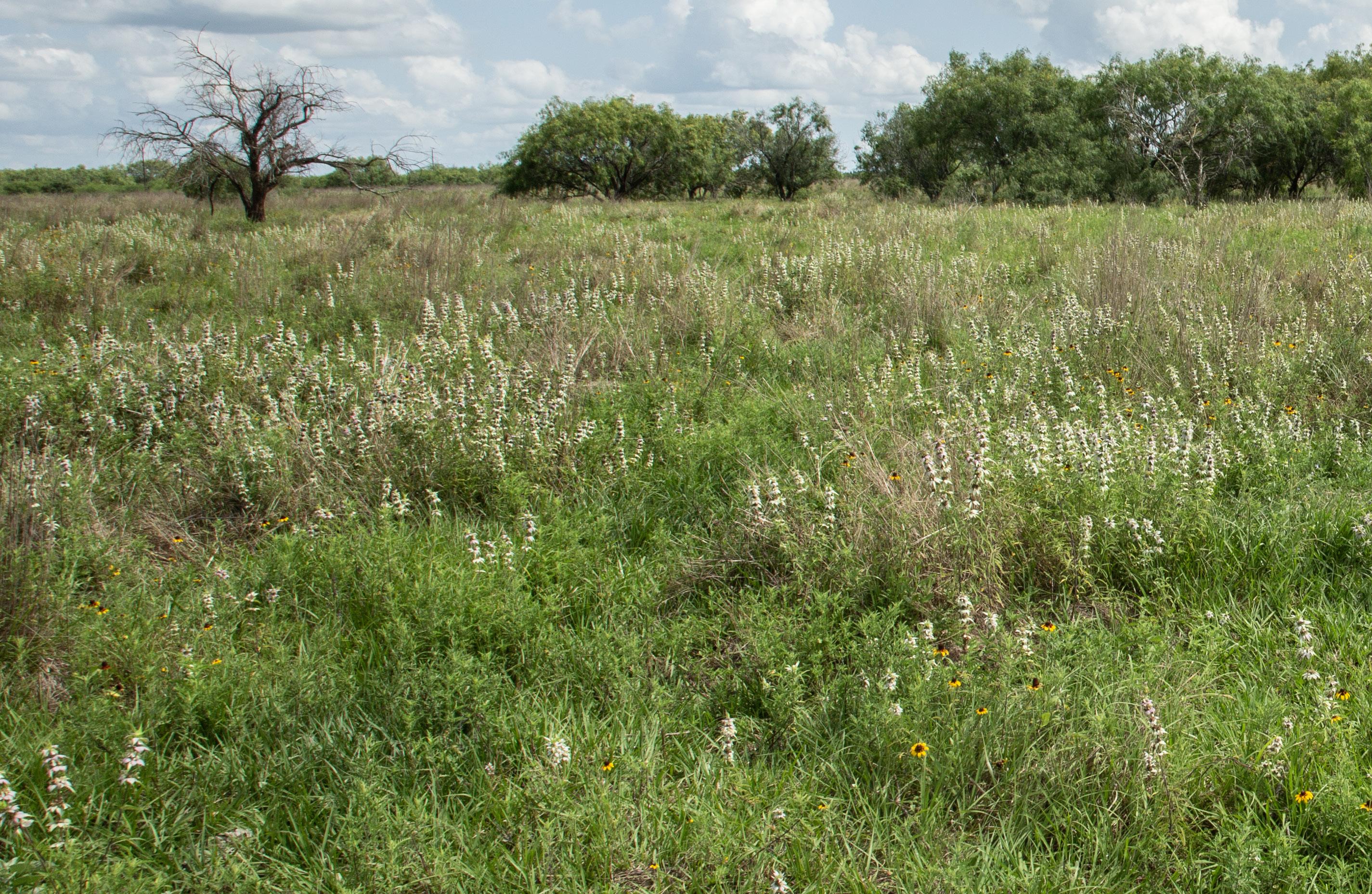
“The top six feet of soil are more important to the health of the Earth and to ecosystems than anything else on the planet,” Clement said. “We want to see a future where people get paid more money for being better stewards. These carbon credits can provide the incentive to give a rancher the support to be able to make the best decisions for the health of the soil.”
Clement said the range in the carbon market, based on the quality of the credits and overall implementation and data collection on a soil health improvement project, can fluctuate greatly ranging from $8 to $800 per ton.
“If a landowner signs a contract with a developer, they should make sure that it has a floor price and it is market-based so that if the price of the credits improves, the landowner benefits from the rise and is protected by the floor,” Clement said.
In addition to financial incentives, the opportunity to share the important story of cattle ranching and working lands is valuable.
“Through this soil carbon industry, ranchers have direct access to Fortune 500 companies,” Clement said. “Ranchers need to realize that the ball is in our hands right now, and we can really have some leverage to negotiate here if we do this the right way.”
Clement notes the importance of such engagement by the industry.
“If we don’t engage in this and drive the conversation, then people that don’t know farming and ranching or may be very new to it and have unrealistic expectations of what production is supposed to look like are going to drive the conversation,” he said.
Clement’s passion for empowering cattlemen and landowners to pull up a seat at the carbon table is evident.
“This carbon conversation is so important to me because it’s making people realize what ranchers and farmers are doing and the benefits that we didn’t even realize,” he said.
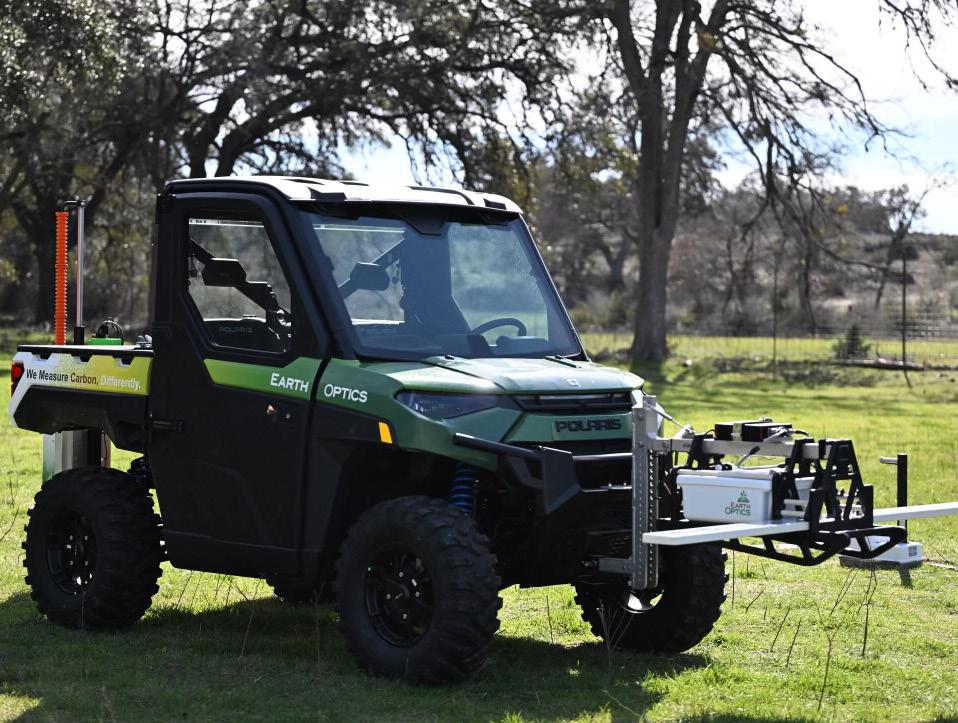
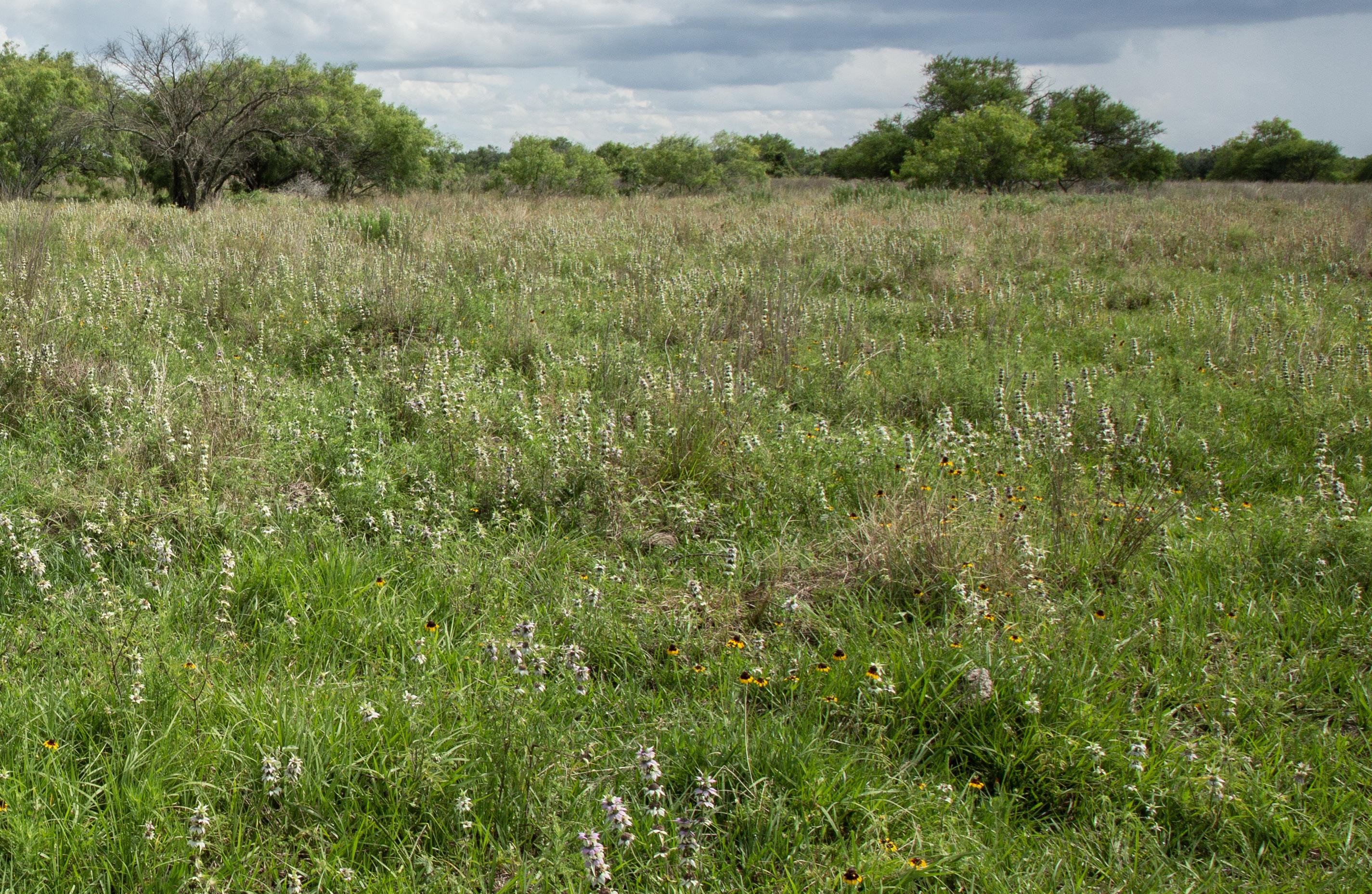
To hear more of the conversation and access more episodes, download TSCRA Talk via Apple Podcasts, Google Podcasts, Spotify or Stitcher. T C
Kristen Brown, from Dalhart, is host of the TSCRA Talk podcast.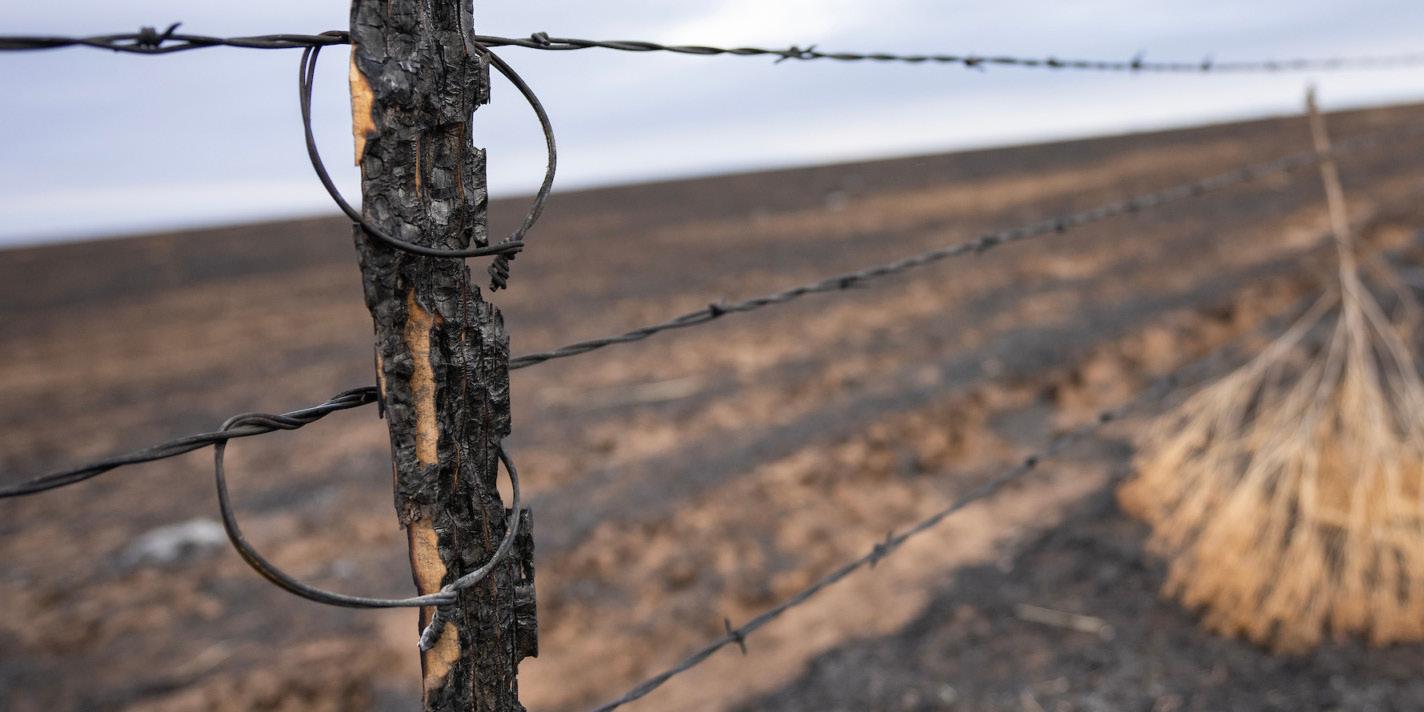
Replacing thousands of miles of burned fences in the Texas Panhandle.
Story by Kay LedbetterAn overwhelming task lies ahead for ranchers whose pastures and ranchland were burned by the wildfires that left thousands of miles of fencing to be repaired or replaced.
Texas A&M AgriLife Extension Service beef cattle specialists Jason Smith, Ph.D., Amarillo, and Ron Gill, Ph.D., Stephenville, said producers should begin by focusing their efforts on perimeter and boundary fences, and viable pastures with water sources.
Interior cross fences can receive less priority as they can be temporarily constructed as needed.
“Prioritize fence repair and replacement in pastures with functioning, reliable, long-term water sources,” Smith said. “Fences in pastures with seasonal or surface water, or with wells that require repair before they can pump water again, should receive lower priority.”
When considering what fences to replace, Smith and Gill said ranchers should keep in mind that fencing age influences the breaking strength and elongation potential of 12.5-gauge zinc-coated barbed wire.
A study by Oklahoma State University showed fire did not affect breaking strength and elongation potential. Regardless of the discoloration of the burned wire, the zinc coating remained. These effects held true through six separate fires included in the study’s experiment.
Other guidelines provided by Smith and Gill include:
• Construct fencing that will allow for rangeland recovery. That might involve using temporary or permanent fencing to keep cattle off the burned areas until adequate recovery of rangeland forages occurs.
• Priority should also be given to replacing or repairing the oldest fences damaged by the fire. While many wooden posts, braces and stays may need to be replaced, that may not be the case for burned wire.
• Reflect upon previous fence locations. Some fences may not have been constructed in the best location. For fences that need to be replaced entirely, this may be the best opportunity to re-position the fence to better meet your operation’s needs.
• Strongly consider the location of gates and the position of fencing relative to watering
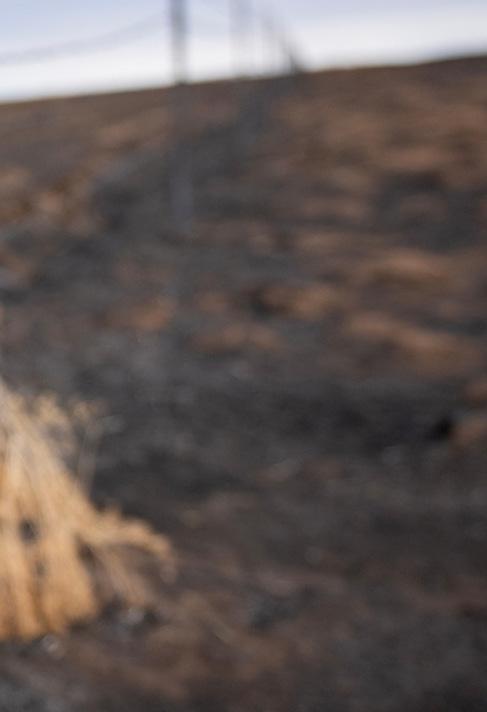
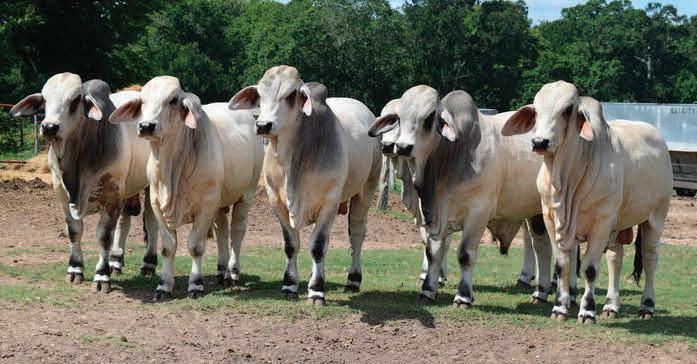
locations and working pens. Reflect upon previous limitations and consider how the position and layout of the newly constructed fence may improve grazing management, simplify livestock movement, or benefit wildlife.
• Consider the working life expectancy of different materials and their resilience to future fires.
• Be mindful of how fence type and material may influence wildlife movement.
Rebuilding fences: Specifications could matter
Some ranchers may be looking into programs through the USDA and Farm Service Agency that may be available to assist producers who suffered losses on their land or with livestock and fences due to the fires.

a call for all your Brahman needs. We invite you to drop by the ranch and inspect these bulls at any time.

The Emergency Conservation Program, known as ECP, provides emergency funding and technical assistance to farmers and ranchers to rehabilitate farmland and conservation structures damaged by natural disasters, and implement emergency water conservation measures during severe drought.
One qualifying practice is restoring fences on agricultural land — livestock cross fences, boundary fences, cattle gates or wildlife exclusion fences.
Also, the Environmental Quality Incentives Program, or EQIP, is administered by the USDA Natural Resources Conservation Services and offers financial assistance to landowners to address certain natural resource concerns.
Building fences that qualify for federal funding will require meeting their specifications, so these may be things to look for when buying or picking up donated materials. Keep all receipts for documentation and insurance purposes.
Wire
• Barbed wired must meet ASTM-A121.
• Smooth High-Tensile wire must be 12.5-gauge, 1,300-pound break strength, tensile strength exceeding 170,000; and be Class III galvanized or above.
• Wire clips must be galvanized and match or exceed fence wire strength.
T-Posts
• 6 feet, not less than 1.25 pounds per foot, galvanized or painted.
Pipe
• Steel 2 3/8 inch minimum, but larger is fine.
For more details or information on any government program participation, contact the local USDAFarm Service Agency or USDA- Natural Resources Conservation Services office. T C
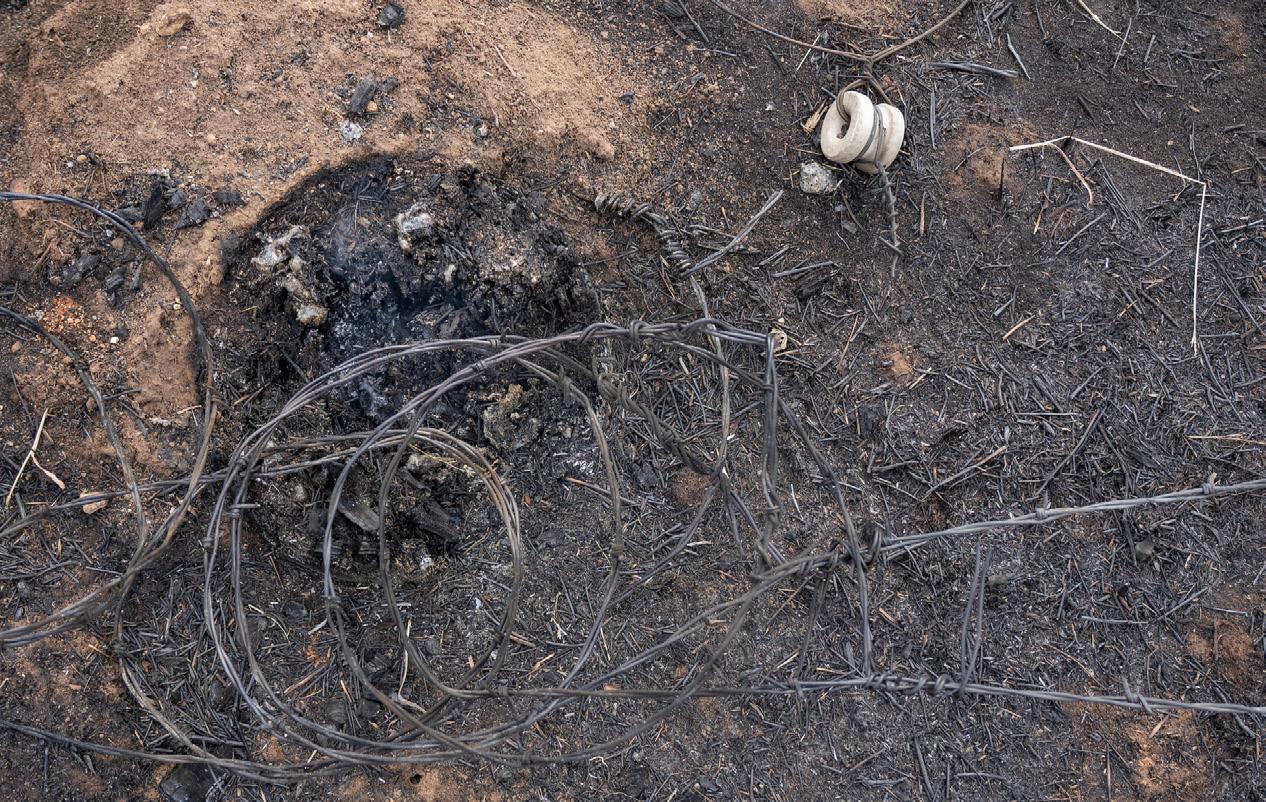

Fencing materials were collected at three Texas A&M
Extension Service Animal Supply Points to aid ranchers who will have to replace miles of posts and barbed wire fences before returning cattle to their pastures.
 Kay Ledbetter is communications coordinator for Texas A&M AgriLife.
AgriLife
Kay Ledbetter is communications coordinator for Texas A&M AgriLife.
AgriLife
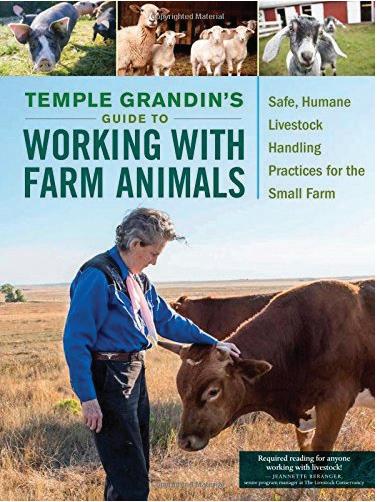



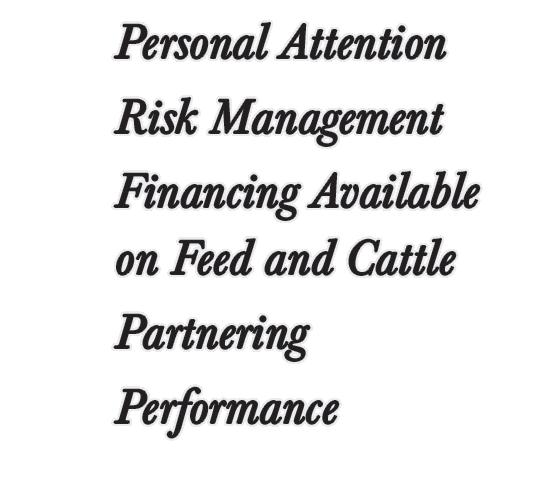







Understanding the four pathogens behind BRD.
Bovine respiratory disease, or BRD, is frustrating and costly, and the causes can be hard to understand.
Taking time to learn about the pathogens behind BRD can improve management protocols, and ultimately, keep calves healthy.
Mannheimia haemolytica, Pasteurella multocida, Histophilus somni and Mycoplasma bovis are the four main pathogens that cause BRD, either together or separately. Each pathogen exhibits slightly different clinical signs — often at different times.
“Understanding these four BRD-causing pathogens and how they affect cattle gives producers the resources they need to best protect their herd,” said Nathan Meyer, Ph.D., DVM, Boehringer Ingelheim.
1. Mannheimia haemolytica is the leading BRDcausing pathogen concern because of its prevalence and severity.
M. haemolytica produces leukotoxins, which damage and destroy white blood cells, leading to severe lung damage.
“Cattle with an M. haemolytica infection can go from seemingly healthy to deceased within a day’s time,” Meyer cautioned.
Because cattle have such a low ratio of lung volume to body size, any lung damage is detrimental to the animal’s overall health and performance. Signs to look for include coughing, labored breathing, nasal discharge, loss of appetite, fever and/or depression.
The classic components of an early case include a combination of depression and fever (104°–106°F), without any signs attributable to other body systems.
“Mannheimia is not only the most predominant and concerning of the four bacterial causes of BRD, but it can also lead to other problems,” Meyer said. “If you have a Mannheimia infection, it is not uncommon for P. multocida, H. somni or M. bovisto follow.”
2. Pasteurella multocida is thought to be an important cause of respiratory disease among feedyard cattle, but it causes less severe cases than M. haemolytica.
As with M. haemolytica, infected animals may exhibit nasal discharge, loss of appetite, fever, depression and rapid, shallow breathing.
“We also tend to see more bronchopneumonia with Pasteurella,” Meyer said. “Internally, the lungs will take on a dark appearance and become consolidated, firm and stiff — which adversely impacts the animal’s lung elasticity.”
3. Histophilus somni not only causes BRD, but it can also infect several other organs and lead to multiple other life-threatening diseases in cattle.
“H. somni can still affect the respiratory system and cause pneumonia and severe bronchopneumonia, but it is different because of its multisystem, multi-organ involvement — it can impact the heart and brain,” Meyer said.
H. somni can lead to a variety of neurological, cardiac and respiratory conditions, such as septicemia (blood poisoning); thrombotic meningoencephalitis (or TME, a potentially fatal neurological disease of cattle); myocarditis (inflammation of the heart); tenosynovitis (inflammation of the protective sheath surrounding tendons); and polysynovitis (inflammation of multiple joints).
Cattle with the neurological form of H. somni may show signs of muscle weakness or paralysis, blindness and seizures. But occasionally, infected animals die before displaying any clinical signs.
“Since neurological and cardiac conditions caused by H. somni progress rapidly, we recommend monitoring cattle for signs of respiratory disease, like high fevers, labored breathing, coughing or reduced feed intake,” Meyer advised.
“H. somni is more prevalent in northern climates and has been thought of as a northern bacterium,” Meyer said. “But in the early 2000s, it started appearing more in the Midwest and in the Southern Plains states, where there are large concentrations of feedlots.”
4. Lastly, Mycoplasma bovis is a unique BRD-causing pathogen because of its ability to affect an animal’s joints and/or ears.
The bacterium is widely distributed throughout feedyard cattle populations and affects most calves before weaning. But if that doesn’t happen, they usually become rapidly colonized upon mingling with other calves on arrival to the feedyard.
For some, an M. bovis infection in the lung can spread to other parts of the body, including the joints.
Commonly affected joints include the stifle (knee); carpus (radial, intermediate, ulnar and accessory carpal bones); and fetlock (metacarpal/metatarsal hinge joint that allows extension of the leg), with the infection most often occurring in the tendon sheaths and surrounding tissue, not in the joint space itself.
This results in swollen, painful joints, and often shows up several weeks after a bout of BRD.
Another possible sign of M. bovis in calves is a droopy, or tipped, ear. While it’s more common in dairy calves following a Mycoplasma infection from milk, it can also show up in feedyard calves, and indicates the infection has settled into the inner ear.
Mycoplasma often appears at a much slower rate than most of the other BRD pathogens.
In most cases, the bacterial entry into the lungs proceeds more moderately, taking several weeks to cause enough damage to produce clinical signs, like increased respiratory rate, cough and fever in the calf.
Another key reason M. bovis is an outlier compared to the other pathogens is that it doesn’t have a cell wall.
This becomes important when producers need to treat the bacteria, as certain classes of antibiotics are not effective against Mycoplasma
This is because those types of antibiotics — cephalosporins, penicillins and beta-lactams — target the cell wall, which isn’t present with Mycoplasma The infection would continue to progress if those antibiotics are used.
“Producers do their best to monitor signs of BRD to protect their animals, but we often don’t know which pathogen is involved right away,” Meyer said. “That’s where diagnostic tools can come in.”
Diagnostic testing can pinpoint the cause of respiratory infections. A pathologist at a diagnostic lab will work with a veterinarian to more closely examine the pathogens present. This can be done antemortem by obtaining nasal swabs from the calf, or postmortem through a necropsy evaluation.
“A stethoscope and an ultrasound are great tools for detecting subclinical BRD cases, when producers can’t see visible signs, or to evaluate the success of BRD management changes,” Meyer said. “Many veterinarians are trained to perform an ultrasound on lungs and can help identify these BRD cases earlier.”
Once a calf has been diagnosed, using the appropriate treatment is crucial.
“To optimize treatment success, look for a fast-acting, broad-spectrum antibiotic that provides coverage against all four of these bacteria,” Meyer said. “A treatment that reaches the lungs quickly will minimize long-term lung damage.”
Veterinarians can to put together a treatment protocol that works for your herd. They can help you establish and update your protocols over time. T C

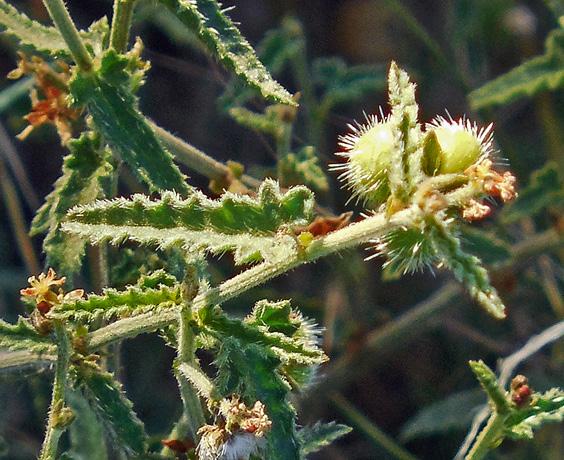
Catnip noseburn is a warm season, native perennial forb commonly found on many soils throughout Texas and across the Southwest. It is part of the spurge family, and there are 100 species found in the world’s warmer regions.
Catnip noseburn:
• Can grow as an erect plant or a trailing vine from a woody crown, and stems can reach 24 inches long.
• Has simple, alternate, linear-lanceolate to ovate leaves, which are up to 1.5 inches long and 0.75 inches wide. Leaves have fine teeth on the margins of the leaf blade.
• Produces small white-to-green flowers, which form a three-seeded capsule that will explode in the fall and release brown seeds when the plant matures.
• Is covered with hairs that will cause stinging and irritation if they touch skin. This leads to red bumps and painful itching for up to three hours.
Catnip noseburn is an important one to remember, as it is rarely noticed on the range or in a pasture until the stinging begins. It is also called Branched noseburn, stinging nettle and several other names by many that have had this experience.
Catnip noseburn is of value to white-tailed deer, sheep and goats, but it is of little value to cattle. Its leaves have a high crude protein level, and many songbirds, quail and doves consume the seed. T C
Kent Ferguson, a retired rangeland management specialist from the USDA Natural Resources Conservation Service, provides plant identification photo stories to help ranchers
In key locations across Texas, Oklahoma and New Mexico, Helena has branches staffed with people who can provide landowners, ranchers and wildlife enthusiasts with all their management needs.
For more information, contact your local Helena representative or visit HelenaAgri.com.












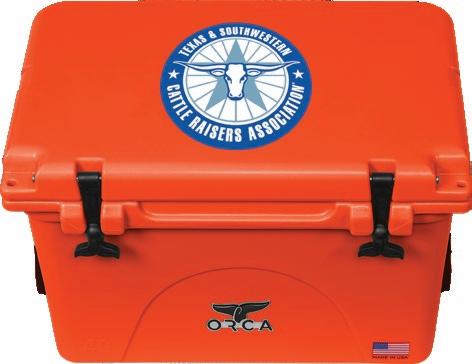


















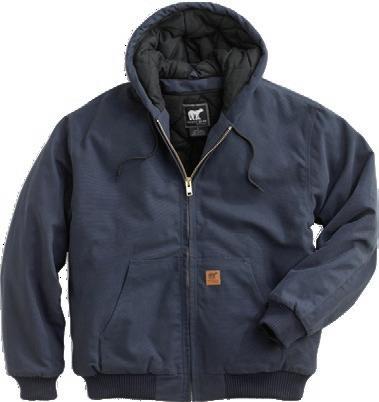
Various insecticides can be used to control small grasshoppers and armyworms in pastures and hay meadows, including insect growth regulators like diflubenzuron.
When selecting a product, it is important to consider efficacy, cost, potential for residual activity, grazing restrictions, and the potential to help control other species like horn flies.
In addition to controlling small armyworms and grasshoppers, Dimilin 2L also has a label claim for horn fly emergence suppression from cattle manure patties for two weeks or longer.
Checking labels can help identify products that provide added benefits at no additional cost. T C

ACTIVE SUBSTANCES PER ML:
Zinc .......... 60mg/mL
. 10 mg/mL
5 mg/mL
15 mg/mL
PRECAUTIONS:
Selenium and copper are toxic if administered in excess
Always follow recommended label dose. Do not overdose
It is recommended that accurate body weight is determined prior to treatment.
Do not use concurrently with other injectable selenium and copper products
Do not use concurrently with selenium or copper boluses
Do not use in emaciated cattle with a BCS of 1 in dairy or 1-3 in beef
Consult your veterinarian
CAUTION:
Slight local reaction may occur for about 30 seconds after injection. A slight swelling may be observed at injection site for a few days after administration. Use standard aseptic procedures during administration of injections to reduce the risk of injection site abscesses or lesions
WITHDRAWAL PERIOD:
Meat 14 days. Milk zero withdrawal.
DIRECTIONS:
This product is only for use in cattle Multimin® 90 s to be g ven subcutaneous y (under the skin) ONLY. It is recommended to administer the product in accordance with Beef Quality Assurance (BQA) guidelines Minimum distance between injection sites for the Multimin® 90 product and other injection sites should be at least 4 inches. Inject under the loose skin of the middle of the side of the neck. Max volume per injection site is 7 mL.
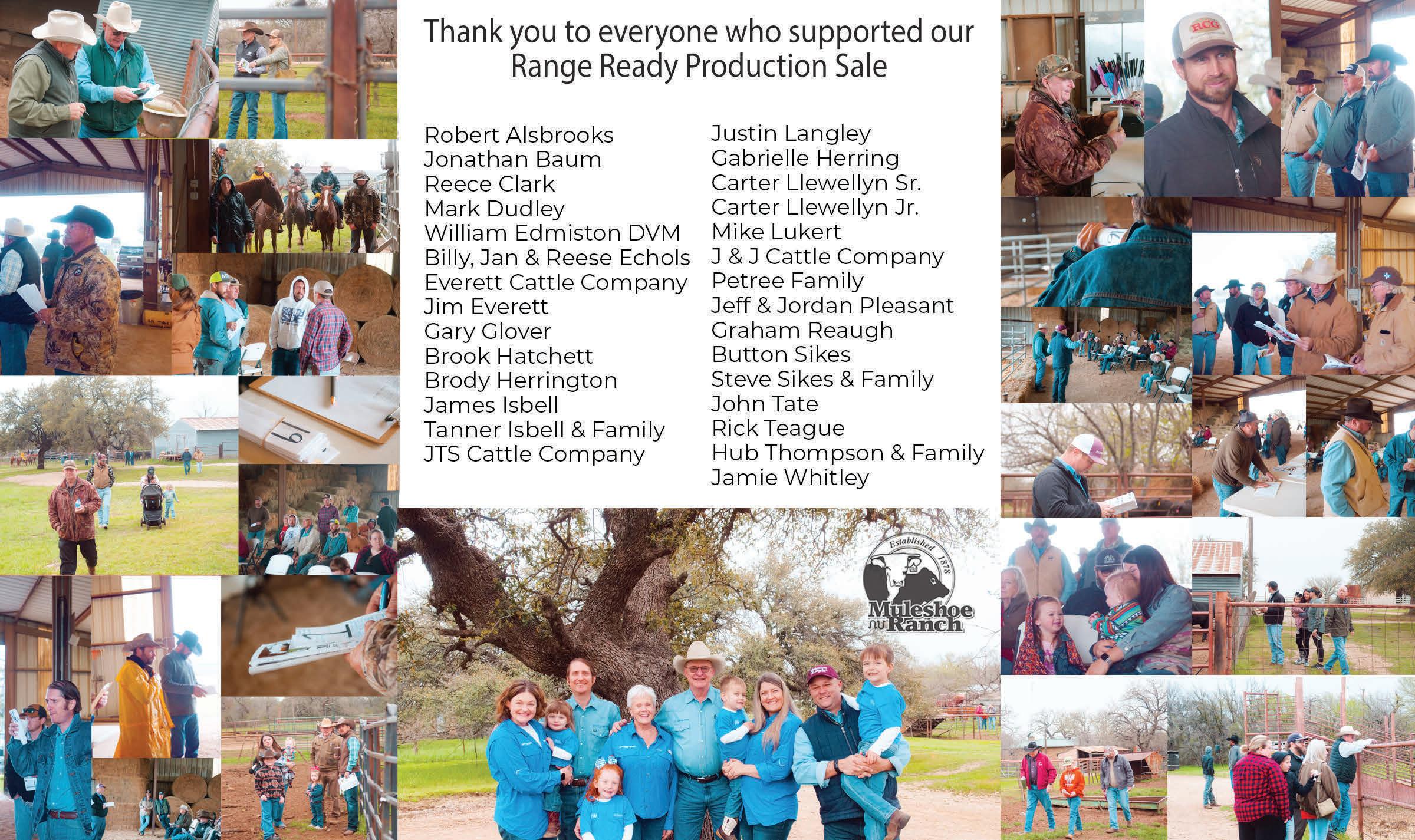


Multimin® 90 is a one-of-a-kind trace mineral injection that provides zinc, copper, manganese and selenium. Research shows that supplementing trace minerals with Multimin 90 in a calf vaccination program improves vaccine response from 53% to 80% as measured by a four-fold increase in antibody titers. IMPORTANT SAFETY INFORMATION FOR MULTIMIN® 90: Federal law restricts the use of Multimin 90 to use by or on the order of a licensed veterinarian. Not for use in humans; keep out of reach of children. Multimin 90 has a preslaughter withdrawal time of 14 days after injection. Always follow label dose; do not overdose. See prescribing information on corresponding page.

As a Texas beef producer, whether the operation is large or small, your livelihood depends on securing consumer trust. And that trust is based on different things to different people.
For example, cattle producers might categorize sustainability as environmental stewardship, while most consumers consider how animals are raised and treated when defining sustainable meat. That is according to the Sustainably Raised Meat Insights report.
Based on research from National Cattlemen’s Beef Association, a contractor to the Beef Checkoff, 41% of consumers say they have become more concerned with sustainability in the last year.
Management at the cow-calf and stocker level makes a significant difference in whether those consumers have a positive eating experience.
In fact, Beef Checkoff-funded research revealed that consumers’ positive perceptions of how cattle are raised improved by 26 points after learning about BQA.
The Texas BQA program is a collaborative effort with Texas & Southwestern Cattle Raisers Association, Texas A&M AgriLife Extension Service and Texas Beef Council.
 Jason Bagley
Jason Bagley
The mission of Beef Quality Assurance, or BQA, is to promote best management practices for cattle producers to strengthen consumer confidence in beef as a wholesome product.
Simply put, BQA helps producers raise better beef, so that consumers can feel even better about buying it — by covering topics like animal care, herd health, transportation, nutrition and environmental stewardship.
More than 85% of U.S. beef comes from BQA-certified operations. But it’s not always that simple, of course.
Raising quality beef requires commitment and hard work. For producers, that means using modern techniques to raise cattle under optimal environmental and economic conditions. For consumers, it means knowing the beef they buy is safe and delicious.
To earn BQA certification, beef producers can take courses online or attend in-person training taught by AgriLife Extension experts. Last year, 492 Texas producers were certified through the program.
More branded beef programs are using BQA certification to verify their commitment to animal care. Certified Angus Beef and Sysco launched a campaign called “Raised with Respect” to highlight the shared commitment to support farmers, ranchers and the entire beef community.
By investing in BQA training, the partnership elevates the cattle industry’s work to address consumer concerns, reinforce trust and ensure future beef demand.
As a partner of Texas BQA, Texas Beef Council is committed to sharing the positive story of beef and beef production. Producers play a huge role in ensuring a safe, delicious product arrives at stores and restaurants.
BQA training aims to build that understanding and give producers the tools they need to be successful. To learn more or to find an in-person training near you, visit texasbeefquality.com. T C
Jason Bagley is the vice president of beef resources for Texas Beef Council.

Experience a unique milestone in conservation at The Working Lands Innovation Summit, proudly hosted by the Texas Agricultural Land Trust. Breaking barriers, this year’s summit opens its doors to all who share our commitment to preserving Texas’s natural heritage. Landowners, industry leaders, and stakeholders alike are invited to join us for an insightful discussion on progress and challenges ahead.
Together, let’s pave the way for the next generation of land stewards.
At the beautiful Birdwell & Clark Ranch in Henrietta, TX.
Recent study reports strong meat consumption, evolving consumer trends.
The number of Americans who describe themselves as meat eaters, at 80%, and the number of households that purchase meat, at 98%, remain steady from 2023, while the number seeking to decrease meat consumption has fallen by 20% since 2020.
That’s according to the 19th annual Power of Meat report released March 18 by the Meat Institute and the Food Industry Association.
According to data cited from Circana, overall household penetration averages above 97% for all incomes, ethnicities, household sizes and ages.
Generation X, the smallest of the generations, accounts for the greatest proportion of sales at 32%, while Boomers buy meat most frequently, about 53 times per year, and Millennials spend the most money per meat purchase, at nearly $17.
Economic conditions continue to impact Americans’ shopping and meal choices, with 43% of Americans cutting back on restaurant meals. Of meat eaters who are buying restaurant meals less often, 75% try to recreate restaurant-type meals at home.
“When shoppers hear ‘protein,’ they think ‘meat,’ and the Meat Institute is actively working to maintain and grow Americans’ confidence about meat’s role in healthy, balanced diets,” said Meat Institute President and CEO Julie Anna Potts.
At the grocery store, 73% of Americans are making one or more changes to meat purchases to save money — with the most common strategy being to adjust the quantity of meat purchased.
Among meat purchasers changing quantities to save money, 30% buy smaller packages to save money immediately, and 42% buy larger bulk packs to save money over time.
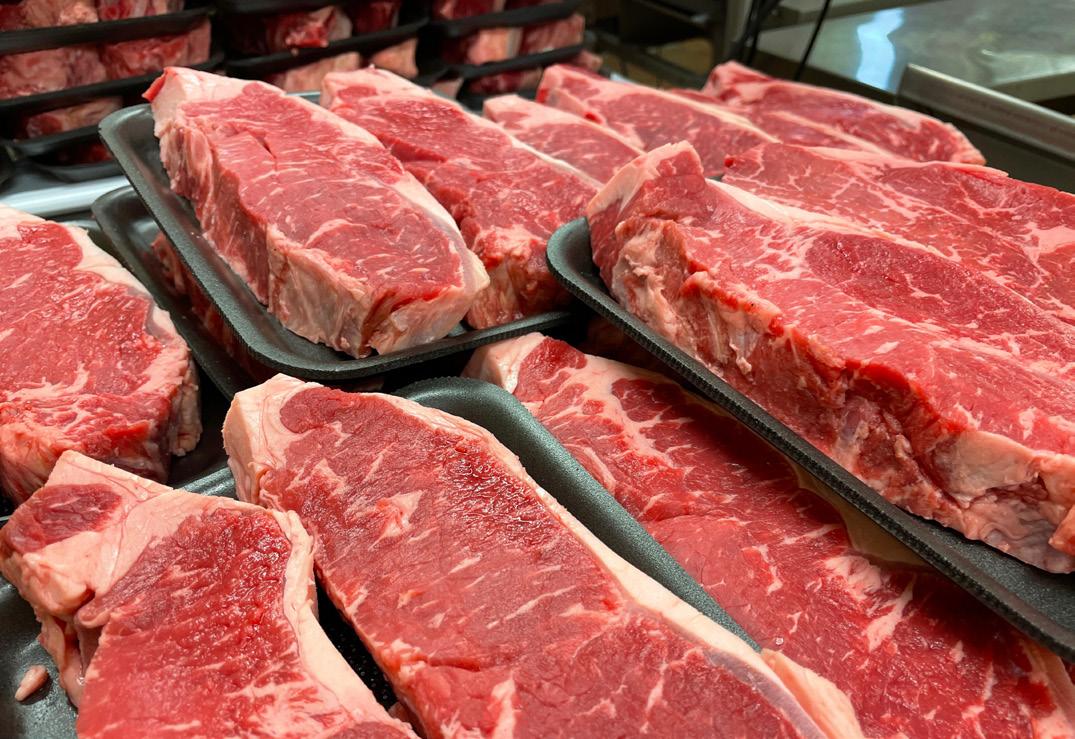
On the other hand, more than nine in 10 shoppers say they would spend extra on occasion, with holidays, special celebrations and entertaining as the top reasons.
“As price-conscious shoppers look for ways to continue enjoying their favorite proteins, they are cooking more at home and including meat in everything from new recipes found online to their favorite comfort meals and holiday feasts,” said Rick Stein, vice president of fresh foods for the Food Industry Association.
“With shoppers including meat in nearly 87% of homecooked meals every week and looking to meat to make occasions special, the opportunities to provide great choice, taste, and value continue to grow.”
The Power of Meat study was conducted by 210 Analytics on behalf of the Food Industry Association and the Meat Institute’s Foundation for Meat and Poultry Research and Education. T C
Story courtesy of the Meat Institute
When shoppers hear
— Julie Anna Potts, Meat Institute
THE 19TH ANNUAL STUDY SHEDS LIGHT ON CONSUMER INSIGHTS AND PREFERENCES
98% of American households purchase meat of Americans are self-described meat eaters 80%
74% of meat eaters believe meat belongs in healthy, balanced lifestyles
Overall, household penetration averages above 97% for all incomes, ethnicities, household sizes and ages
Boomers buy meat most frequently (53 times per year)
Millennials spend the most money per meat purchase (nearly $17)
Gen X (the smallest of the generations) accounts for the greatest proportion of sales (32%)
43% of Americans are cutting back on restaurant meals
Of meat eaters who are buying restaurant meals less often, 75% try to recreate restaurant-type meals at home
54% of meat shoppers look to save money at the grocery store
• 43% buy larger bulk packs to save money over time
• 30% buy smaller packages to save money immediately
Americans prepare 4.6 dinners at home per week, and 87% include meat or poultry
Like many cattle raisers, Colt Hoffmann, a resident of Marlin, epitomizes what it means to preserve a ranching heritage.
His family traces back farming and ranching traditions to the 1880s. He says his upbringing was intertwined with the rhythms of the cattle industry.
The most rewarding aspect of ranching, Hoffmann says, can be found in the routine work of caring for cattle.
“Working cattle daily brings a profound sense of accomplishment, not only in raising them, but also in satisfying customers’ needs and earning their repeat business, which I find deeply rewarding,” he says.
Hoffmann is a graduate of Texas A&M University, holding dual bachelor’s degrees in political science and range management. He also holds a juris doctor from Texas A&M University School of Law in Fort Worth.
Switching between the worlds of law and ranching, Hoffmann can be categorized like many next-generation cattle producers — balancing careers both on the ranch and beyond its gates.
“I’ve lived and breathed the cattle industry since birth,” Hoffmann says. “While I hold a law degree and dabble in legal work, ranching across Texas and New Mexico remains my primary occupation, supplying Corriente cattle to team roping and rodeo producers nationwide.”
His journey with Texas & Southwestern Cattle Raisers Association began through chance encounters and a shared passion for preserving ranching heritage.
Hoffmann’s involvement grew after he represented the association while attending the Young Cattlemen’s Conference, hosted by National Cattlemen’s Beef Association, in 2016.
He was elected to the Texas & Southwestern Cattle Raisers Association board of directors in 2021. Since, he has served on the natural resource and wildlife committee, and membership development committees.

Reflecting on his journey, Hoffmann offered advice for those seeking to get plugged into the association.
“Try to go to as many leadership development events as possible,” he says. “Witnessing TSCRA’s efforts firsthand provides a deeper understanding and appreciation for the organization’s advocacy work, fostering valuable connections, friendships and knowledge within the cattle industry.”
For all the positives ranch life brings, Hoffmann says there are some significant challenges looming for the future. Among them is the perennial clash between urban expansion and rural preservation.
“TSCRA plays a crucial role as our advocate, navigating the struggle between expanding cities and rural communities, ensuring our voices are heard and our way of life is preserved,” Hoffmann says.
He adds it is easy to stay encouraged while standing together with others in Texas & Southwestern Cattle Raisers Association.
“Despite the hurdles faced every day, it’s heartening to witness the next generation of cattle producers and the future of our organization,” he says.
With his newborn daughter, Hollie, and his wife, Paige, by his side, Hoffmann remains inspired to take on whatever may come their way.
He says, “Looking to the future of cattle ranching in the Southwest, my hope is for the preservation of our traditional way of life amid population growth and advancing technologies, ensuring that the timeless traditions passed down to us continue to thrive alongside modern advancements.” T C
Maybe you’re not convinced that Invora® herbicide stops invasive brush in its tracks. And perhaps you doubt that it controls mesquite and huisache for so long. So how about this: When you apply it in combination with the RangeView™ digital platform, we guarantee* the results for the long haul. We call it the RangeView Restoration Pledge. You’ll call it the reason you need to try Invora herbicide.
See how to get up to five years of guaranteed brush control


CARL RAY POLK JR. President P.O. Box 155108 Lufkin, Texas 75915

STEPHEN DIEBEL
First Vice President 3907 Salem Rd. Victoria, Texas 77904
John M. “Jack” Shelton III Amarillo, 1984-1986
James L. Powell San Angelo, 1988-1990
Tom Beard Alpine, 1994-1995
C. Coney Burgess Amarillo, 1997-1999
J. Mark McLaughlin San Angelo, 1999-2001
John E. Dudley Comanche, 2001-2003
Bob McCan Victoria, 2003-2005
C.R. “Dick” Sherron Beaumont, 2005-2007
Jon Means Van Horn, 2007-2009
Dave Scott Richmond, 2009-2011
Joe J. Parker Byers, 2011-2013
Pete Bonds Saginaw, 2013-2016
Richard Thorpe lll Winters, 2016-2018
Robert E. McKnight Jr. Fort Davis, 2018-2020
G. Hughes Abell Austin, 2020-2022
Arthur G. Uhl III San Antonio, 2022-2024
VICE PRESIDENTS
Jack Hunt San Juan Capistrano, California
Richard Wortham Austin
P.O. Box 101988 Fort Worth, Texas 76185 817-332-7064 • 800-242-7820
Jason Skaggs Executive Vice President/ Chief Executive Officer
Jaclyn Roberts Parrish Executive Director, Communications & Marketing

DAN GATTIS
Second Vice President and Secretary/Treasurer 213B W. 8th St. Georgetown, Texas 78626
Emily Lochner
Executive Director, Engagement & Education
Grace Dunham Executive Director, Events & Partnerships
Megan Wills Executive Director, Finance & Human Resources
Michele Woodham Executive Director, Insurance Services
Scott Williamson Executive Director, Law Enforcement, Brand & Inspection Services
Lisa Walker Executive Director, Membership & Operations
919 Congress Ave., Suite 750 Austin, Texas 78701 512-469-0171
Melissa Hamilton Executive Director, Government Relations
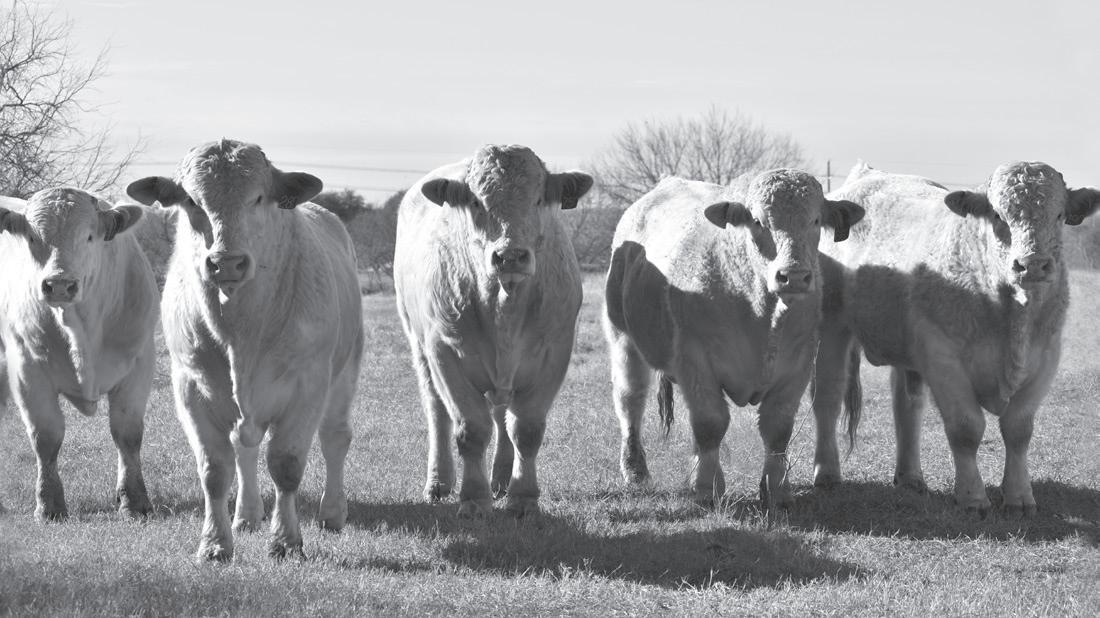







DIRECTORS
Joe M. “Jody” Bellah, Throckmorton
Blake Birdwell, Canyon
E. S. F. “Swasey” Brainard II, Pampa
J. K. “Rooter” Brite Jr., Bowie
Donnell Brown, Throckmorton
Campbell Burgess, Amarillo
Deborah Clark, Henrietta
Lynn Cowden, Skellytown
J. B. Daniel, Crowell
James Henderson, Memphis
Clayton Henry, Wichita Falls
Brooks Hodges, Guthrie
Joe Leathers, Guthrie
Frank McLelland, Tahoka
Jeff Mitchell, Amarillo
Gage Moorhouse, Benjamin
Diaz W. Murray, Wichita Falls
J. Malcolm Shelton IV, Amarillo
Dale A. Smith, Amarillo
Jim Thompson, Breckenridge
Ross Thompson, Iowa Park
Wesley Welch, Lubbock
HONORARY DIRECTORS
William L. “Buck” Arrington, Pampa Van Baize, Nocona
Emry Birdwell Jr., Henrietta
Mary Lou Bradley-Henderson, Childress
R. A. “Rob” Brown Jr., Throckmorton
J. D. Cage, Muleshoe
Mike Gibson, Paducah
Ronald J. “Ron” Gill, Chico
Robert B. Mansfield, Amarillo
Tom Moorhouse, Benjamin
Boots O’Neal, Guthrie
James Palmer, Roaring Springs
Wilson Scaling, Henrietta
Chris Scharbauer, Amarillo
Tom Watson, Muleshoe
John Welch, Wolfforth
A. B. “Buck” Wharton III, Vernon
Tom Woodward, Decatur
Kevin Busher, Winters
Charles M. “Charley” Christensen Jr., San Angelo
C.A. “Chili” Cole IV, San Angelo
Alan F. Curry, San Angelo
James H. Dudley IV, Horseshoe Bay
Amanda Dyer, Fort Davis
Johnny Ferguson, Big Lake
D.A. “Day” Harral, Fort Stockton
Ron Helm, Van Horn
Heath Hemphill, Coleman
Shelby W. Horn, Fredericksburg
Larry R. Horwood, Sterling City
Grant Jones, Rochelle
Mark W. Jones, Brady
W. Clay Jones, Brady
Ty Keeling, Boerne
Lorenzo Lasater, San Angelo
Brian T. McLaughlin, Midland
David L. Neal, San Angelo
Gerald Nobles Jr., Brady
James Oliver, Ozona
Wade Perks, San Angelo
Jessica Tate, Marfa
James Uhl, Fort McKavett
Cody Webb, Barnhart
Ken Welch, Baird
Ray W. Willoughby III, Eldorado
HONORARY DIRECTORS
C. A. “Chip” Cole III, San Angelo
William C. “Billito” Donnell Jr., Alpine
Richard Gates, Marfa
W. H. “Billy” Green III, Albany
Rafe Hargrove, Rotan
Dr. Joe Pat Hemphill, Coleman
Ken Jordan, San Saba
Don Keeling, Fredericksburg
Chris Lacy, Fort Davis
Laurence M. Lasater, San Angelo
Ben Love, Marathon
Len P. Mertz, San Angelo
Tom Perini, Buffalo Gap
Bill Phinizy, Gail
Frank Price, Sterling City
Gordon E. Sauer, Fredericksburg
Danny B. Stewart, Sterling City
Rick Tate, Marfa
Cliff Teinert, Albany
Dennis W. Webb, Barnhart
W. C. “Billy” Williams, Mertzon
DIRECTORS
Ford Drummond, Pawhuska, Oklahoma
HONORARY DIRECTORS
Les Nunn, Pauls Valley, Oklahoma
DIRECTORS
Edward Bordovsky Jr., Riviera
Austin Brown III, Beeville
W. Christopher Bush, Refugio
James Clement lll, Kingsville
David S. Crow, Corpus Christi
Dustin Dean, Floresville
David DeLaney, Kingsville
Robert “Bobby” Dobson, Birmingham, Alabama
James L. “Jamie” Donnell Jr., Fowlerton
J. David Eppright, Cost
Benjamin Eshleman III, Corpus Christi
Joseph B.C. Fitzsimons, Carrizo Springs
Cody Fry, Lueders
Jim L. Gates, Pearsall
Milton S. Greeson Jr., Victoria
Bret Griffith, Del Rio
Heath Grigg, Kingsville
Marty R. Harris, Tilden
Anson Howard, San Antonio
Leslie Kinsel, Cotulla
Claude Koontz, San Antonio
Steven J. Mafrige, Tilden
Richard Marbach, Victoria
Beth Knolle Naiser, Sandia
Federico Nieto, Raymondville
T. Michael O’Connor, Victoria
Jason Peeler, Floresville
J.R. Ramirez, La Pryor
Gilly Riojas, Corpus Christi
Michael Sasser, Corpus Christi
Lew Thompson, Pearsall
C. Clark Welder, Beeville
John Zacek, Victoria
HONORARY DIRECTORS
Steve G. Beever, Pearsall
Richard H. Bennett, San Antonio
Chip Briscoe, Carrizo Springs
Martin W. Clement II, Kingsville
Thurman S. Clements Jr., Victoria
Nixon Dillard, Pleasanton
Trainor Evans, Mercedes
Thomas J. “Tommy” Haegelin, Concan
Dr. Philip C. Hardee, Beatrice, Alabama
Allen C. “Dick” Jones IV, Corpus Christi
David W. Killam, Laredo
Dan W. Kinsel III, Cotulla
Steve C. Lewis, San Antonio
Jim McAdams, Seguin
James A. McAllen, Linn
Tim Pennell, Westhoff
Jim Peters, Quemado
Scott Petty Jr., San Antonio
Tom Risinger, Weslaco
M. Stuart Sasser, Corpus Christi
Frates Seeligson Jr., San Antonio
Richard Traylor, Batesville
Roger F. Welder, Victoria
David W. Winters, Del Rio
Bill Cawley, Crockett
Wayne Cockrell, College Station
Herff Cornelius Jr., Wadsworth
Carlos Detering III, Houston
Gardner H. Dudley, Houston
Lloyd French IV, Houston
Dan Gattis, Georgetown
Kelley Sullivan Georgiades, College Station
George Harrison, Bay City
Robert Hodgen, Houston
Colt Hoffman, Marlin
Clay Kenley, Crockett
Clive Runnells III, Austin
John Sumner Runnells III, Bay City
Tony Spears, Rosanky
John “Rocky” Sullivan, Galveston
Claudia Scott Wright, Richmond
Jay C. Evans, Dripping Springs
Leroy Ezer, Anahuac
Frank Green, Liberty
Tom J. Haynie, Navasota
Coleman H. Locke, Hungerford
Katharine Armstrong Love, Austin
Richard M. Lucas Jr., Houston
William “Alan” McNeill, Beaumont
Evalyn Moore, Richmond
Raymond E. Moore IV, Richmond
Rick Peebles, Baytown
Gary Price, Blooming Grove
Gordon Richardson, Caldwell
Charles R. “Butch” Robinson, Navasota
Nolan Ryan, Round Rock
Ed Small, Austin
Guy F. Stovall Jr., El Campo
Gerald Sullivan, Galveston
John L. Sullivan, Galveston
Robert J. Underbrink, Houston
Beau Brite White, Rosanky
Dr. M. R. “Mike” Wirtz, Brenham
April Bonds, Saginaw
Missy Bonds, Saginaw
John L. Cantrell, Cresson
Ian Chapman, Madill, Oklahoma
Hunter Crow, Dallas
James T. Dangelmayr, Muenster
Seth Denbow, Weatherford
Crawford Edwards, Fort Worth
John Greer, Henrietta
Jason Harlow, Dallas
Pete Hudgins, Sherman
Tom Johnson, Wortham
Ken Leiber, Fort Worth
Stefan Marchman, Fort Worth
William H. McCall, Fort Worth
Dan Nance, Haslet
Susan Roach, Fort Worth
Stephen S. “Steve” Sikes, Fort Worth
Bragg Smith III, Dallas
Curtis Younts Jr., Belton
Bradford S. “Brad” Barnes, Fort Worth
George Beggs IV, Fort Worth
John W. Carpenter III, Dallas
Barrett D. Clark, Breckenridge
Markham B. Dossett, Waco
Bob Drake, Davis, Oklahoma
James H. “Jim” Dudley, Comanche
John Z. Kimberlin Jr., Dallas
James E. “Jim” Link, Crowley
Jon David Mayfield, Dublin
C. H. “Terry” McCall, Comanche
Bob Moorhouse, Weatherford
Russell “Rusty” Noble, Ardmore, Oklahoma
Mary Joe Reynolds-Montgomery, Fort Worth
Tom L. Roach III, Bozeman, Montana
Stephen T. “Steve” Swenson, Dallas
Bart Wulff, Dallas
In the heart of Hopkins County, with a backdrop of rolling fields and grazing livestock, Bo Fox grew up surrounded by agriculture. From a young age, he found himself drawn to the land, its people and the values they upheld.
As Fox navigated his college years, he was unsure of his path. But his family’s dual legacies surrounding criminal justice and rural America lingered in his mind. He attended Texas A&M University in Commerce, where he majored in agriculture.
“I knew I wanted to be involved in agriculture, but somewhere in there, I kind of had an epiphany,” Fox says. “I decided I wanted to pursue a career in law enforcement.”
He came by the decision naturally. His grandfather served 33 years in the Dallas Police Department, alongside his fatherin-law, wife’s uncle and cousin in the Texas Department of Public Safety.
In 1995, Fox began what would become his 28-year-long law enforcement career at the Lindale Police Department, later transitioning to the Hopkin County Sheriff’s Office, and then the Sulphur Springs Police Department.
Since joining the ranks of Texas & Southwestern Cattle Raisers Association as a special ranger in 2018, Fox’s days have been a whirlwind of action and purpose. From tracking cattle rustlers through the rugged terrain of Northeast Texas to providing support and counsel to farmers and ranchers, his commitment to justice knows no bounds.
“Every day is different,” Fox says. “No two days are ever the same.”

“I started as a patrol officer and worked my way up to patrol sergeant, patrol lieutenant, and then criminal investigator, while also serving on the SWAT team for over 15 years,” Fox says.
During his time at Sulphur Springs Police Department, fate intervened. An encounter with a friend, mentor and former Texas & Southwestern Cattle Raisers Association Special Ranger Toney Hurley, left Fox thinking about what his next chapter could be.
“Through a casual campfire conversation, Toney expressed his intent to retire and encouraged me to apply for his position, aligning perfectly with my agricultural background and law enforcement career aspirations,” Fox says. “Ultimately, it led me to embrace the opportunity without looking back.”
One case, which occurred when he was still new to the job, remains etched in his memory. It involved a career con artist who defrauded multiple people.
“My partner, Troy McKinney, and I pursued the investigation, leading to multiple arrests and eventually apprehending him in South Louisiana with the assistance of the U.S. Marshals Service, shedding light on the extent of his fraudulent activities,” Fox says.
Throughout his six years as a special ranger, Fox notes his favorite part is engaging with cattle raisers and farmers on a daily basis, and witnessing their industry dedication.
“My primary focus is aiding good people and restoring what they’ve lost,” Fox says. “Unlike my previous job dealing with heinous crimes, where the losses are irreparable, here we have the chance to make people whole again, and that’s always my first priority.”
In the quiet moments between cases, Fox says he enjoys spending time with his family. Whether tending to his small hay farm or cheering on his daughters at their activities, Fox cherishes the moments that ground him amid the demands of his profession.
“My family, my wife and my girls are number one on my list under God,” Fox says. “I would hope that they would describe me as a person of integrity; an honest, hard-working person.” T C
You won’t be measuring fly control into cattle minerals. You will be measuring added weight gains.
Altosid® IGR can protect your operation and bottom line from profit-eating horn flies that affect cattle productivity and health. Get targeted horn fly control with Altosid® IGR.

Contact your feed dealer today for horn fly control designed to perform on pasture.


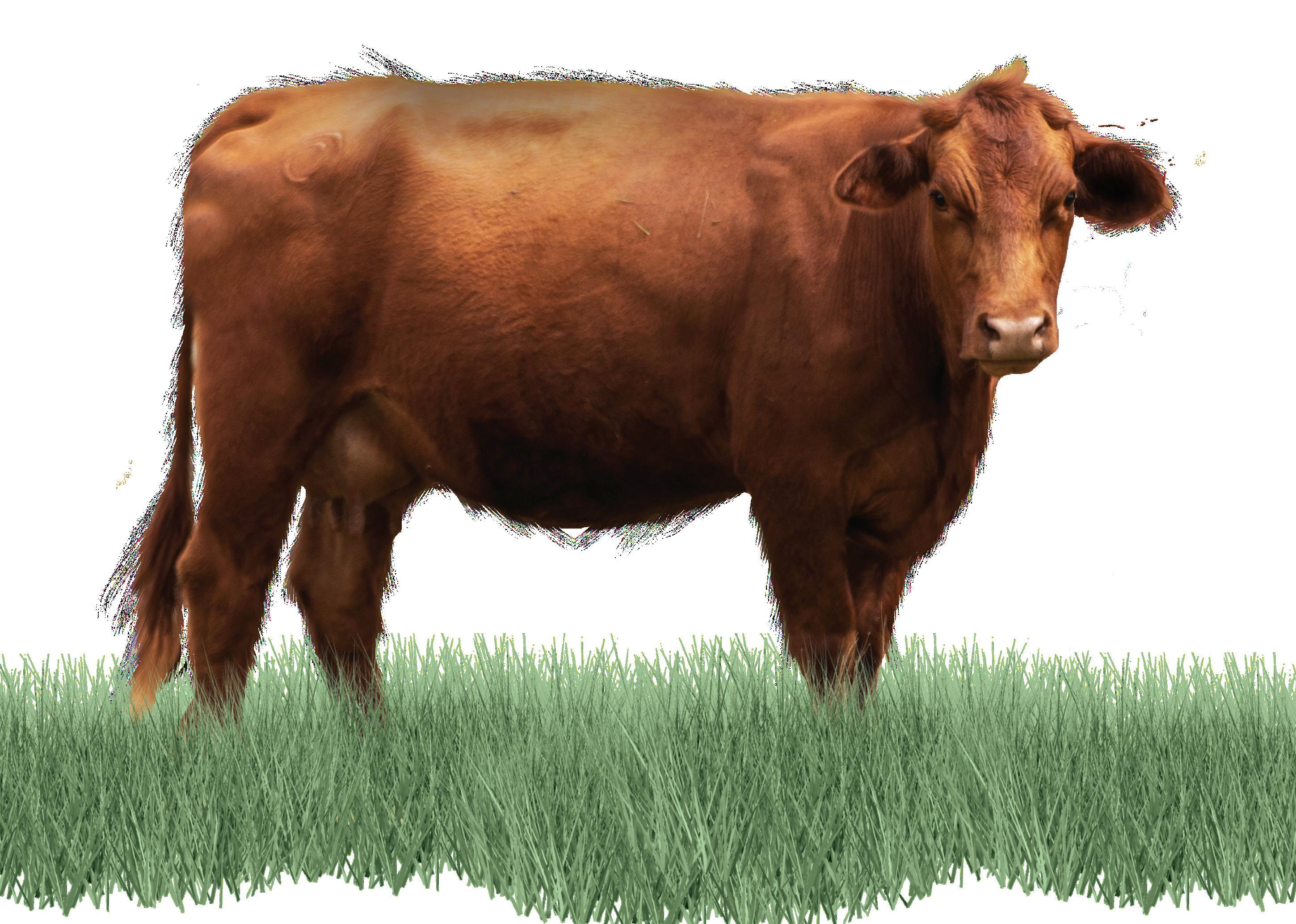

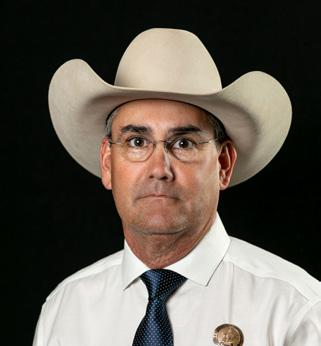

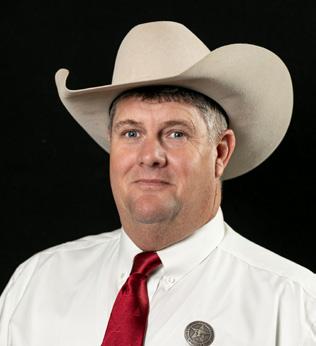

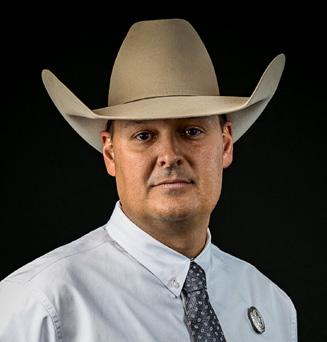


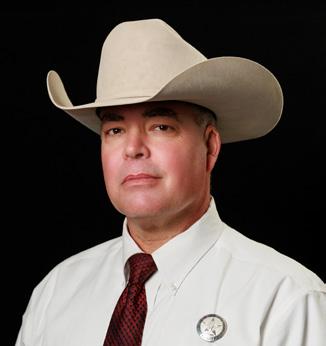
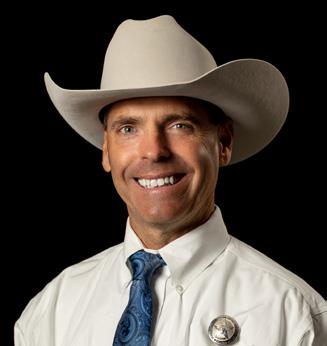


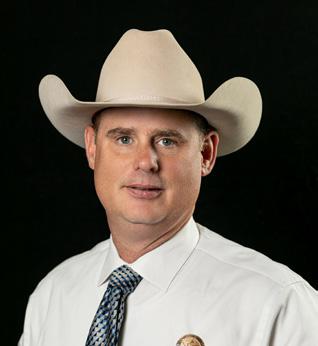


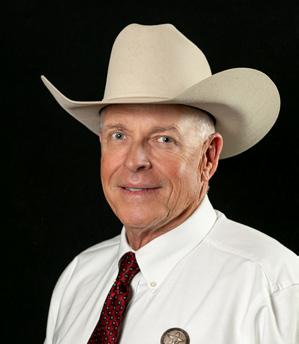


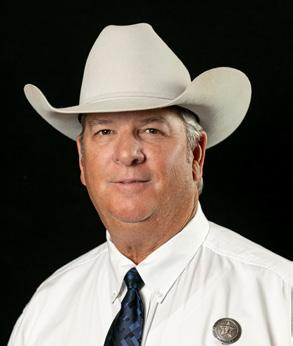

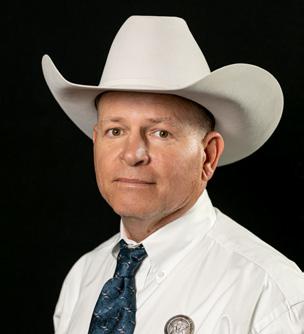
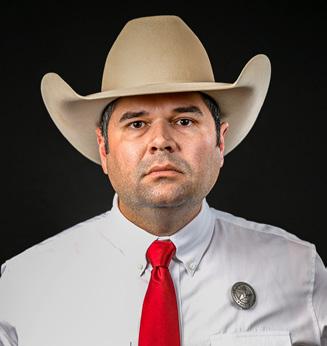

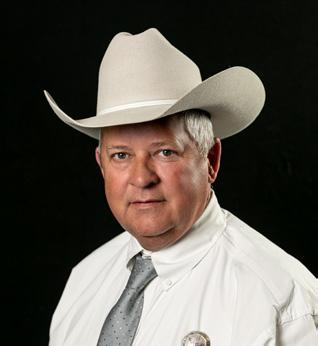

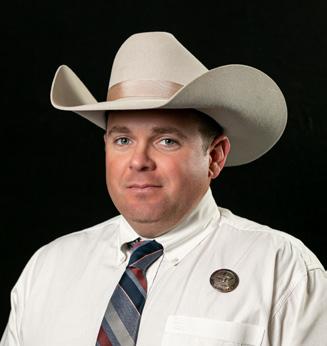
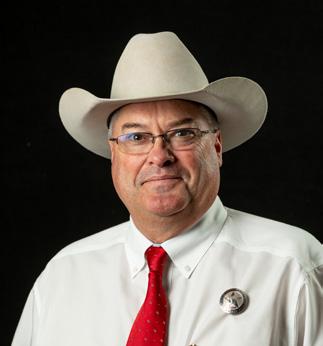
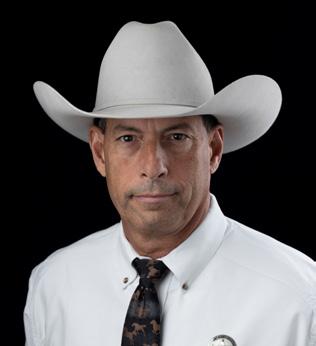
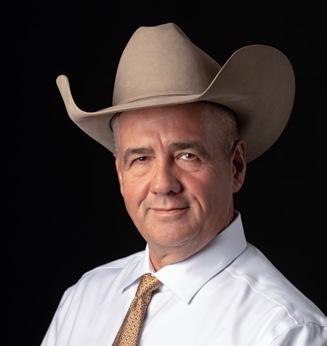
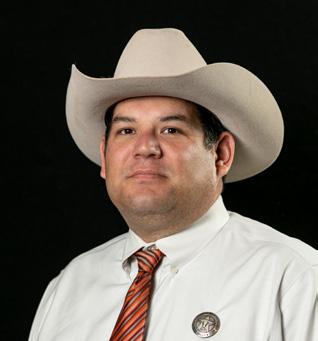
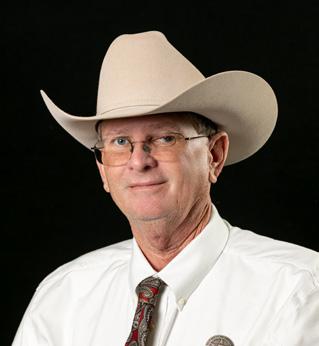
4B Gelbvieh & Balancer Sulphur Springs
4M4 Cattle Ltd. Salado
6C Bluff Dale
7 Mile Cattle Co. Miami
7H Farms LLC Saragosa
Rebecca Adams Campbell
Ag Women Connect Wolfforth
Simon Alfaro Fort Worth
All In Ranch Fort Worth
Michael Allen Victoria
Armored Boar Chilton
Frank Baca Caldwell
Cody Barnett Decatur
Jason Barrett Roanoke
Baylee Bennett Alvin
Blanks Ranches Glen Rose
Blessed B Ranch Damon
Blue Moon Elite Equine & Cattle Co. Lucas
Dave Boggs San Luis Obispo, California
Bolorosa Ranch Dallas
Troy W. Boulter Abilene
Grace Bowden Lubbock
Bowen Ranch Lakeway
Eugene Bredthauer Brenham
Brewer 10 Farm O'Donnell
Butler Cattle Co. Coleman
Buzzard X Cattle LLC Matador
George Bynum Weatherford
Caliche Hills Cattle Co. LLC George West
Casa Blanca Ranch Fort Worth
CH Compound LLC Cleburne
Chalk Bluff Resources LLC Friendswood
Shannon Clark Rosharon
Corder Brothers Cattle Co. Fort Worth
Costaplenty Ranch Decatur
Cynthia Coyle-Gilbert Denton
Daniel Ranch Fort Worth
Decker Farms Nacogdoches
Diamond H Cattle Calvert
Natalie Dietrich Buchanan Dam
Charles Donaghey Holliday
Double F Cattle Co. Houston
Double S Cattle Co. LLC Midland
Mariah Mae Dyson Canyon
E&C Cattle LLC Cotulla
Casey Edwards Gordon
Mackenzie Elliot Baytown
Peyton Emerson Lufkin
Eppright Ranch Fredericksburg
Etter Ranch LLC Abilene
Elizabeth Felder Deer Park
Antonio Figueroa Plano
Finley Livestock LLC Weatherford
Florence Farms Anson
Flying H Farms
Moody
Fort Worth Cattle Co.
Keller
Francis Farms Denison
Danny & Prairie Freeman
Albany
G.A. & Ed Lowrance Inc. San Antonio
Salvador Gandara Joshua
Milena Gandara Joshua
Gill Ranch Abilene
Ryleigh Gilfoil Sealy
GLG Livestock Cresson
Marco Godinez Liberty, New York
Gralivia Enterprises LLC
Jasper
Kadie Graves College Station
Keyara Guerrero Pasadena
H3 Ranch Dayton
Charles & Sandra Hale Pontotoc
Mason Hall
Tyler
Matt Hart Caldwell
Kohl Hayes
Glen Rose
Paul Hayes V
Glen Rose
Ainslea Hayes
Glen Rose
Bralen Heger
Weimar
High Hope Ranch
Glen Rose
Mary Kate Hill Nacogdoches
Chuck & Dena Holloway
Sunset
Madyson Holub Schulenburg
Chris Hughes Montague
Ryan Janak Hallettsville
James E. Bashaw & Co.
Houston
Carter Johnson River Oaks
Harper Johnson Nazareth
Johnson Union Creek Farm Amarillo
JR Sparks Farms Garrison
Logan Kainer Weimar
Kakarot Ranch Natalia
Kellam Land & Cattle LLC
The Colony
Evelyn Kipe
Baytown
Claudia Knudsen Hempstead
Nathanial Koetter
Archer City
L3 Cattle Somerville
Lake Lavon Stables
Lucas
John Lampton Lampasas
Langley Enterprises Hico
Lansford Cattle Co. Fredericksburg
Lazy 5 Cattle Co. LLC Wimberley
Lazy S Farm Shelbyville
Lazy T Land & Cattle Abilene
Richard Lehman
Iowa Park
Hannah Lemley San Angelo
Ljungdahl Ranch Pleasanton
Lonestar Longhorns
Marble Falls
Harvey Lusk Hickory Creek
Dusty Lynch
Crawford
Johnny MacNaughton
McGregor
Kailyn Malaer Hallettsville
Julie Mattox Yantis
McCaslin Longhorn Tulia
McCoy Ranch Fort Worth
McDowell Ranch San Antonio
Kendall McKinney San Marcos
Luke Meader Marfa
Jayce Meyring Lubbock
Midgard Cattle Co. Muldoon
Rhett Miller Savanna, Oklahoma
Addison Moore Lufkin
Paul Morris Whitewright
Christine Morris Campbell
Blake Morrow Bridgeport
Grace Munos Louise
Rick & Wendi Nelinson Livingston
No Money Cattle Co. Benbrook
Delaney Northern Corsicana
Rylynn Null Bigfoot
Old River Ranch Dallas
Shedrack Omale Ames, Iowa
Larry & Cindy Osborn Roland, Oklahoma
P413 Ranch Bryan
Michael Palmer Fort Worth
Palo Duro Ranch Inc. Spearman
Weston Parr Telephone
Brooke Parrish Lincoln, Nebraska
Kenny & Sheli Patin New Braunfels
Kedren Penney Tyler
Kyle Penney Tyler
Keith & Jeri Phillips Telephone
Kelby Phillips Aledo
Philpott L&L Cattle Co. Tuscola
Daniel Pittsford Lipan
PK Mini Farms Plantersville
Luca Porcarelli Waco
Katharine Porter Karnes City
Audrey Price
Sterling
Brantley Price
Sterling PVC Ranch Caldwell
Rabenaldt Farms Point
Rail Creek Ranch Mansfield
Reeds Murray Cattle Co. LLC Fort Worth
Ben Reitan Laneville
Kinsley Rhodes Shepherd
RM Cattle Co. Hallettsville
Rockin S W San Antonio
Rockin T Ranch Eustace
Rockin' 3B Fort Worth
Rocking Heart Ranch Seguin
Rockn50 Ranch Abilene
Alexa Rohe Fort Worth
Rolling J Ranch Houston
Rolling S Ranch II Bedias
Elizabeth Rone Courtland, Mississippi
Russell Ranch Kingston, Oklahoma
Wade Sanders Alliance, Nebraska
Saunders Farms Weatherford
Larry Scott Montague
Scott Luttrell Farm & Ranch Briscoe
Self Cattle Arlington
Sells Ranch Thrall Cody Shook Savoy
Ethan Shumate Maud
Sisak Farms Inc. New Braunfels
Six Bar Ranch Dawson
Aiden Smith Abbott
Smith Family Arlington
SR Farms Cleburne
Star 10 Ranch Happy
Stillhouse Land & Cattle LLC Italy
Sunlit Valley Ranch Lillian
Sam Talley Stillwater, Oklahoma
Tenny Farm Springtown
Texas Star Ranch Sulphur Springs
Jason W. Thompson Huntsville
Mathilda Thompson Aledo
Cory Thrasher Murchison
TJR Ranch Austin
Romney Todd Collinsville
Trail Boss Ranch Hubbard
Twisted H Ranch Mineral Wells
Veseris Quitman
WAG Ranch Wingate
Khole Walters
Round Rock
Brooke Watkins Greenville
Hailee Wehrheim Karnes City
Wellmann Ranch Brenham
Richard Werner Houston
Peyton White Wink Widener Cattle & Horses Idalou
Kyleigh Willis Temple
Carl & Kodi Yorman Inola, Oklahoma
Evan Yount Lubbock

Elkhart Horse Auction
Where: Elkhart
Phone: 903-764-1495
Sale Day: Saturday
Contact: Tiffany Patterson, 903-388-7288
Atascosa Livestock Exchange
Where: Pleasanton Phone: 830-281-2516
Sale Day: Tuesday
Contact: Marvin Bendele, 210-213-5890
Four County Auction
Where: Industry
Phone: 979-357-2545
Sale Day: Tuesday
Contact: Lisa Sebastian, 979-270-3041
Muleshoe Livestock Auction
Where: Muleshoe
Phone: 806-272-4201
Sale Day: Friday
Contact: Leo Aviles, 956-437-3899
Beeville Livestock Comm.
Where: Beeville
Phone: 361-358-1727
Sale Day: Friday
Contact: Robert Bridge, 361-542-6693
Meridian L/S Comm. Co.
Where: Meridian Phone: 254-435-2988
Sale Day: Monday
Contact: Larry Brown, 254-265-1920
Clifton Livestock Comm. LLC
Where: Clifton Phone: 254-675-7717
Sale Day: Wednesday
Contact: Larry Brown, 254-265-1920
J & J Livestock Auction
Where: Texarkana
Phone: 903-832-3576
Sale Day: Saturday
Contact: Cheri Beal, 903-280-4554
Brazos Valley Livestock Comm.
Where: Bryan
Phone: 979-778-0904
Sale Day: Tuesday
Contact: Nina Nygard, 512-281-6753
Caldwell Livestock Comm.
Where: Caldwell
Phone: 979-567-4119
Sale Day: Wednesday
Contact: Mark Nygard, 512-281-6330
Lockhart Auction
Where: Lockhart
Phone: 512-398-3476
Sale Day: Thursday
Contact: Nina Nygard, 512-281-6753
Bruce Overstreet Livestock
Where: Pittsburg
Phone: 903-856-3440
Sale Day: Monday
Contact: Michelle Willeford, 903-767-0670
Tri County Livestock Market
Where: New Summerfield
Phone: 903-726-3291
Sale Day: Saturday
Contact: Jason Spence, 903-316-1950
Coleman Livestock Auction
Where: Coleman Phone: 325-625-4191
Sale Day: Wednesday
Contact: Dave Williams, 325-669-2030
Cattleman’s Columbus Livestock Auction
Where: Columbus Phone: 979-732-2622
Sale Day: Wednesday
Contact: Lisa Sebastian, 979-270-1228
Comanche Livestock Exchange
Where: Comanche Phone: 325-356-5231
Sale Day: Saturday
Contact: Michael Davis, 254-879-3121
The New Gainesville Livestock Auction
Where: Gainesville
Phone: 940-665-4367
Sale Day: Friday
Contact: Robin Gibbs, 903-227-0791
Coryell County Comm.
Where: Gatesville Phone: 254-865-9121
Sale Day: Saturday
Contact: Ray Davis, 254-718-5512
Cattleman’s Livestock Comm.
Where: Dalhart
Phone: 806-249-5505
Sale Day: Thursday
Contact: Clifton Miller, 806-570-7439
Hereford Livestock Auction
Where: Hereford
Phone: 806-240-3082
Sale Day: Tuesday
Contact: Joe Bob Via, 806-452-9280
Cuero Livestock Comm. Where: Cuero Phone: 361-275-2329
Sale Day: Friday
Contact: Kaylee Malatek, 979-942-0323
Texas Cattle Exchange
Where: Eastland Phone: 254-629-2288
Sale Day: Tuesday
Contact: Ronnie Ober, 817-371-7071
Dublin Livestock Auction Where: Dublin Phone: 254-445-1734
Sale Day: Friday
Contact: Ronnie Ober, 817-371-7071
Erath County Dairy Sale Where: Dublin Phone: 254-968-7253
Sale Day: Friday
Contact: Bob McBryde, 940-859-6217
Stephenville Cattle Co. Where: Stephenville Phone: 254-968-4844
Sale Day: Wednesday
Contact: Bob McBryde, 940-859-6217
Flatonia Livestock Comm. Where: Flatonia Phone: 361-865-3538
Sale Day: Monday
Contact: Shannon Gallip, 512-995-1492
Schulenburg Livestock Auction
Where: Schulenburg Phone: 979-743-6566
Sale Day: Saturday
Contact: Vance Weltner, 210-473-9099
Floydada Livestock Sales
Where: Floydada
Phone: 806-983-2153
Sale Day: Wednesday
Contact: JE Stone, 806-777-4396
Pearsall Livestock Auction
Where: Pearsall
Phone: 830-334-3653
Sale Day: Wednesday
Contact: Clarence Stevens, 210-415-0441
Gillespie Livestock Co.
Where: Fredericksburg
Phone: 830-997-4394
Sale Day: Wednesday
Contact: Larry Bowden, 210-846-0380
Gonzales Livestock Market
Where: Gonzales
Phone: 830-672-2845
Sale Day: Saturday
Contact: Landyn Maguglin, 361-492-9484
Nixon Livestock Comm.
Where: Nixon
Phone: 830-582-1561
Sale Day: Monday
Contact: Landyn Maguglin, 361-492-9484
Longview Livestock
Where: Longview
Phone: 903-235-6385
Sale Day: Thursday
Contact: Paul Pruitt, 903-725-6200
Mid-Tex Livestock Auction
Where: Anderson
Phone: 936-825-3970
Sale Day: Thursday
Contact: Rick Faught, 936-442-1039
Navasota Livestock Auction
Where: Navasota
Phone: 936-825-6545
Sale Day: Saturday
Contact: Rick Faught, 936-442-1039
Seguin Cattle Co.
Where: Seguin
Phone: 830-379-9955
Sale Day: Wednesday
Contact: Elizabeth Cortez, 830-857-1945
Hamilton Livestock Comm.
Where: Hamilton
Phone: 254-386-3185
Sale Day: Tuesday
Contact: Bob McBryde, 940-859-6217
Gore Family Auction Center
Where: Silsbee
Phone: 409-782-0612
Sale Day: Saturday
Contact: Christy McCoy, 409-782-0612
Athens Comm. Co.
Where: Athens
Phone: 903-675-3333
Sale Day: Friday
Contact: Brandy Baughman, 903-440-4382
Edinburg Livestock Auction
Where: Edinburg
Phone: 956-383-5671
Sale Day: Saturday
Contact: Coney Alvarez Jr., 956-437-3899
Hubbard Livestock Market
Where: Hubbard
Phone: 254-576-2584
Sale Day: Monday
Contact: Bob McBryde, 940-859-6217
Sulphur Springs Livestock Comm.
Where: Sulphur Springs
Phone: 903-885-2455
Sale Day: Monday
Contact: Paul Pruitt, 903-725-6200
East Texas Livestock Auction
Where: Crockett
Phone: 936-544-2246
Sale Day: Tuesday
Contact: Cheyenne London, 936-222-3689
Big Spring Livestock Auction
Where: Big Spring
Phone: 432-267-5881
Sale Day: Wednesday
Contact: Bruce Brandenberger, 254-977-5763
Edna Livestock Auction
Where: Edna
Phone: 361-782-7666
Sale Day: Monday
Contact: Galynn Mazoch, 979-578-1823
Kirbyville Auction Barn
Where: Kirbyville
Phone: 409-423-2612
Sale Day: Saturday
Contact: Erica Morgan, 409-509-1946
Gulf Coast Livestock Market
Where: Alice
Phone: 361-664-4395
Sale Day: Tuesday
Contact: Ramiro Garcia, 361-460-0008
Johnson County Cattle Auction
Where: Cleburne
Phone: 817-556-9090
Sale Day: Saturday
Contact: Lee Snyder, 254-707-1682
Karnes City Auction
Where: Karnes City
Phone: 830-780-3382
Sale Day: Saturday
Contact: Landyn Maguglin, 361-492-9484
Karnes County Livestock Exchange
Where: Kenedy
Phone: 830-583-2574
Sale Day: Thursday
Contact: Kaylee Malatek, 979-942-0323
Cattlemen’s Livestock Comm.
Where: Paris
Phone: 903-784-2238
Sale Day: Saturday
Contact: Lana Caldwell, 903-908-0530
Paris Livestock Auction
Where: Paris
Phone: 903-739-2575
Sale Day: Wednesday
Contact: Robin Gibbs, 903-227-0791
Lampasas Cattle Auction
Where: Lampasas
Phone: 512-556-3611
Sale Day: Wednesday
Contact: Ray Davis, 254-718-5512
Hallettsville Livestock Comm.
Where: Hallettsville
Phone: 361-798-4336
Sale Day: Tuesday
Contact: Kaylee Malatek, 979-942-0323
Giddings Livestock Comm.
Where: Giddings
Phone: 979-542-2274
Sale Day: Monday
Contact: Nina Nygard, 512-281-6753
Lexington Livestock Comm.
Where: Lexington
Phone: 979-773-2922
Sale Day: Saturday
Contact: Nina Nygard, 512-281-6753
Buffalo Livestock Comm.
Where: Buffalo
Phone: 903-322-4940
Sale Day: Saturday
Contact: Mallory Steen, 903-390-0594
Raywood Livestock Market
Where: Raywood
Phone: 936-587-4941
Sale Day: Monday
Contact: Harvey Williamson, 963-334-5325
Groesbeck Auction & Livestock
Where: Groesbeck
Phone: 254-729-3277
Sale Day: Thursday
Contact: TBA
Live Oak Livestock Auction
Where: Three Rivers
Phone: 361-786-2553
Sale Day: Monday
Contact: Marvin Bendele, 210-213-5890
Jordan Cattle Auction
Where: Mason
Phone: 325-347-6361
Sale Day: Monday
Contact: Warren Ottmers, 830-669-2262
Waco Stockyards
Where: Waco
Phone: 254-753-3191
Sale Day: Tuesday
Contact: Larry Brown, 254-265-1920
West Auction
Where: West
Phone: 254-826-3725
Sale Day: Thursday
Contact: Ray Davis, 254-718-5512
Union Comm.
Where: Hondo
Phone: 830-741-8061,
Sale Day: Monday
Contact: Clarence Stevens, 210-415-0441
Milam County Livestock Auction
Where: Cameron
Phone: 254-697-6697
Sale Day: Friday
Contact: Rick Faught, 936-442-1039
Nacogdoches Livestock Exchange
Where: Nacogdoches
Phone: 936-564-8661
Sale Day: Thursday
Contact: Michael Witcher, 936-556-0992
Corsicana Livestock Market
Where: Corsicana
Phone: 903-872-1631
Sale Day: Tuesday
Contact: Caleb Walker, 936-330-6102
Panola Livestock
Where: Carthage
Phone: 903-693-6361
Sale Day: Tuesday
Contact: Lori Blankenship, 936-234-3441
Livingston Livestock Exchange
Where: Livingston Phone: 936-327-4917
Sale Day: Saturday
Contact: Harvey Williamson, 963-334-5325
Lonestar Stockyards
Where: Amarillo
Phone: 806-677-0777
Sale Day: Tuesday
Contact: Gary McClellan, 806-334-0517
Emory Livestock Auction
Where: Emory Phone: 903-473-2512
Sale Days: Tuesday & Saturday
Contact: Brandy Baughman, 903-440-4382
Calvert Livestock Co.
Where: Calvert
Phone: 979-364-2829
Sale Day: Friday
Contact: Ray Davis, 254-718-5512
Hunt Livestock Exchange
Where: Henderson
Phone: 903-657-2690
Sale Day: Monday
Contact: Samuel Steadman, 318-617-1141
Jordan Cattle Auction
Where: San Saba Phone: 325-372-5159
Sale Day: Thursday
Contact: David Munden, 325-456-7253
Center Auction Co.
Where: Center Phone: 936-598-4395
Sale Day: Wednesday
Contact: Michael Witcher, 936-556-0992
Triple G Livestock Auction LLC
Where: Rio Grande City Phone: 956-437-1988
Sale Day: Friday
Contact: Coney Alvarez Jr., 956-437-3899
Tulia Livestock Auction
Where: Tulia Phone: 806-995-4184
Sale Day: Thursday
Contact: Tommy Thompson, 806-690-4080
Abilene Auction
Where: Abilene Phone: 325-673-7865
Sale Day: Tuesday
Contact: Dave Williams, 325-669-2030
Stone Livestock Comm.
Where: Mt. Pleasant Phone: 903-575-9099
Sale Day: Tuesday
Contact: Paul Pruitt, 903-725-6200
Producers Livestock Auction
Where: San Angelo Phone: 325-653-3371
Sale Day: Thursday
Contact: Bruce Halfmann, 325-315-5972
Southwest Livestock Exchange
Where: Uvalde Phone: 830-278-5621
Sale Day: Thursday
Contact: Clarence Stevens, 210-415-0441
Mort Livestock Exchange
Where: Canton
Phone: 903-287-6386
Sale Day: Special Sales Only
Contact: Paul Pruitt, 903-725-6200
Brenham Livestock Auction
Where: Brenham
Phone: 979-836-3621
Sale Day: Friday
Contact: Lisa Sebastian, 979-270-3041
El Campo Livestock Co.
Where: El Campo
Phone: 979-543-2703
Sale Day: Tuesday
Contact: Galynn Mazoch, 979-578-1823
Wharton Livestock Auction
Where: Wharton
Phone: 979-532-3660
Sale Day: Wednesday
Contact: Galynn Mazoch, 979-578-1823
Wichita Livestock Sales
Where: Wichita Falls
Phone: 940-541-2222
Sale Day: Wednesday
Contact: R.C. Langford, 832-330-7279
Vernon Livestock Market LLC
Where: Vernon
Phone: 940-552-6000
Sale Day: Tuesday
Contact: Dennis Wilson, 940-613-7693

Decatur Livestock Market
Where: Decatur
Phone: 940-627-5599
Sale Day: Monday
Contact: Rebecca Benson, 940-389-6382
Winnsboro Livestock Auction
Where: Winnsboro
Phone: 903-365-2201
Sale Day: Friday
Contact: Alan Pruitt, 903-725-6200
Graham Livestock Comm. LLC
Where: Graham Phone: 940-549-0078
Sale Day: Monday
Contact: Kyla Rater, 940-284-9968





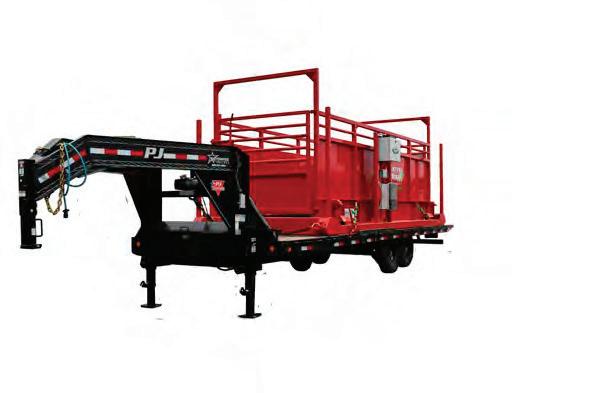




L. Hogue
Registered Black Angus
Judy Hogue
Spring Hollow, Brownwood, Texas 76801
Ranch: 10108 CR 237 • Phone: 325-643-2225 Cell: 325-647-9168 • Fax: 326-643-6235
Email: rlhmd@familymedical.us
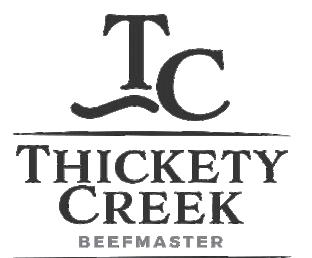
WWW.LITTLEROBEANGUSRANCH.COM




STEVE & GINGER OLSON (806) 676-3556 Steve@olsoncattle.com

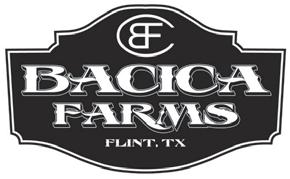





Greg







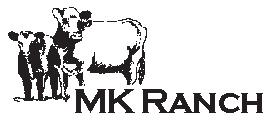

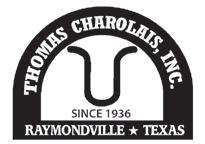





Caleb Boscamp 830-857-5189
Julie Boscamp 830-857-5129 julieboscamp@yahoo.com 303 County Road 459 • Waelder, TX 78959 www.arrowheadcharolaisranch.com Dennis Cha r olais Bull s 40 years of selective breeding/performance testing for… Easy Calving and… Explosive Growth
Eric and Angie Dennis Saint Jo, TX 940/995-2161 940/841-2792 Cell Curtiss Nipp 580 513.3555



Herefords Since 1938” 923 Hillside Ave. Canadian, TX 79014 806-323-2906 lee@indianmoundranch.com www.indianmoundranch.com Lee & Jacqui Haygood
.T . E chols DVM





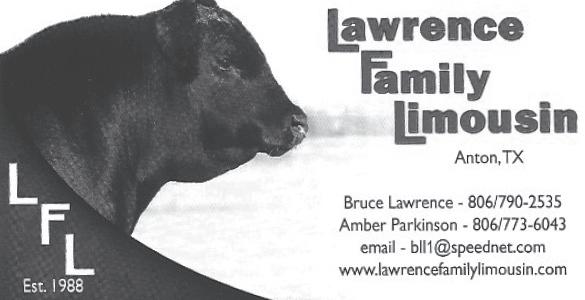













From The Home of “Reputation” Breeding Santa Gertrudis Since 1936 SANTA GERTRUDIS CATTLE Box 869, San Diego, Texas 78384 Ranch: 361-701-5683 JOHN MARTIN RANCHES
BRIGGS RANCHES P.O. Box 1417 Victoria, Texas 77902 361/573-7141

Traylor Division San Roque DivisionSan Carlos Division Bloomington, TX Catarina, TXRio Grande City, TX Joe Jones-Manager • 361/897-1337
SATURDAY, MAY 4
Replacement Female Sale
Where: Jordan Cattle Auction, San Saba When: 10 a.m.
MONDAY, MAY 6
Gardiner Angus Ranch: 9th Annual Meating Demand Bull Sale Where: Ashland, Kansas
6666 Smokehouse Creek Fire Relief Benefit Where: Fort Worth
MONDAY, MAY 6 –
WEDNESDAY, MAY 8
TSCRA Policy Committee Meetings Where: Fort Worth
TUESDAY, MAY 7
TSCRA Ranch Gathering Where: Hondo When: 5:30 p.m.
TUESDAY, MAY 7 –
WEDNESDAY, MAY 8
Oklahoma FFA Convention Where: Tulsa
THURSDAY, MAY 9
Wichita Falls Luncheon
Where: McBride’s Steakhouse, Wichita Falls When: 11:30 a.m.
THURSDAY, MAY 9 –
SUNDAY, MAY 12
Western Heritage Classic Where: Abilene
FRIDAY, MAY 10
TSCRA Ranch Gathering
Where: Western Heritage Classic, Abilene When: 5:30 p.m.
THURSDAY, MAY 16 –
FRIDAY, MAY 17
Noble Land Essentials Where: Stephenville
SATURDAY, MAY 18
Lone Star Angus: Registered Female Sale Where: Gainesville
TUESDAY, MAY 21
Ranching 101: Fence Facts Where: Online When: 1 p.m.
MONDAY, JUNE 3 –
THURSDAY, JUNE 6
Texas 4-H Round Up Where: College Station
THURSDAY, JUNE 6 –
SATURDAY, JUNE 8
High Plains Ranchers & Breeders Assoc.: Horse Sale & Ranch Horse Futurity Where: Amarillo National Center
TUESDAY, JUNE 11
TSCRA Ranch Gathering Where: George West When: 5:30 p.m.
TUESDAY, JUNE 18
Ranching 101: Direct-to-Consumer Beef Sales Where: Online When: 1 p.m.
FRIDAY, JUNE 21 –
SUNDAY, JUNE 23
TSCRA Summer Meeting Where: Hyatt Regency Hill Country, San Antonio
MONDAY, JULY 8 –
WEDNESDAY, JULY 10 NCBA Summer Business Meeting Where: San Diego, California
WEDNESDAY, JULY 10 –
SUNDAY, JULY 14
Texas FFA Convention Where: Houston
THURSDAY, JULY 11
Wichita Falls Luncheon Where: McBride’s Steakhouse, Wichita Falls When: 11:30 a.m.
SUNDAY, JULY 14 –
THURSDAY, JULY 18
Texas County Agricultural Agents Association Meeting Where: Dallas
TUESDAY, JULY 16
Ranching 101: Actions Affecting Calf Prices Where: Online When: 1 p.m.
WEDNESDAY, JULY 17 –
SUNDAY, JULY 21
43rd Texas Ranch Roundup Where: Wichita Falls
THURSDAY, AUG. 1
TSCRA Ranch Gathering Where: Crockett When: 5:30 p.m.
MONDAY, AUG. 5 –
WEDNESDAY, AUG. 7
Texas A&M AgriLife Beef Cattle Short Course Where: College Station
TUESDAY, AUG. 20
Ranching 101: Beef Exports Equal Producer Profit Where: Online When: 1 p.m.
Texas & Southwestern Cattle Raisers Association Leadership Development Foundation’s Working Grant Program aims to provide financial capital to those starting or growing a business in ranching, beef production or related area supporting the beef value chain.
The Working Grant Program is open twice yearly in May and November to applicants in Texas and Oklahoma. In addition to financial assistance, it provides access to mentorship, educational resources and networking opportunities.
The TSCRA Leadership Development Foundation is a nonprofit 501(c)(3) committed to future generations of land and livestock stewards and leaders.

For questions or more information on the Working Grant Program, please email education@tscra.org or call 800-242-7820. Visit tscra.org to apply.

The connection between a rancher and a ranch horse can be difficult to explain to those unfamiliar. Only countless hours in the saddle can begin to describe the working relationship between a horse and its rider.
The 100-year-old cover of The Cattleman celebrates this cherished bond. Pictured horseback is Mrs. Ned Coumbe, of the L-5 Ranch near Dillon, Colorado; and Tom Graham, son of Ralph Graham, of Kaw City, Oklahoma, on his favorite pony, Spot. T C
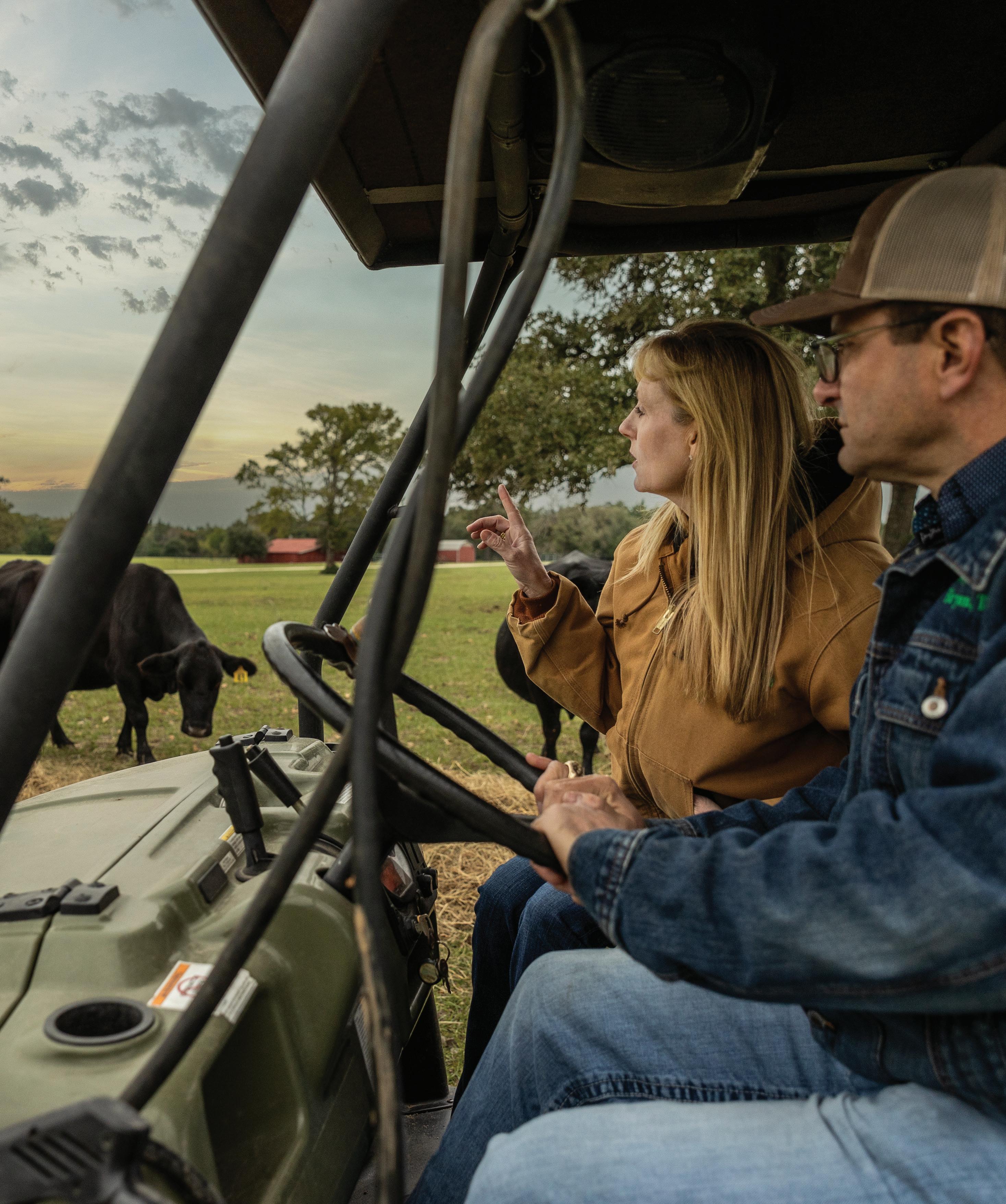
There’s a lot of irons in the fire when you’re a rancher. You need to manage your land, tend to the herd and maintain their health and safety. And as a professional rancher, you understand, even as good as you are, you sometimes need help. That’s where we come in. We offer insurance coverage that’s customized to your needs to protect you, your herd and your operation. That way you can focus on what’s important … all those other irons. To learn more, visit CapitalFarmCredit.com.
